




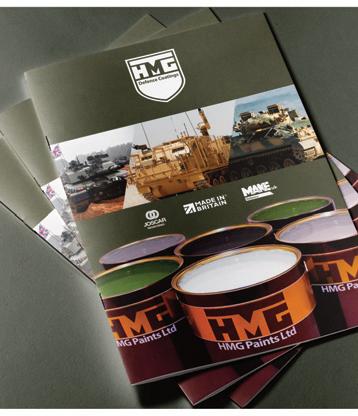







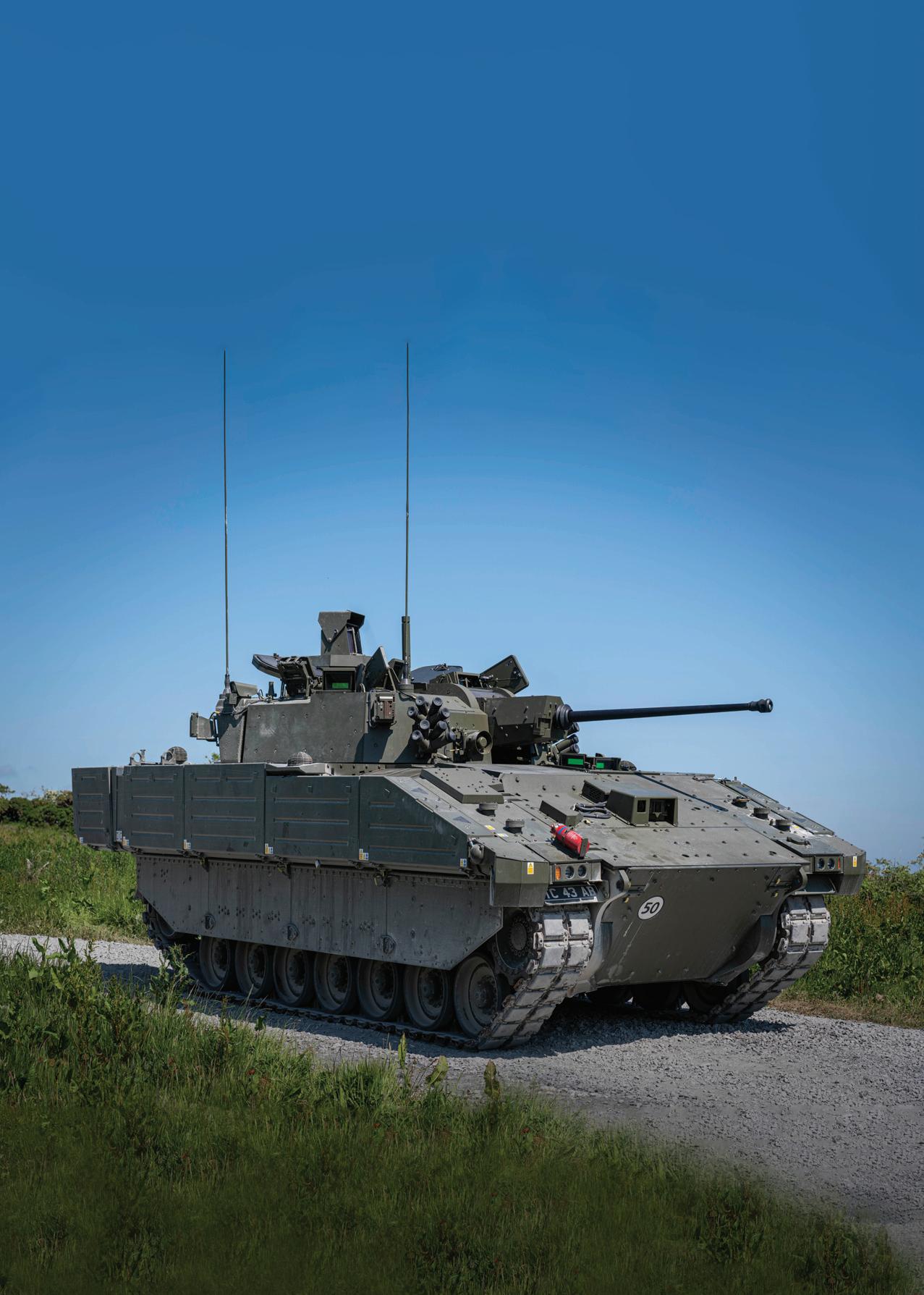

















The battlefield is no place for compromise.
War昀ghters shouldn’t have to choose between mission-critical performance and innovation. That’s why Leonardo DRS’ proven platform computing & AI, GVA compliant processing systems are both. Our sensor and network integrated systems are linking legacy, current and future capabilities together - connecting war昀ghters to the actionable mission information they need, all while protecting from cyber threats and reducing size, weight, power and cost (SWAP-C) — ultimately enabling situational understanding.

As an established web portal for the International Defence & Aerospace Industry, we strive to provide a comprehensive and detailed listing of Military Equipment Suppliers, Products and Services. This magazine is designed to keep you up-to-date with latest news and events within the Defence Industry’s Governing Bodies, Organisations and Companies.
For more information, technical guidance or the latest subscription packages available for Military Systems, please contact us where one of our team will be more than happy to advise you.




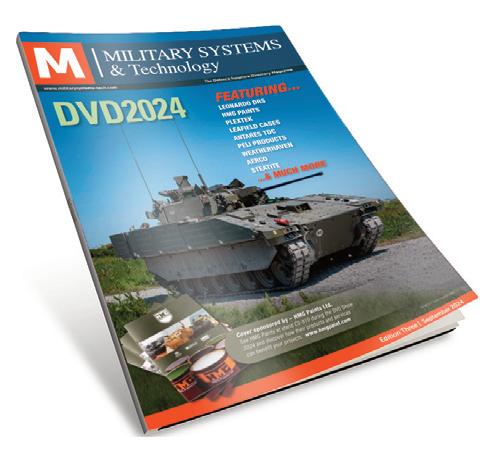






The themes for DVD2024 have recently been announced, and with a focus on working together to pull the future into the present, the event will be closely following the sustainability and technology targets that will enable transformation.
Keen to find out more about how the British Army is embracing low carbon technologies to gain an operational advantage, whilst ensuring it is capable of dealing with the challenges presented by climate change, we spoke to Army Headquarters’ Climate Change and Sustainability Team. How is the British Army transforming for a sustainable future?
The Army recognises that the impact of climate change and sustainability is a totemic issue; it must be considered in everything we do, addressing both the causes and consequences. Our goal is to operate as a climate change and sustainability leader within the MOD, across government and our allies, embracing transformation to secure competitive advantage.
Whilst the Army is committed to incorporating the climate change and sustainability principles, its primary purpose of protecting the British people and the UK’s interests at home and abroad remains our focus.
The Army has initiated Project TERRA to deliver a coherent, costed and profiled plan against carbon targets, climate change and sustainability initiatives. The Project TERRA directive considers the impact of climate change in contexts such as military training, personnel wellbeing, equipment capability, procurement, estate operations, and civilian infrastructure.
In consultation with KPMG, the Army is using the Defence Climate Risk Assessment Methodology to map out risks and opportunities that may arise on our journey towards Net Zero and build our adaptation and mitigation pathway. As this engagement develops, it is important to

acknowledge that risk assessment is playing a fundamental role in shaping our approach to achieving Net Zero targets.
How is the Army harnessing electric and hybrid technology within its vehicle fleet, both today and in its plans for the future?
As the Sectoral Lead for Surface Transport (excluding white fleet), the Army is considering options for achievable levels of operational emission reduction through studies, trials and support to the Defence Operational Energy Strategy. These include:
• Technology Demonstrator #6 (TD6) – Battlefield Electrification. The Army has invested c£14m in Battlefield Electrification which will inform hybrid-electric requirements for future capabilities. Electrification is one of five Army Futures Research and Experimentation strategies directing the technology-driven transformation of Army. TD6 was initiated in 2018 to experiment with Hybrid Electric Drive (HED) technologies on three in-service platforms, SV truck, FOXHOUND and JACKAL reconnaissance platform. Testing has indicated that HED will offer significant improvements in tactical and operational advantage, reduce logistic need and simplify the supply chain, offering long-term savings.
• Project LURCHER. This is a pre-procurement exercise, working with Electrogenic and Babcock International, to assess the real-world issues of having EV technology in battlefield situations. Four British Army Land Rovers are trialling electric power for UK military vehicles, with early benefits including straight line speed, safety travelling downhill, reduced thermal and acoustic signatures and increased exportable power to unlock "novel mission systems”. Lowering thermal signatures could also delay detection from enemy drones and the electric propulsion being trialled could offer greater stealth advantages. The trials also highlight that

transitioning to electric will present fresh challenges for maintaining, driving and fixing Army vehicles, while engineer training will need to adapt in line with new and emerging EV technologies.
• Over the past 12 months the Army has conducted a number of Power/Energy Research and development activities, including smart microgrids and advanced energy storage.
How will adopting new technologies ensure the British Army becomes more sustainable, whilst also enhancing its capabilities?
Climate change and sustainability compliance will enhance the Army’s operational effectiveness both at home and overseas. By embracing the opportunities from low carbon or sustainable technology we can maintain and grow our strategic advantage and enhance our capability while reducing our logistic tail, optimising resources, and minimising wastage. Moving to renewable energy sources has the dual advantage of significant tactical and operational advantages in addition to reduced emissions. For example, research taking place around electric drive vehicles aims to prevent delays to logistical supply, enabling the Army to operate both for longer periods without resupply and at greater reach across an increasingly dispersed battlefield.
How is the Army using other fossil-fuel alternatives, such as solar power, to drive its green future?
The Army is investing in renewable energy opportunities, such as ground mounted solar photovoltaic panels installed under Project PROMETHEUS. The energy generation and storage projects like PROMETHEUS and STORE provide a level of infrastructure resilience and are central to the reduction of expenditure on utilities, meeting the Greening Government Commitments and Net Zero targets. The impact of this is being amplified with investment in technology to reduce energy consumption like LED lighting and investment in building energy management systems.

are the opportunities
While still in concept phase, one of the seven objectives of the Land Industrial Strategy is to proactively support environmentally sustainable and responsible vehicles. Through the development of digital twins and synthetic training systems, the Army is investigating options for reducing the amount of live training and thus carbon footprint while maintaining operational effectiveness. Reducing obsolescence in projects like the Land Deep Fires Programme is also seeing the removal of harmful legacy substances such as ‘F’ gases and lead.
On the estate, we have a programme to improve Single Living Accommodation (SLA), starting at sites in poor condition, which will benefit both our people and the environment. The SLA programme is using modern methods of construction and off-site modular manufacturing processes to reduce embodied carbon and manufacturing costs. These methods are designed to minimise operation energy usage and are fit for future Net Zero Carbon measures.
On 18th and 19th September 2024, industry and Defence in the Land Equipment sector will meet at UTAC Millbrook for two days of coordinated engagement, on subjects such as this. Jointly sponsored by Defence Equipment & Support (Land Equipment) and Army Headquarters, DVD2024 will provide opportunities for industry and key MOD stakeholders to discuss ‘Battle Winning Ideas’, resilience and collaboration, delivering increased capability and the ability to exploit innovation.
For further information visit:

Through more than 20 years of development and combat experience, Leonardo DRS’s industry leading C4ISR integrated platform networking capability has provided commanders and platform operators the ability to easily control and interface with sensors, communications equipment, mission command applications, and navigational devices. This proven technology has delivered cutting-edge tactical computing and networking solutions to customers around the globe giving them a situational awareness advantage from a workstation in a range of ground combat platforms, fires outposts and command posts.
Today, the Bowman C4ISR system is more powerful than ever with the latest processing systems and a range of upgrades, including A.I. to extend the reach out to the tactical edge. Leonardo DRS has delivered more than 14,000 Bowman units to the United Kingdom’s ground combat forces. They have relied on its networking system through numerous military campaigns because of the wide range of capabilities that deliver a common picture for users across the battlespace. From voice, video and data, the devices can be connected across the tactical network with adjacent platforms, remote or mobile command posts, higher headquarters, as well as with coalition partners.
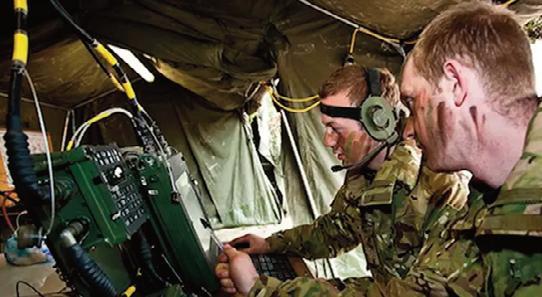

Like the U.S. military’s Mounted Family of Computer System (MFoCS) C4ISR system from Leonardo DRS, Bowman is designed to be agnostic to the network and applications allowing the end users to adopt best-of-breed solutions in terms of communications and data applications such as Blue Force Tracker.
At the heart of this system is Leonardo DRS’s line of ultrarugged, military-standard qualified hardware and software solutions. The scalable system also provides new capabilities to integrate various platform C4ISR devices with significant reductions in size, weight, power and cost.
DRS’ ultra-rugged tactical computers are designed to allow for ongoing technology insertion and upgrades. Over the course of large-scale projects such as Bowman and MFoCS, Leonardo DRS has been able to use the same base infrastructure to deliver ever-increasing amounts of capability as computing, network and security technology advanced. Leonardo DRS’s next generation tactical networking and computing products are now more powerful than ever with Intel multi-core technology, graphical processors, and new interfaces for future expansion

to meet emerging needs. The ability to use the current infrastructure and upgrade the current systems is more costeffective than buying lower-grade commercial off-the-shelf systems and ensures that there is no compromise regarding the environmental performance of the system.
Leonardo DRS’s tactical computing and networking products are the choice of a growing number of demanding end-users. These systems are installed and operational in over 425,000 ground vehicles and command posts with allies across the globe. These systems are delivering unparalleled performance in terms of reliability, availability and cyber secure resilience. In addition to the U.S. and U.K. installed bases, end-users are in the Middle East and Europe with the Polish Land Force and Romanian Army. In Southeast Asia, they are in Thailand and Indonesia as well as Australia and Taiwan among others.
As the battlespace becomes more complex, Leonardo DRS’s Land Tactical C4/5i hardware and software architectures are also changing to meet new and emerging requirements. Today, the company has advanced its tactical C4/5i systems by integrating both A.I.-based advanced sensing technologies with network and application-agnostic tactical computing and networking, while adding dismounted soldier situational awareness as a core new capability.
Bringing together our advanced sensing capabilities in areas such as EW, Radar and Electro-Optics with modular tactical, AI based computing is a logical and necessary step in the continuous effort to ensure our customers have the tools to sense and counter an increasing number of asymmetric threats on the battlefield.
A.I.-based advanced sensing has the potential to significantly enhance situational awareness, decision making and operational efficiency. In the Intelligence, Surveillance and Reconnaissance space, Leonardo DRS’s multi-sourced data fusion capability integrates various sensors to provide a comprehensive operational picture improving reaction times and reducing the cognitive load on commanders and crew by providing actionable options associated with a range of systems such as Electronic Countermeasures and Signals intelligence, Counter-IED and Proximity Protection of mobile and fixed sites.
The key technologies supporting these developments include


A.I. machine learning processors supporting pattern recognition and anomaly detection aided by deep learning which enhances image and signal recognition greatly improving the accuracy of threat detection and identification.
As Leonardo DRS drives towards extending the reach out to the tactical edge, the company will be introducing a new secure dismounted soldier applique capable of running over various secure radios and waveforms and of supporting multiple applications such as Systematic Edge as well as tactical air control.
The dismounted soldier system will be designed to be integrated with Leonardo DRS’s advanced suite of integrated weapons sights and its next-generation, Blacklab man-portable Intelligence, Information, Cyber, Electronic Warfare and Space sensor.
Bowman is built on a long legacy of proven and reliable technology drawn from large programs such as US Army MFoCS that has grown with the ever-changing battlespace. Tomorrow’s Bowman technology will be more powerful than ever and ready for the challenging and complex threats that face today’s warfighters.
To find out more, visit Leonardo DRS at DVD stand number OR24, or at: www.LeonardoDRS.com/platform-computing


For anyone with paint and coatings questions at the DVD Show at UTAC Millbrook, taking place in September then Stand C3-819 will be the place to go.
HMG Paints, the UK’s largest independent paint manufacturer have coatings covered at DVD 2024. The company's team of experts will be available to answer questions and offer insights into their extensive range of paints and coatings, including CARC and IRR coatings. Additionally, they’ll be bringing their new Surface Preparation & Coating Application Guide.
The new Surface Preparation & Coating Application Guide launched

earlier this year and was developed in partnership with Corrodere Academy and is the ultimate guide to all things paint. The guide is a one stop shop for all things paint related from preparation basics, blast cleaning standards, application information, coatings arithmetic and detailed equipment information, all of which is supported by HMG’s technical support.
"The new guide has been a great tool for our customers, especially combined with the training and application support the HMG team provides, it really is a winning combination." said Alan Sharples, Defence Sales Manager at HMG Paints. "There is nothing more we enjoy than talking paint and we’re looking forward to DVD Show so we can help with any paint and coating questions."
Previous shows have seen HMG receive several requests for new products, which thanks to their agile manufacturing structure and integrated R&D facilities has led to two new products being developed.
The first of which is a brand-new Anti-Slip Walkway coating for brush application for use on land vehicles and ground equipment . DEF2302037 is a high solids, two pack Polyurethane finish which when used over an appropriate primer, satisfies the infra-red camouflage requirements of DEF STAN 00-23 and the Chemical Agent Resistance Coating (CARC) requirements of DEF STAN 00-72.
A second product which has come from collaboration with industry partners is a 2 pack Polyurethane primer system which surpasses the requirements of Def Stan 80 – 225 for land based military equipment. The DEF2301001 Light Grey Polyurethane Primer boasts an impressive capability to endure over 2,000 hours in BS EN ISO 9227 salt spray conditions, making it a standout performer in demanding, high-stress environments.

As a British based manufacturer HMG can provide fast delivery across its entire range, something which the company believes can benefit businesses from primes and OEMs to refinishers. “Having a short lead time on products, and a number of key products within our portfolio on stock is hugely advantageous to our customers,” commented Paddy Dyson, HMG Paints Marketing Manager. “Being able to ship our products across the country in a matter of days allows us to assist customers during periods of surge demand and allows them greater flexibility with their production challenges.”
Don't miss the opportunity to connect with HMG Paints at stand C3819 during the DVD Show 2024 and discover how their products and services can benefit your projects. To book in a meeting in advance at the show you can email the team at defence@hmgpaint.com. Attendees can expect to receive personalised technical advice tailored to their specific requirements, as well as gain valuable insights into the latest trends and advancements in the field of coatings technology.
HMG is also JOSCAR certified which means Primes can speed up their access to HMG’s defence portfolio, and all products are also Made in Britain certified. The HMG Defence range offers products which are free from Chrome VI, meet low VOC requirements, IRR and CARC paints and includes military standards such as 80-225. Alongside Defence Standard products, HMG produce a wide range of approved high-quality coatings for practically every purpose for the defence industry. You can find out more about HMG’s range of Def Stan products and bespoke coatings development service at www.hmgpaint.com/products/landing/Defence


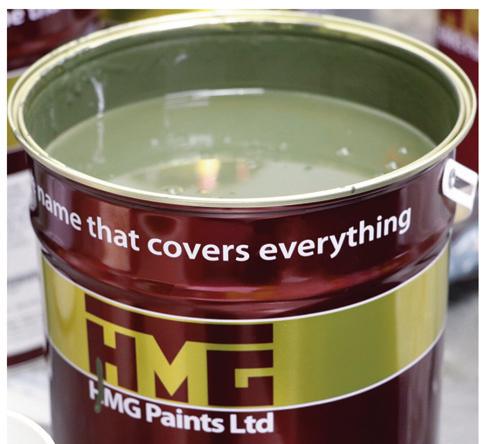

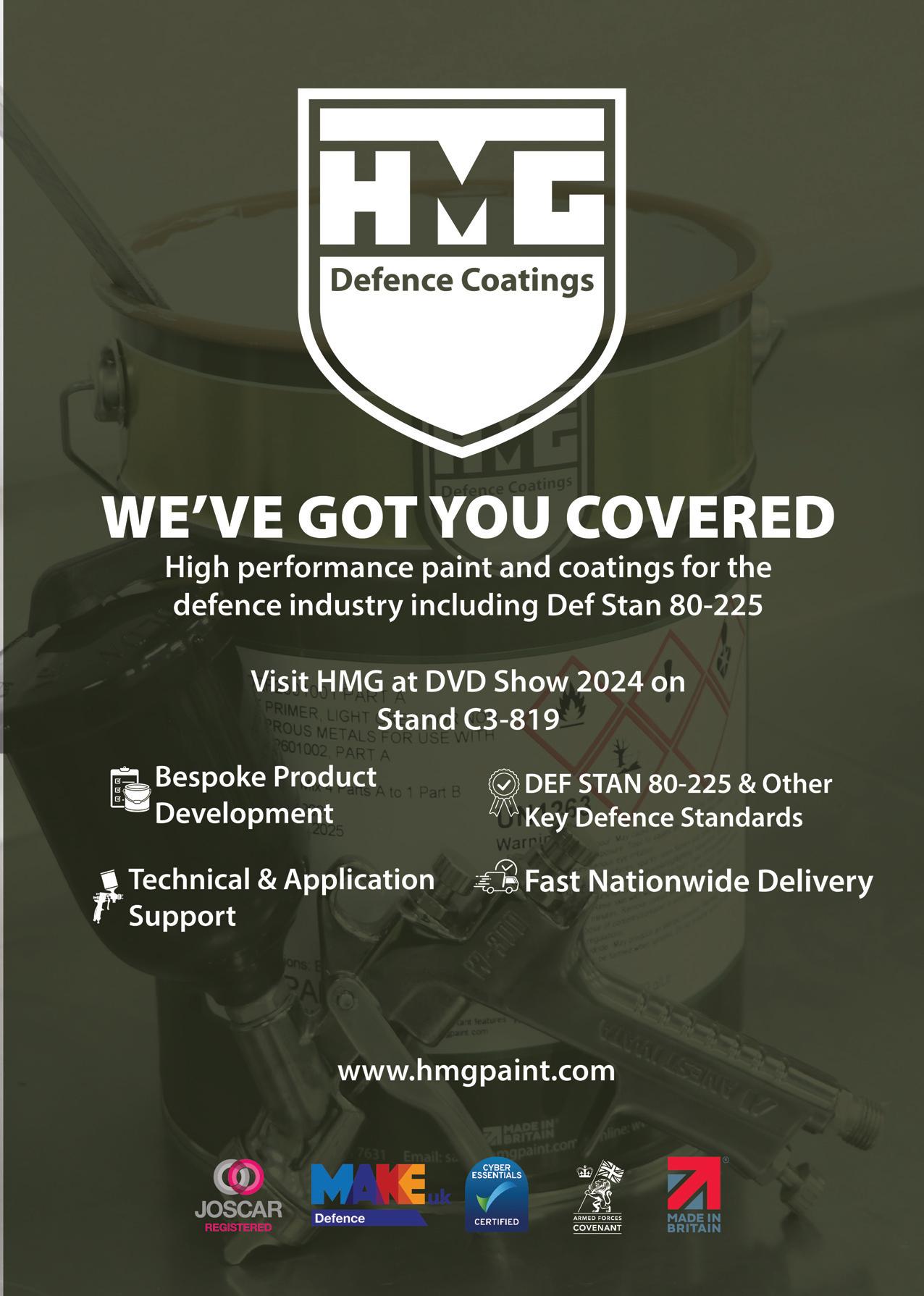
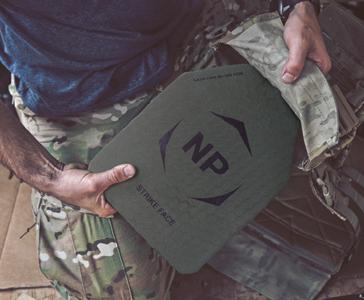




As a leader in engineering and technology within the defence industry, at Plextek we have a rich heritage of solving complex problems for over three decades.

Originating from the ‘Cambridge Technology Cluster’, we have earned a reputation for transforming advanced ideas into functional, realistic solutions with a focus on outstanding engineering in radar, radio, sensor systems, and software.
With an independent approach to technology assessment and programme development, our collaborations with UK Ministry of Defence (MoD) from DSTL and DASA to DE&S and the FLC Innovation Hubs, highlight Plextek's ability to drive innovation in highly sensitive and demanding areas. Our contributions to projects related to alternative positioning, navigation, and timing (Alt-PNT), communications and networks, electronic warfare (EW), and radar demonstrates our depth of knowledge.
We provide comprehensive consultancy services from applied research for future concepts to the realisation of mid-TRL (Technology Readiness Level) demonstrators into scalable solutions. This ensures a smooth transition from theoretical research to practical implementation. As a design and supply partner, we support our clients to bring advanced defence products to market, whilst meeting strict technical, quality, and regulatory guidelines.
Our commitment to the defence sector is supported by our vision to enable autonomous systems, reduce cognitive burden, and aid

Ubiquitous Radar (PLX-U16)
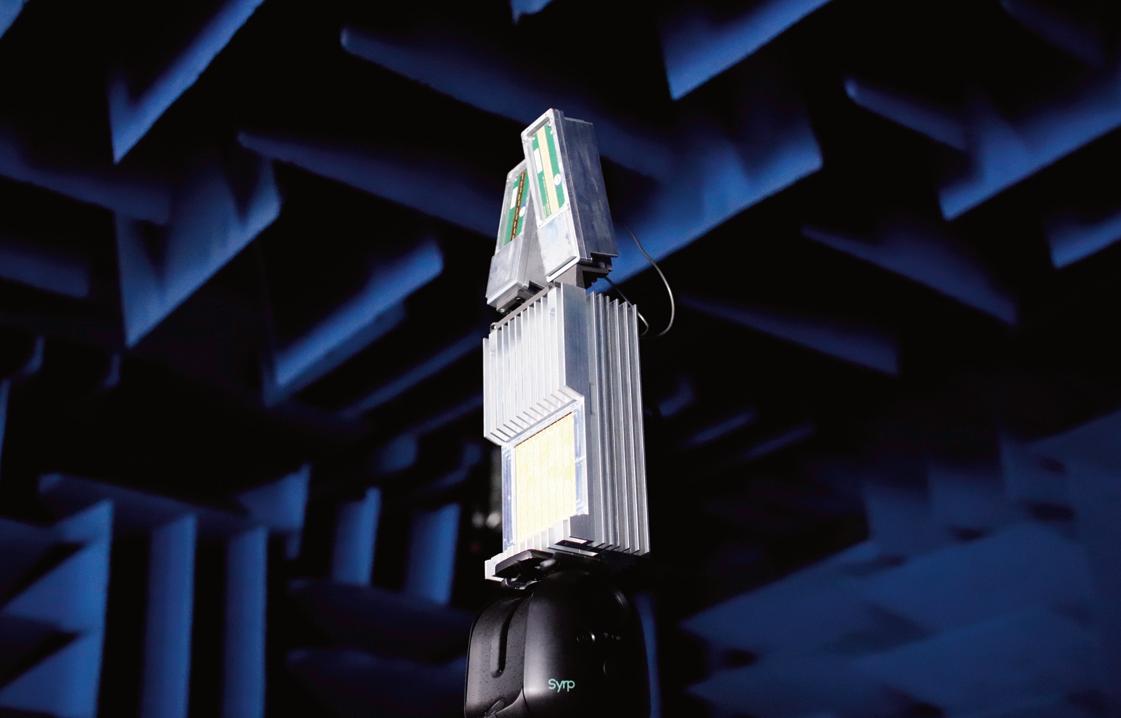
mission survivability. At Plextek, we are focused on enabling the next generation of defence capabilities through our proven track record of novel concepts and technology innovation.
Plextek’s cutting-edge radar technology offers exceptional capabilities for the defence sector. Our range of solutions, specifically designed to tackle modern challenges, provides reliable and versatile systems for various applications from ground surveillance to airspace security.
Our mmWave radar applications range from terrain-referenced navigation, ensuring precise location guidance, to Remote Pilot Operations (RPO)/docking for improved asset management and control in space-based applications. Perimeter security is another crucial area where our radar systems offer unmatched reliability for continuous surveillance, giving a 24hr capability, suitable in all-weather applications.
Read on to learn more about four key areas of our technology platforms: Ubiquitous Radar, configurable mmWave radar modules, Dismounted Position & Navigation Sensor (DPNS) and our configurable IoT Framework. Discover how these innovations can enhance operational autonomy, reduce cognitive burden and aid mission survivability in defence applications.
The PLX-U16 Ubiquitous Radar has been designed and developed to reliably detect, track and classify small Unmanned Air Systems (UAS). Drones are now widely available in commercial, industrial and consumer markets. Reliably detecting, tracking and recognising
drones can be problematic particularly in urban areas where line of sight is diminished.
Our low Size, Weight, and Power (SWaP) and low-cost radar has been designed and developed to address these issues. Plextek’s PLX-U16 ubiquitous radar can see the whole scene, all of the time, enabling extended dwell time, allowing the system to detect and track multiples of targets.
Unlike traditional scanning radars that focus on a narrow beam, the PLX-U16 continuously monitors the entire scene, which allows for extended dwell time. This capability enables the system to detect and track multiple targets simultaneously, enhancing its effectiveness in various applications.
The platform can be used for a wide and diverse range of applications, for example:
• Mounted on drone/helicopter as a forward-facing radar to provide medium range (500 m – 1km, depending on target size) detection capability against other airborne targets.
• Downward facing to enable measurement of ground-Doppler to assist in GPS-denied navigation.
• Deployable radar in congested environments (e.g. on ground, side of buildings) – as part of a distributed sensing system.
• Infill/Overwatch radar (to plug gaps in the coverage of other wide area surveillance systems).
Core capability:
• Power consumption 45 W
• Physical size 337 mm x 100 mm x 60 mm
• Transmit Frequency within 15.7-17.2 GHz (Ku-band)
• Transmit Power 1 W typical (2 W Max)
• Field of view 120° x 20° (electronically-scan on transmit concept to enhance to 90°)
• Maximum instrumented range 800 m (greater ranges attenuated by anti-alias filters)
• Weight 1.4 kg
• SAPIENT Compliant
Plextek stands out in the radar technology landscape for its emphasis on low-SWaP and cost-effective solutions. Our PLX-T60 technology platform enables rapid development and deployment of custom mmWave radar solutions at scale and pace.
The mmWave technology can be customised for your specific application:
• Build on our technology, giving you a head start on the competition.
• Benefit from our long history and deep experience to accelerate your project.
• Access a large team of exceptional engineers in an instant.
Over the last 6 years alone Plextek completed 40+ radar developments, across multiple markets and applications, with 25+ developments in mmWave
Our collaboration with leading global semiconductor company Texas Instruments demonstrates our capability and the level of trust we have built within the technology community. As one of their chosen partners, we take pride in consistently contributing to Texas Instruments success over an extended period.
Understanding that one size does not fit all, the PLX-T60 is designed with flexibility at its core. Around 80% of the development is preconfigured, leaving room for that crucial 20% customisation based on your needs. This approach ensures that you receive a solution that is both advanced and perfectly aligned with your application requirements.
Plextek has developed a suite of credit card-sized mmWave radars (operating around 60-64 GHz) suitable for both ground-based (e.g. perimeter security and CUAS), airborne (e.g. sense to avoid, terrain reference navigation) and in-orbit (e.g. space debris, rendezvous and proximity operations) missions. These ultra-low SWaP-cost radars achieve extremely fine range and velocity resolution and can mitigate significant levels of clutter.
We give competitive edge: your custom solution is built on a reliable and proven base. Using solid-state technology, renowned for its consistent dependability, our platform offers a highly valuable advantage in your application where reliability is crucial.
DPNS works in GNSS degraded or denied environments, such as subterranean or in buildings.
We developed a boot mounted positioning system providing location estimates to the dismounted user in GNSS enabled, degraded and denied environments, such as subterranean, under canopy or in
building. This self-contained device can be interfaced with systems such as ATAK and maintains low positional error over distance travelled.
The boot-mounted unit shown consists of an array of inertial measurement units. A motion-processing algorithm converts data from the IMU array and barometer into a 3D estimate of displacement relative to an initial start position. The boot-mounted unit forwards this displacement data to the End User Device (e.g. Android smartphone).
The Android smartphone then fuses the displacement data from the boot-mounted unit with referenced position data from its GNSS receiver, when it is available, such that when GNSS is lost, the position of the user can be continually estimated from displacement data from the boot-mounted unit alone.
Core capability:
• Integrated with ATAK
• Enables 3D Positioning and Navigation in a GNSS denied environment
• Operate subterranean, under canopy or in-building
• Augments GNSS (when available) to increase accuracy when available
• Less than 2% drift over distance travelled
• Charged wirelessly via QI standard charger
• 12 hr mission life
Plextek’s configurable IoT framework enables rapid development and deployment of customised IoT solutions, particularly those requiring extended operation on battery power.
Our PLX-IoT consists of edge nodes, gateways and a cloud server. It provides several advantages for those seeking to design and deploy an IoT solution. Our edge nodes require no infrastructure and can last on battery power for over a decade whilst providing regular updates from sensor readings.
The edge node can host a wide variety of sensors as it supports a range of communication protocols including USB, I2C, SPI and UART. Edge nodes can communicate wirelessly up to 3 miles in urban, and 10 miles in rural areas and do not rely on cellular or other network infrastructure. The edge nodes also support edge processing, including efficient implementation of neural networks and other advanced machine learning methods including support for TensorFlow.
The gateway can support communication with several thousand edge nodes and provides the link between them and a cloud-based server via an internet connection. Wi-Fi, Cellular, Ethernet and Satellite can all be supported. Our cloud-based server provides for a convenient means to design a customised user interface meaning you can get to market quicker, with technical confidence.
Plextek specialises in low SWaP and cost solutions for Alt-PNT, Comms & Nets, EW, and Radar for the defence sector. Our expertise is not just in creating solutions but in tailoring them to meet the exact requirements of modern defence challenges, ensuring a customised, high-performance outcome for every project.
At the upcoming DVD event at UTAC Millbrook, we invite attendees to visit Plextek stand C3-108. Our team is ready to
Dismounted Position & Navigation Sensor (DPNS)

discuss our latest technological innovations that can give your operations a competitive edge, including:
• Anchor Nodes (PNTaaS): Provides geolocation in challenging environments.
• Dismounted Position & Navigation Sensor (DPNS): Precise navigation solution for GNSS-denied areas.
• Adaptable & Agile HF Antenna: The frequency-agile communication antenna.
• Rapid RF Propagation Modelling: Significantly accelerates RF system deployment.
• IFF Systems Performance Modelling (MISPEC): Enhances IFF system, enabling performance modelling of proposed IFF installation on any platform (Air, Land, and Sea).
• Modular EW Payload: Low SWaP scalable EW solutions for complex missions and platforms.
• Ku-band Ubiquitous Radar: Versatile radar solution providing broad coverage and exceptional detection capabilities.
• Low SWaP configurable mmWave Radar: Precision radar with customisable parameters to integrate into any application.
From applied research, development of technology demonstrators, to design and supply, Plextek is the ideal partner across every technology readiness level. We are committed to advancing defence technology and ensuring our partners are equipped with the latest solutions to meet defence sector challenges.
Visit us at DVD 2024 to discover how our latest developments can provide the technological edge your projects require.
"We guide our clients from conceptual frameworks to real-world applications, ensuring technologies not only meet but exceed the rigorous demands of modern defence environments. Partnering with Plextek means choosing a path of innovation supported by decades of engineering excellence.
We lead with advanced engineering solutions tailored to the defence sector’s unique needs, addressing today's pressing challenges of evolving threats and the demand for innovative technologies in an increasingly complex landscape.”
Dan Gardner, Business Development Manager.
From applied research and concept development to technology demonstrators and design through supply, Plextek is your partner at every TRL.
Visit or contact us to confidentially discuss how we can tackle your specific challenges and enhance your strategic capabilities.
Plextek is your trusted concept development and technology partner
We are experts in developing low SWaP-cost solutions for the defence sector, specialising in Alt-PNT, Comms & Nets, EW and Radar.
Come and speak with the Plextek team on stand C3-108 to discuss how we can give you the edge.
From applied research to technology demonstrators and design through supply, Plextek is your partner at every technology readiness level.

Anchor Nodes (PNTaaS)
Dismounted Position & Navigation Sensor (DPNS)
Adaptable & Agile HF Antenna
Rapid RF Propagation Modelling
IFF Systems Performance Modelling (MISPEC)
Modular EW Payload
Ku-band Ubiquitous Radar
Con昀gurable mmWave Radar
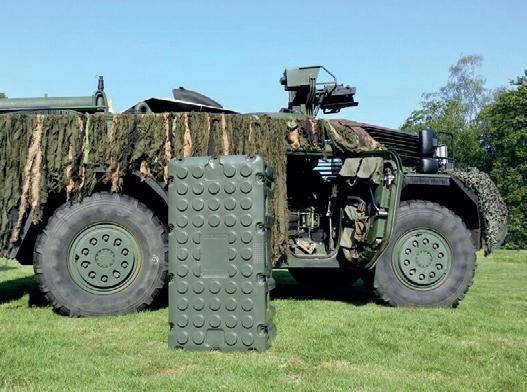








For military personnel delivering complex operations on the ground, keeping strategic equipment safe is essential.
A device damaged in transit or by extreme weather can easily risk the efficacy of a mission.
One way to ensure safety is by planning ahead and selecting a custom packaging solution that keeps a product in good condition. Another is to ensure the case material can withstand a range of terrains and environments.
Leafield Cases know that reliability is everything.
One common reason for cases to become unfit for use is case latch breakage. That’s why Leafield designed the latches on their Aegis Cases so that they can be replaced in the field without piercing the case envelope. This significantly extends the life of the case.
Aegis ruggedized cases are extremely durable. They are UV and impact resistant and have a longer useful lifespan than comparable wooden or aluminium cases that are more susceptible to impact damage. They’re lightweight too, which helps boost fuel savings in returnable transit packaging applications.
A leading UK designer, manufacturer and supplier, Leafield Cases
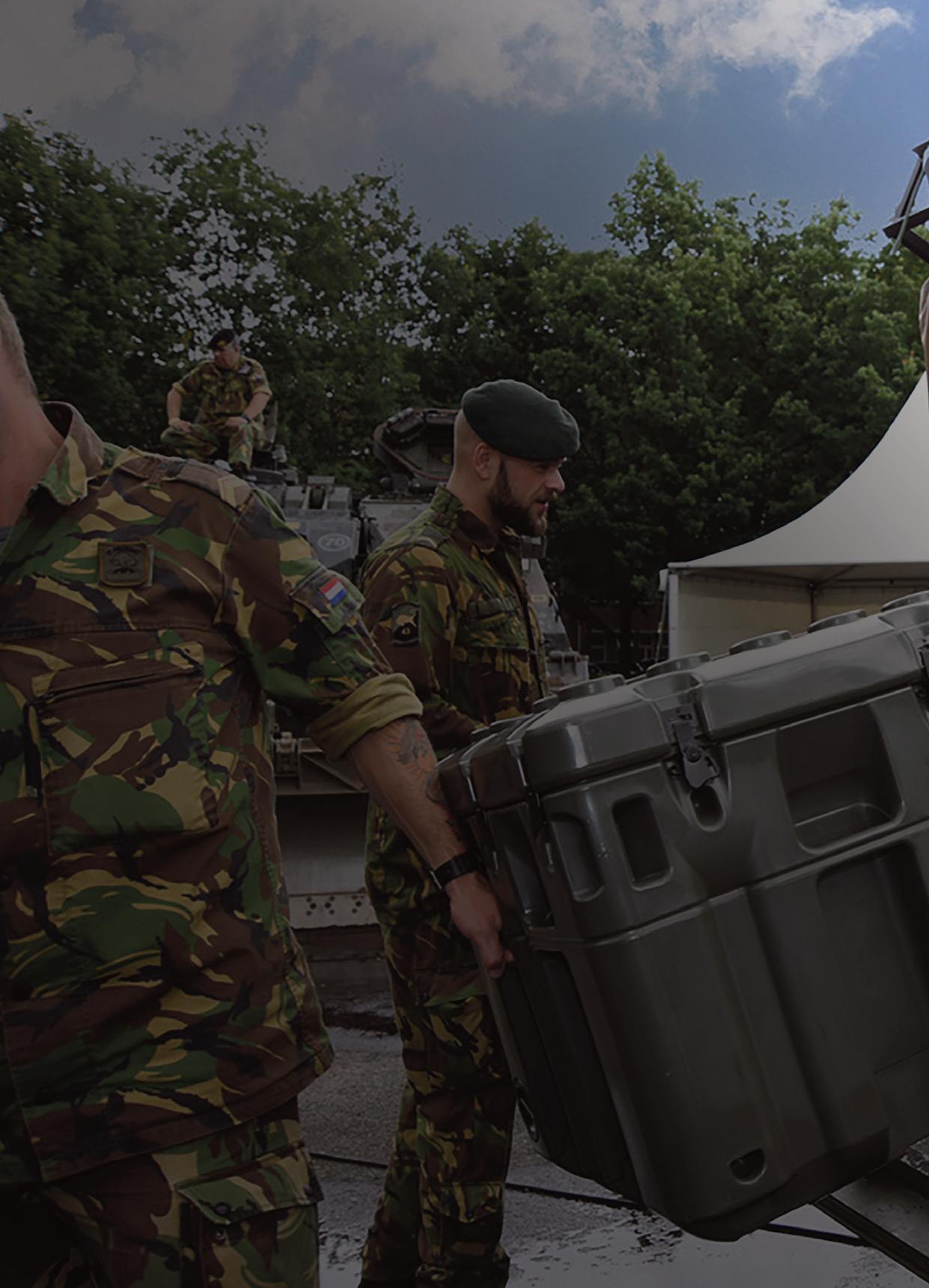
are favoured for their tough premium plastic material that can be used in the most extreme environments. Their innovative inhouse engineering design team can customise every aspect of the Aegis protective system. Whether it’s vibration attenuation or shock and impact protection required, Leafield work closely with their clients to ensure their specification needs are met from concept through delivery and installation.
Leafield value sustainability at every stage in the product lifecycle. Their products are principally manufactured using special grades of Medium Density Polyethylene (MDPE), which is 100% recyclable at the end of the product’s service life.
For more information about Leafield Cases, email cases@leafieldenv.com, call +44 (0) 1225 816504 or visit www.leafieldcases.com.
Leafield Cases will showcase their range of Aegis cases at the following events in 2024:
RüNET | 4th - 5th September | Rhein-Mosel-Halle, Koblenz | Stand C72
DVD | 18th - 19th September | UTAC Millbrook, Bedfordshire| Stand C4-514
Future Forces | 16th - 18th October | PVA EXPO PRAHA, Prague| Hall 4, Stand 434
www.leafieldcases.com
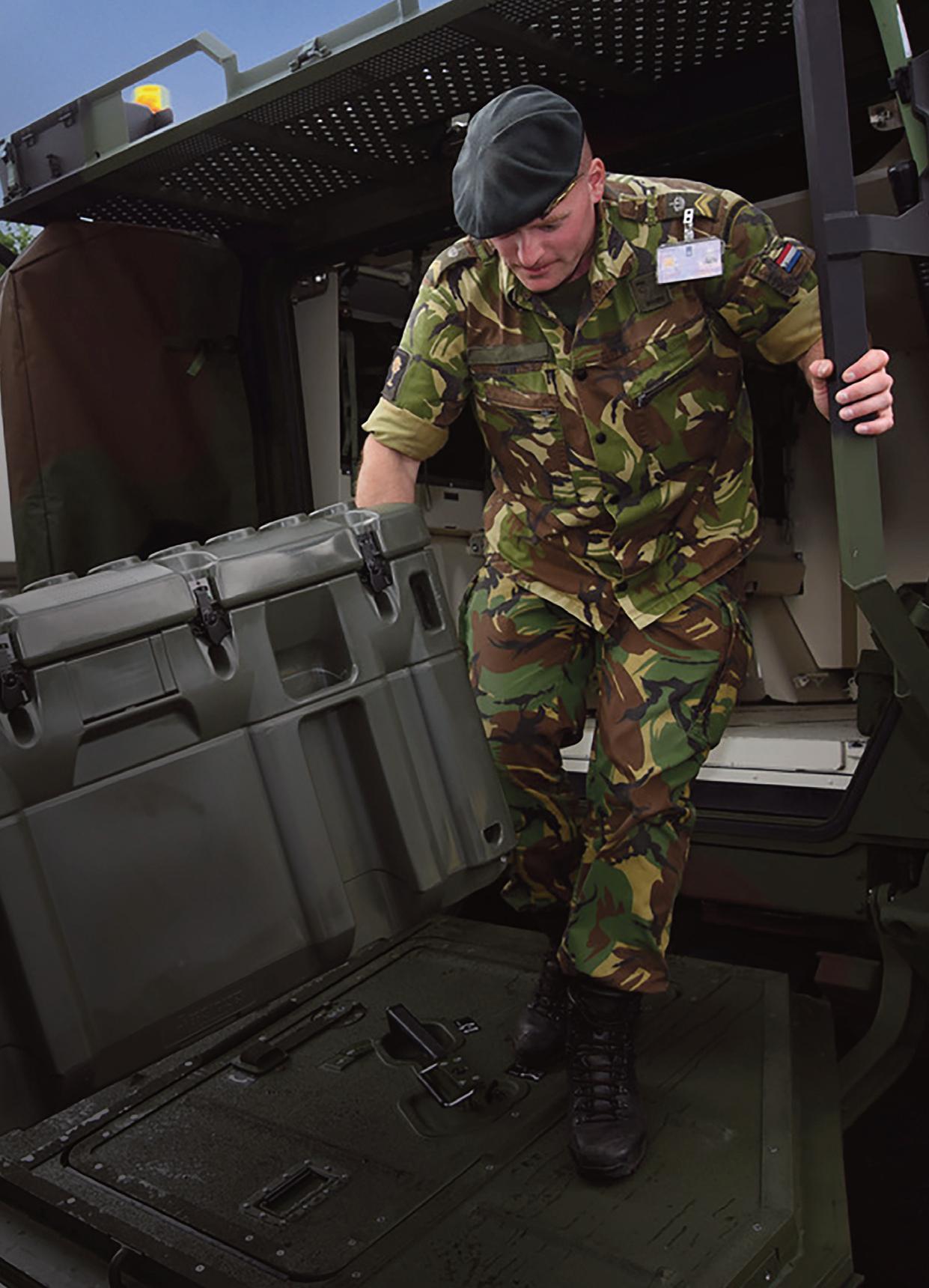
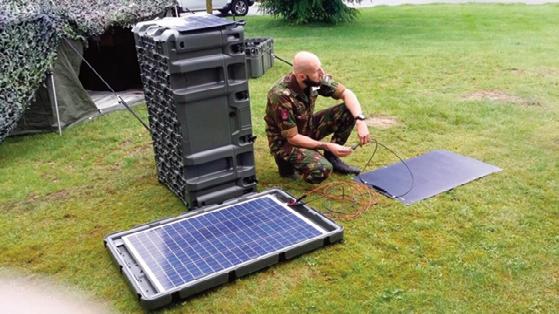

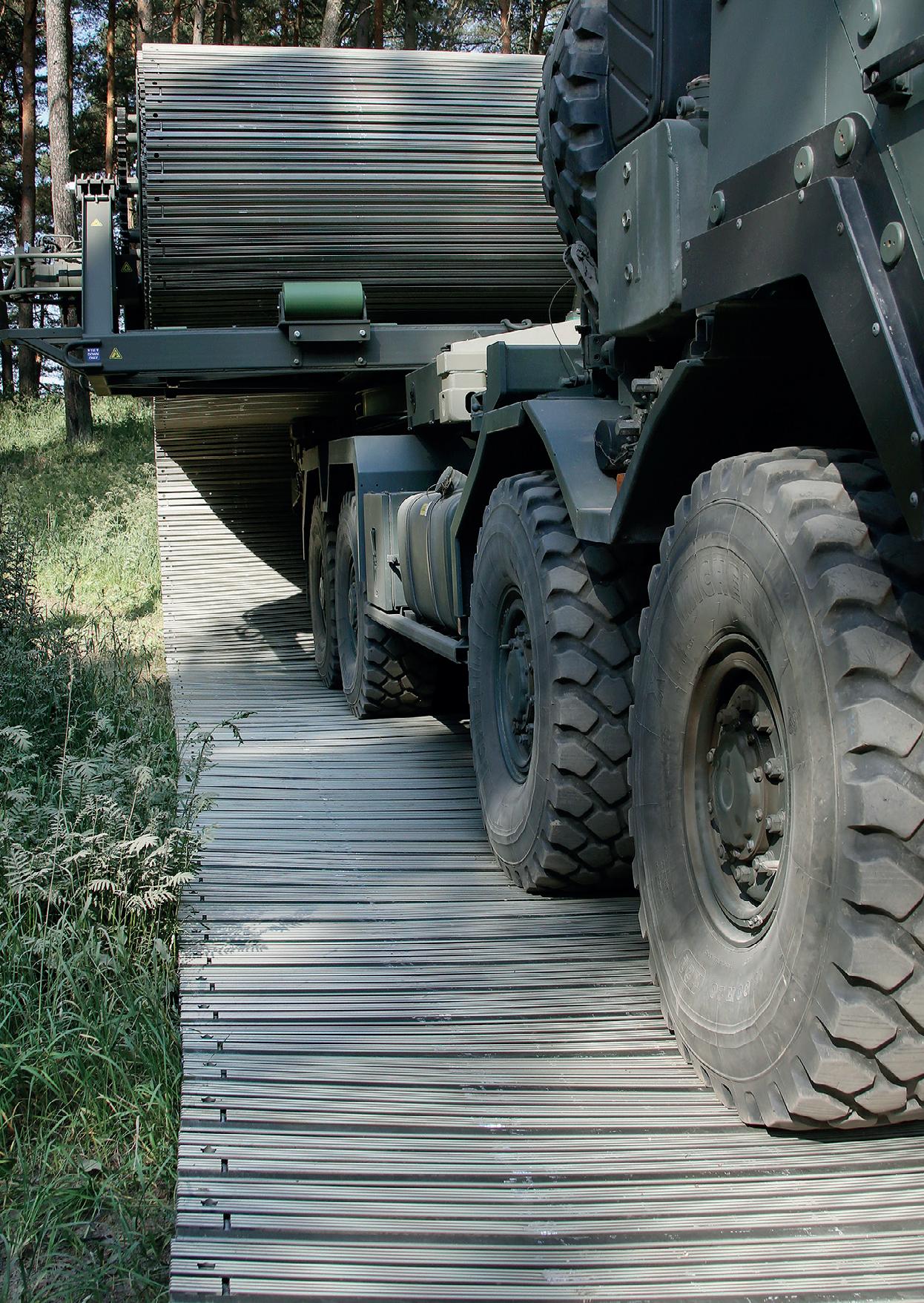
Supplying Armed Forces across the globe with bespoke ground stabilisation access, FAUN Trackway®’s solutions are unsurpassed in functionality, quality and durability, enabling vehicles to pass over challenging terrain conditions with ease.
With a heritage rich in aluminium engineering and as the original Trackway® manufacturer, the first Trackway® panel was designed and developed in partnership with the UK Ministry of Defence, with the aim of improving the mobility of vehicles and tanks in an array of environments.
With interlocking technology and quick release locking bolts, it creates stability for land and over the shore access, making it the perfect solution whatever the mission.
www.fauntrackway.co.uk








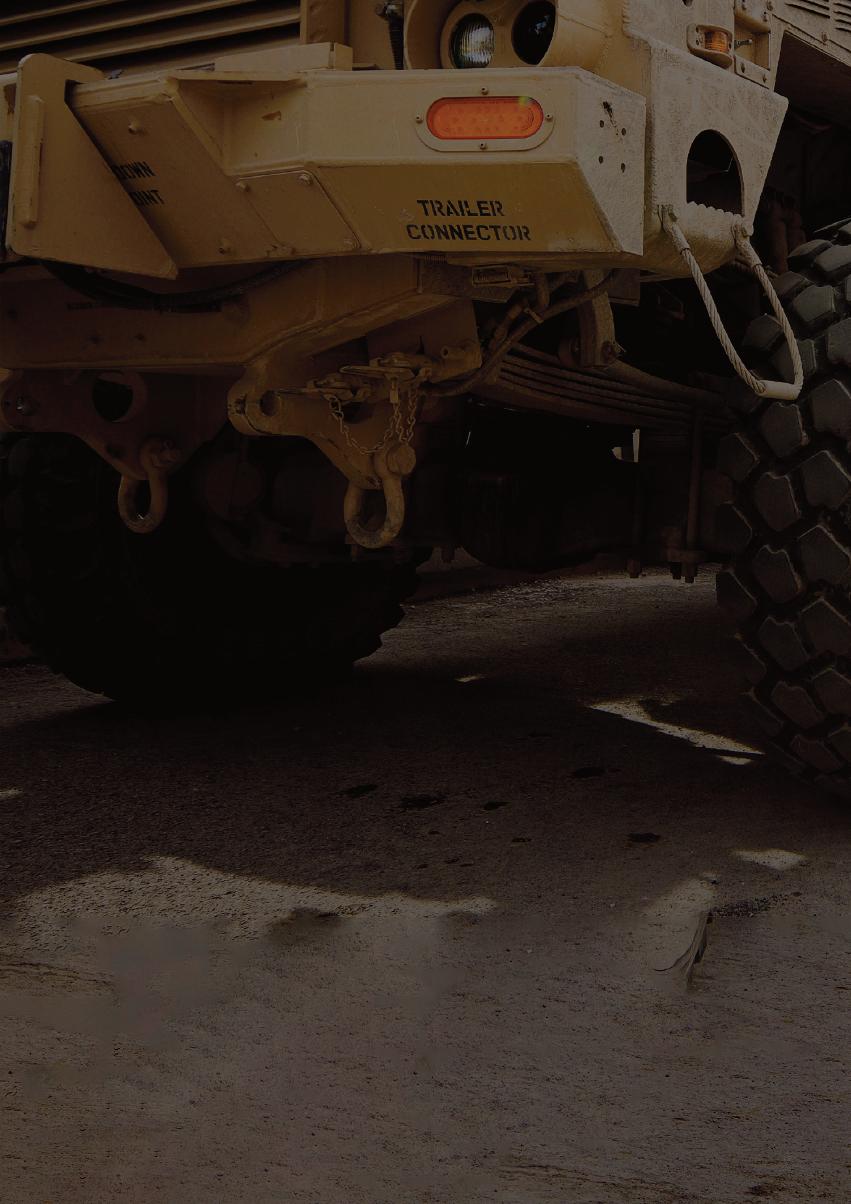
A leading manufacturer of DC Power Management (including monitoring and control) products, they specialise in the supply of electrical power and control sub-systems for the professional, defence, emergency services and security markets. These systems are designed to be simple to operate and use, but complex in what they do.
Antares systems can be found throughout the world on vehicles, remote off-grid and professional marine installations. Within the defence sector our approach is to utilise our existing products and provide packaged solutions to meet the demanding operational requirements of the end user. This involves our supply chain partnerships with huge global leaders in their respective fields: Specialist batteries, battery charging and monitoring technology, power generation, CANbus control and inverter power conversion, coupled with our own in-house designed and manufactured products. We integrate these into systems using our electrical, electromechanical and software expertise to meet the performance, environmental, climate and logistical needs of the customer and end user in a flexible, nimble and cost-effective way.
With the focus on battlefield electrification and the drive to reduce the dependency on fossil fuels, the importance of high efficiency power management solutions within the defence sector has never been greater. Antares is positioned to provide solutions within the 4 key areas of electrification: Power Generation, Power Storage, Power Management and Power Distribution.

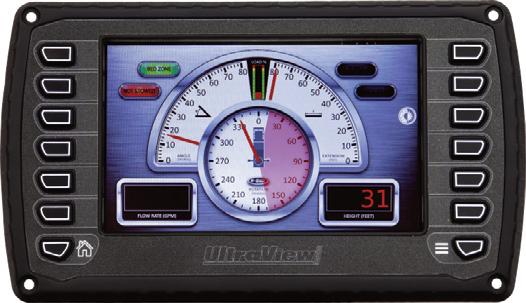

Power Generation: With the shift away from fossil fuels Antares have incorporated renewable energy compatibility within the system design. Antares have experience with providing full solutions inclusive of energy generation, alongside system designs allowing for external inputs from existing infrastructure.
Power Storage: The primary focus of power storage remains in battery technology. Antares have built up strong partnerships with key manufacturers around the world to bring together an array of battery technologies. Experience with the cells incorporated within system designs allows for efficiency gains in power management. The focus for Antares is to provide maximum system performance combined with high reliability.
Power Management: Antares power management systems are utilised in systems around the world ensuring that electrical systems operate in a safe and efficient manner. Where power consumption exceeds power generation, load shedding techniques are implemented to ensure critical loads have maximum operational time, whilst noncritical loads are sacrificed. Automatic features are often implemented creating differing load and power management scenarios based on external inputs to the system.
Power Distribution: Working in conjunction with the power management systems, the power distribution systems implemented by Antares allow for safe and efficient operation and system protection, alongside seamless integration into the intended platform.
Antares premises are located just outside the M25 within easy reach of both the M40 and M4. Within the premises Antares produces standard products along with Prototype units through to full systems. Within the premises we have a wide range of test and design capabilities allowing us to carry out testing such as pre-compliance and high-power load testing in house along with numerous other facilities.

The engineering team at Antares has a broad range of experience across the whole of the automotive and electronic design sectors allowing Antares to take on a varied range of projects. The experience within the in-house engineering team also enables us to fully support our customer requirements.
Along with the in-house engineering team we also have strong working relations with our partner companies allowing us access to further specialised engineering expertise where required.
This experience allows us to take on a wide range of projects as well as allowing us to design market leading products in house.
Within Antares we have undertaken several large Military contracts in recent years. As with many military projects the environmental aspect plays a key part in the project design phase ensuring that the system performance is optimal for the intended application. We can apply experience of defence standards including EMC and climatic standards to project design.
We have designed systems for the outside broadcast market for many years and have a high level of experience in the application of products within this environment. Generally, there is a requirement for high levels of power to be distributed within the vehicle and typically the run time requirement for the system is very high. As with many applications the reliability of the systems is paramount and building in backup solutions is part of our standard design for these systems.
Our experience within the vehicle and off grid markets allows us to take on projects that incorporate the need for electrical systems in conjunction with other systems. An example of such a system was a project that required a power management and safety shut off system that incorporated an electronic system in conjunction with a Pneumatic solution. By providing the complete solution Antares were able to ensure that the integration of the two separate systems was fully tested providing optimal performance at all times once installed on the vehicle. Antares was on hand to provide assistance during the vehicle installation stage ensuring the system was fully functional before sign off.
Our experienced project design team have a vast array of knowledge in producing market leading products. The experience in house ranges from high power DC system design through to software design and integration. This experience allows us to apply specialist input into each aspect of projects. Our team also has a high level of knowledge and experience of system integration allowing us to take all external factors into consideration when designing systems. This ensures that the customer receives the best possible solution tailored to suit their intended application.
Antares have built up a team of applications engineers to provide a high level of customer support from the initial specification phase through to project management and post sales support. Antares allocates an engineering project manager to every project to ensure that the project is completed in a timely manner providing the best possible solution to the customer.
Antares always takes into consideration the latest compliance requirement both for our own products as well as project specific requirements, allowing us to offer support to our customers for such regulations as 18th edition wiring regulations through to Defence Standards. We also work closely with our partners with regards to regulations to ensure that we always have the latest documentation in house related to our products. Our approach to this allows us to keep up to date with the latest regulations ensuring that where necessary we can provide full support to our customers.

Antares has an in-house team of prototype wiremen providing top quality workmanship for prototype solutions allowing us to provide professional solutions throughout our range of products from split charge units through to full power management systems.
Our in-house test and repairs team have a wealth of knowledge and experience ranging from full power system testing through to faultfinding and repair down to component level. Having this experience allows us to test every aspect of the systems and locate the cause of any error, allowing us to provide preventative action to eliminate repeated errors.
Antares are part of the TDC Engineering group, headquartered in Aberdeen. TDC (Aberdeen) Ltd are one of the largest independent Electrical and Mechanical Engineering companies in the country. TDC offers a range of services and products including electric motor and generator repairs and sales, control panel design and manufacturing, specialist electrical services and products, mechanical engineering, precision machining, marine electronics services and products, transformer manufacturing as well as instrument calibration. As part of the TDC Group, Antares has access to the broad range of services and facilities offered by the group allowing us to expand our knowledge base for customer requirements.
Antares are excited to be exhibiting once again at the DVD show in 2024, we look forward to engaging with both new and existing customers in discussing new upcoming projects. Antares will be exhibiting on stand C3-201 during DVD show and would welcome you to join us on the stand to discover how Antares can benefit your projects. If you would like to book a meeting in advance at the show, please email sales@antares.co.uk
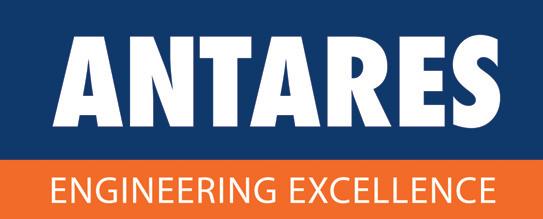

AMP Power Protection, a trusted designer and manufacturer of ruggedized UPS systems comes to DVD for the first time.
AMP Power Protection are providers of harsh environment uninterruptible power supplies (UPS). Which provide back-up power to critical systems. Based in Newport Pagnell, AMP Power
Protection have been providing uninterruptible power to defence and naval applications for over 25 years. Previously operating as Harland Simon UPS Ltd., founded in 1995 and purchased by the AMP Group in 2020. Operating as manufacturers and resellers of uninterruptible power supplies that allow a user’s equipment to keep functioning for a prescribed period of time if the power supply is interrupted.
Making their debut appearance at DVD 2024 upcoming in UTAC Millbrook in Bedfordshire September 18th-19th 2024. AMP Power Protection will be showing their uninterruptible power supplies, specifically customized for use in military applications to
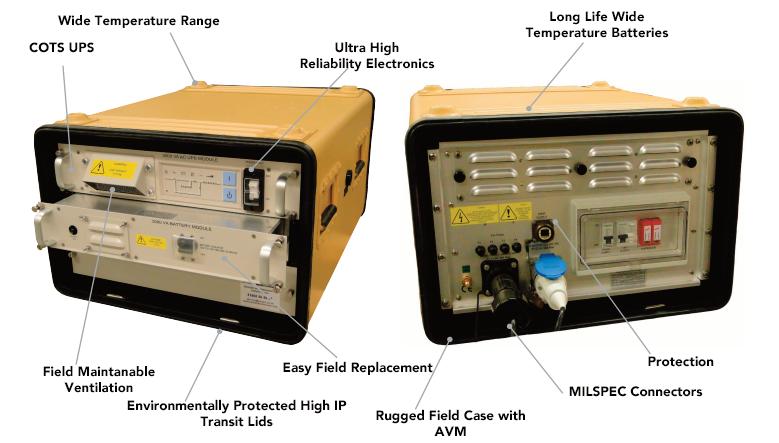
withstand harsh conditions and guarantee power in any circumstance. The team will be found at stand C4-203 with the MakeUK Defence pavilion. UPS experts will be on the stand in order to give the best guidance for any power protection needs and information on their latest projects.
A UPS provides backup power to electrical equipment in order to keep things online and running in the event of any power failures. Even short-term power failure or surges can be enough to disrupt the operation of electrical equipment which are not protected by a UPS. Ensuring a continual supply of power is essential to many operations, specifically in defence applications where it can be critical to life.
AMP have a long history of working with primes such as BAE Systems to design and manufacture UPS systems for various applications. Such as supplying a rugged case mounted UPS and Rugged 19” Rack Mounted UPS for use in the Falcon Project– a deployable, tactical military communications system. Designed specifically to agreed upon EMC, vibration, weight, life batteries and timescale needs. For the Ministry of Defence AMP were selected to design and supply a UPS system which is universal, transportable and rugged for the New Style of IT (NSOIT) project. This saw the design of an easily transportable case mounted IT system which was safe, effective and efficient for transport in the field, in order to ensure backup communications would operate with the IT systems.
All electrical equipment must continue to operate in military and naval environments due to the importance of the operations, and in cases can be critical to life. This is why all UPS’ provided must be customized to withstand harsh environments including levels of blast resistance, moisture and extreme temperatures. Communications equipment must be able to communicate without any errors or issues to be effective in the field.
AMP Power Protection’s in-house design, manufacturing and testing takes place in their ISO 9001 and ISO 14001 certified Newport Pagnell based factory, which boasts 2D and 3D electrical and mechanical CAD design, as well as facilities for customer demonstrations and acceptance testing to take place. Providing power for military and naval applications means that their equipment must be tested to the highest standards of rules and regulations. AMP Power Protection are JOSCAR and Cyber Essentials Plus certified allowing for quick approvals and access to their extensive range of power solutions.
To meet the current demands, AMP Power Protection offers a comprehensive range of Power Protection Solutions for the Military and Defence Industry. All services including Land, Naval, Marine and Air have benefited from expertise and technical capabilities. Offering a range from commercial off-the-shelf products through to completely customised solutions.
Commercial Off-the-Shelf (COTS) – Rugged uninterruptible power supplies which are ready made to DEFSTAN standards, ready to use off the shelf.
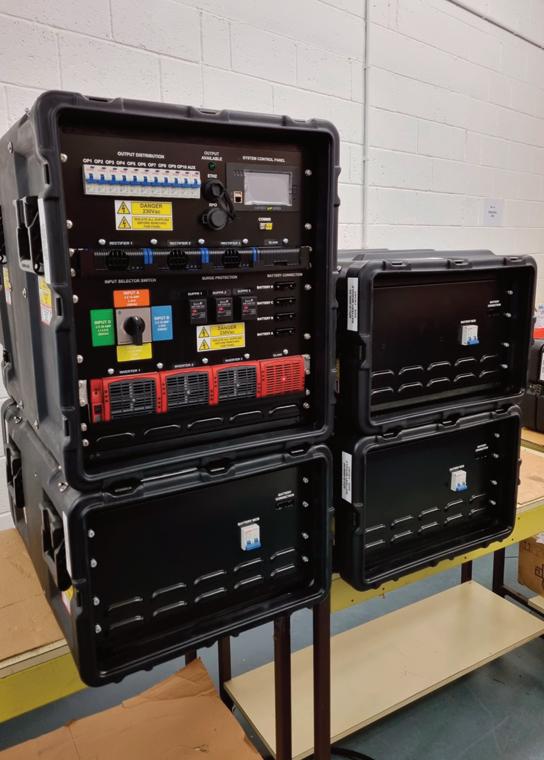
Modified Off-the-Shelf (MOTS) – Off-the-Shelf UPS systems which are modified, such as customised housing units to reach additional safety standards.
Custom – Completely customised solutions, tailored to your exact needs. Working with our technical team to create a bespoke solution. Made to order system that is specifically designed and installed to meet specific defence standards and legislative requirements.
AMP will be attending the DVD show for the very first time at DVD 2024, and can be found on stand C4-203 for all of your uninterruptible power supply needs. Don’t miss the chance to find out how Uninterruptible Power Supplies can be used in applications across defence, marine and transport, aboard vehicles and in the field. Working with you to find the perfect custom solution for any military application. If you would like to book a meeting in advance you can email Sales@amppowerprotection.com
You can contact Nick Walker: Nick.Walker@amppowerprotection.com 01908 012531 www.amppowerprotection.com
RUGGED BLOOD FRIDGES


MSPO: D14
DVD: SP14
MESH TACTICAL COMMS

CREW HEATING OPEN VEHICLE




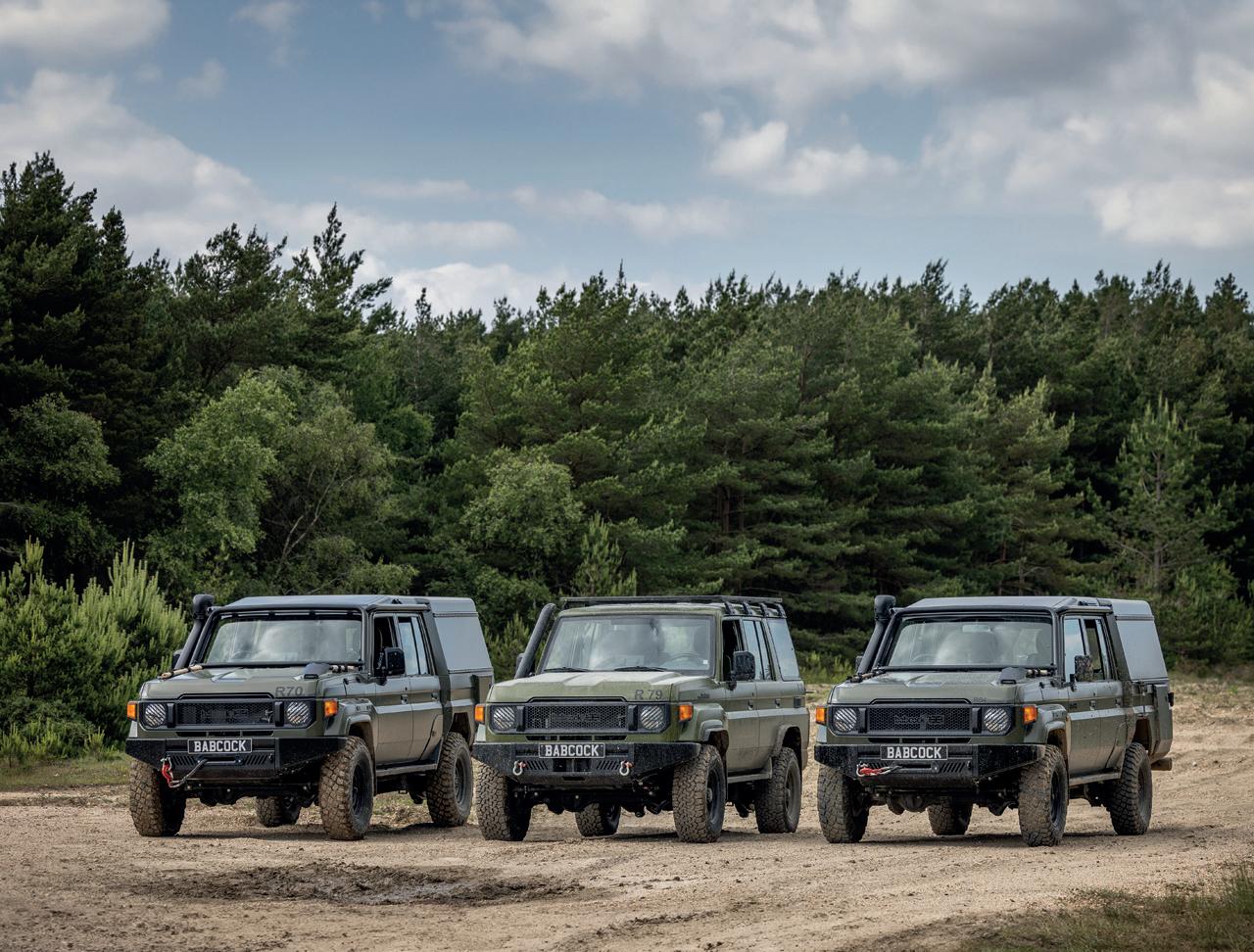

Earlier this year, Babcock International Group (Babcock) announced a partnership with ST Engineering to offer the British Armed Forces a worldleading, integrated solution to the UK’s upcoming 120mm mortar requirement. This partnership combines Babcock’s close working relationship with the British Armed Forces and long-standing systems integration experience with ST Engineering’s leading land systems products. Collaborating with ST Engineering brings together the companies’ collective, complementary skills and technology to strengthen the UK’s defence capabilities by providing enhanced bene昀ts to its next generation of close indirect 昀res.
In a world of ever-changing stability and uncertainty, it is more critical than ever to provide integrated solutions that deliver unmatched capability, availability and adaptability. Our customer’s mission is our mission.

The 120mm Ground-based Deployable Advanced Mortar System (GDAMS) solution offers an enhanced close indirect 昀res capability to the UK; built upon trusted technology. The vehicle agnostic solution can be operated by a crew of two with a deployment time of just 15 seconds. This hinged mortar system is interchangeable with an 81mm barrel and can be operated with Lanyard or Drop-Fires techniques at the SubUnit and Unit level. Our 120mm GDAMS is also compatible with the full range of munitions, including Smart Fuze Guided Mortar Munition.
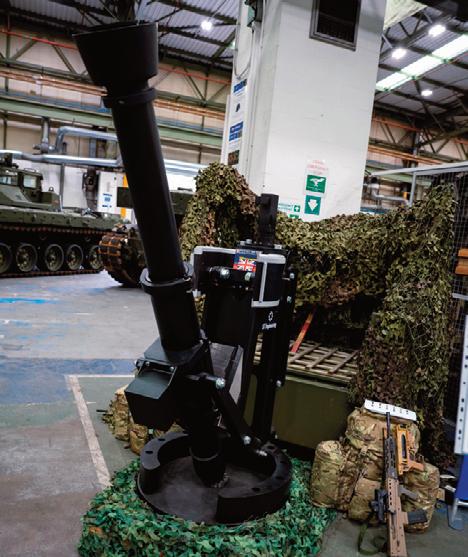
Working with ST Engineering’s world-leading technology, the 120mm GDAMS will be manufactured using a local British supply chain at Babcock’s production facility in Devonport, Plymouth, supporting not only British sovereignty but also the re-establishment of barrel manufacture in the UK, through our partnership with Perfect Bore - British subject matter experts in barrel design. By design, our production will deliver tangible social value bene昀ts to the South West. Aside from building and sustaining a truly British supply chain, the 120mm GDAMS production line will create new, skilled roles at Babcock’s Devonport Facility – both leveraging and upskilling existing workforce in Plymouth as well as offering development opportunities to
those who have previously found it dif昀cult to gain employment in the local area through our Skills-based Work Academy Programme, which has recently seen success on Babcock’s High Mobility Transporters Jackal 3 build programme in the same facility.

Production of the 120mm GDAMS will create further skilled roles at Babcock’s Devonport facility, also home to the Jackal 3 build programme.
Situated in the South Devon Freeport Zone, our production facility also supports future international export opportunities from the UK, offering allied nations attractive rates whilst simultaneously delivering social value; designed in alignment with the UK’s Land Industrial Strategy.
Babcock’s solution offers a tailorable, end-toend package from product, to training and through-life support. Our integrated offering leverages on experience and expertise from across the Babcock group; we build, we train, and we support, through-life. Through our close working relationship with the British Armed Forces, we understand the Army’s challenges and opportunities; that’s why we’re developing a solution that not only digitises the mortar platoon but supports seamless integration into the UK’s existing architecture and infrastructure.
We know this is a priority for the UK Ministry of Defence. We stand ready to deliver an endto-end solution, strengthening UK Defence to meet the needs of the British Forces of today, with innovations to sustain the needs of the Forces of tomorrow.
Babcock’s partnership with ST Engineering will deliver truly transformative innovations for the next generation of close 昀res for the British Armed Forces, helping to create a safe and secure world, together.

MANUFACTURES AND MARKETS THE HATCH LIGHTING AND ORIENTATION SYSTEM (HALO) EMERGENCY EGRESS LIGHTING SYSTEM (EELS) WHICH IS KNOWN AS VEHICLE ESCAPE LIGHTING SYSTEM (VELS) IN THE UK.

The system illuminates vehicle egress points following blast, roll-over or water ingress.
Lights are configured as an inverted white “U” around doors and hatches. Green light is used to mark handles, with red light for emergency equipment such as spare air or battle locks.
Many armoured vehicle crews use Photo Luminescent Tape (PLT) to mark these egress points. PLT has shown in numerous tests to be virtually invisible to the naked eye when under murky water. PLT should be replaced by the HaLO EELS which is modular and designed to be
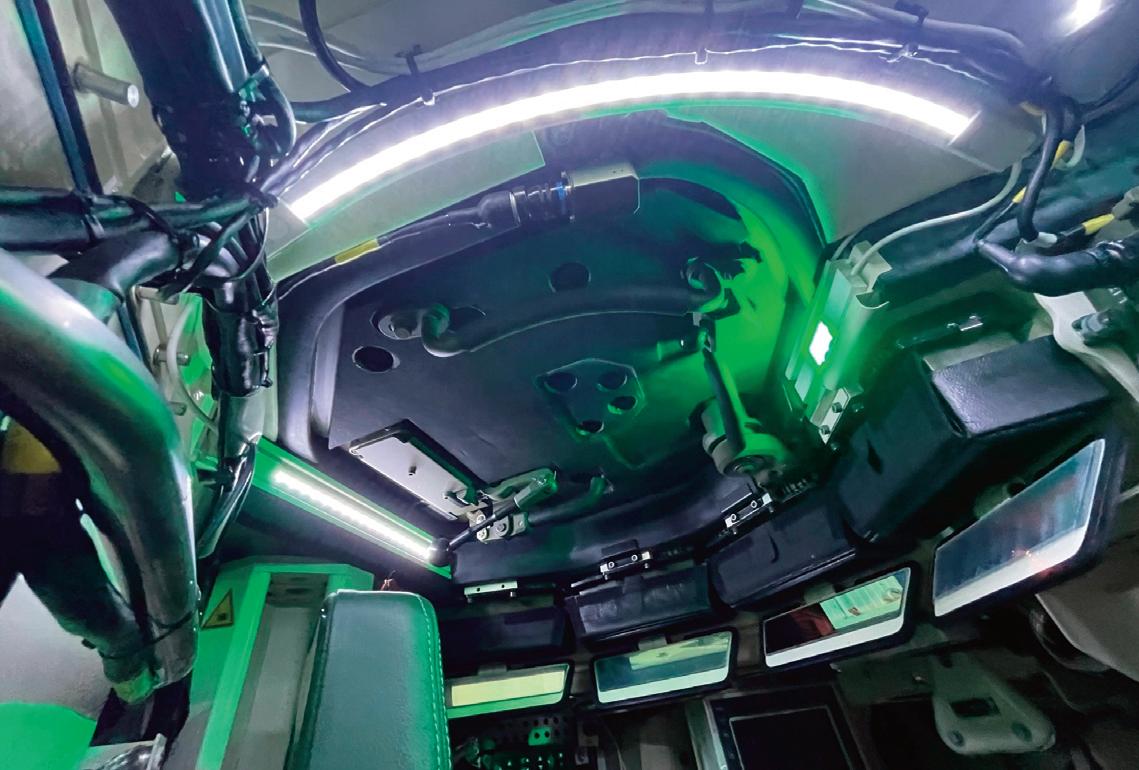

integrated into any armoured vehicle.
HaLO is powered by an ultra-capacitor power supply which is charged from the vehicle ignition which will power the egress lighting for between 10 and 20 minutes dependent upon vehicle configuration.
6,000+ HaLO systems are in service since its introduction around 15 years ago. These systems are fitted to armoured capability worldwide. In the UK and US, EELS is considered to be an essential safety system, mitigating egress and drowning risks.
UK platforms fitted with HaLO EELS include Boxer, AJAX and Viking. EELS is also fitted to Foxhound and Cougar variants. AeroGlow International is currently supplying HaLO for the Future All Terrain Vehicle (F-ATV), a BvS10 variant. It is also a safety requirement for all platforms within the Land Mobility Programme.
In the US, HaLO is fitted to Special Forces variants of the MATV and JLTV. It is also fitted to all variants of the Marine Corps Amphibious Combat Vehicle. HaLO is a requirement on the Stryker platform as well as the XM-30.
The system is a fully qualified TRL9 EELS, meeting all current UK MOD and US DOD requirements.
www.aeroglowinternational.com


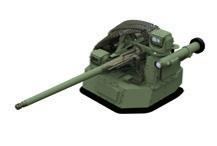






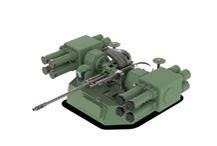


The RIwP® (Recon昀gurable Integrated-weapons Platform) allows users to rapidly change weapons (both direct and indirect 昀re) to achieve tailored overmatch against evolving threats. This proven, a昀ordable, and innovative weapon system provides maximum lethality across multi-domains and is both vehicle and weapon agnostic. The mission adaptable RIwP also provides best-in-class soldier protection and 昀ring accuracy.
sit Moog in stand C3-418.

Fischer Connectors’ KEYSTONE series empowers warfighters to adapt and excel in modern battlefield environments, where rapid decision-making and enhanced situational awareness are paramount for mission success.
In today’s dynamic battlefield environments, the evolution of BMS (Battlefield Management System) electronics has significantly enhanced mission effectiveness. However, the proliferation of C4ISR devices has also increased the burden on soldiers, particularly in terms of added weight and the challenge of managing battery power efficiently. Fischer Connectors addresses these critical issues with its KEYSTONE tactical USB HUB series, by optimizing power distribution and data transfer capabilities.
The KEYSTONE 6 tactical USB HUB is specifically engineered for complex applications, providing precise control through a dedicated power management application integrated with ATAK (Android Team Awareness Kit). This empowers warfighters to enhance their situational awareness and operational efficiency in challenging scenarios, crucial for mission success.
Complementing the KEYSTONE 6, the KEYSTONE 4 tactical USB HUB offers a reliable and versatile solution for more general-purpose applications. Designed to meet a wide range of operational needs, it ensures seamless data transfer from tactical devices, enabling warfighters to adapt quickly and efficiently to different mission requirements by optimizing size and weight, but without compromising on power, ruggedness, and reliability.
Featuring NATO STANAG 4695 and 4851 compatible connectors, KEYSTONE tactical USB HUBs facilitate seamless integration with existing systems, enhancing interoperability and deployment processes.

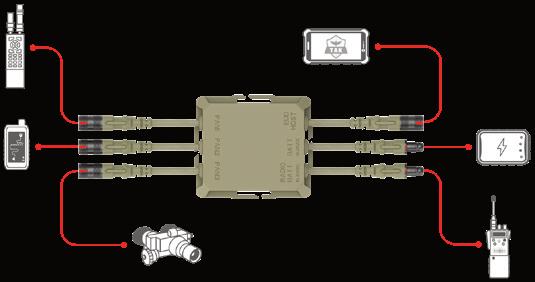
The KEYSTONE series has been meticulously validated according to MIL-STD-810 standards, ensuring durability and reliability in harsh environmental conditions. Additionally, KEYSTONE HUBs have undergone rigorous testing for very severe EMI/EMC levels in accordance with MIL-STD-461, guaranteeing optimal performance even in demanding electromagnetic environments. With electrical fail-safe mechanisms on all ports, there is no compromise on reliability.
The Fischer KEYSTONE™ Series offers various cable assemblies – general-purpose and power, radio, EUD, device cables – that can be customized upon request.
‘Reliable, simple, does what it’s expected to do’: that’s the usual feedback we receive from customers who have field-tested Fischer KEYSTONE. Soldiers already know how to use it – they clip it on, plug it in, and it just works.
Olivier Thormann Fischer KEYSTONE™ Product Manager, Fischer Connectors
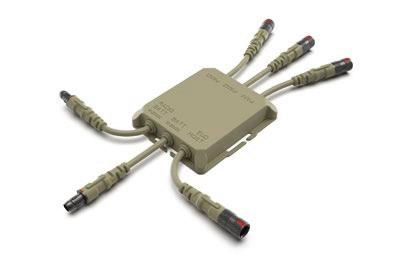

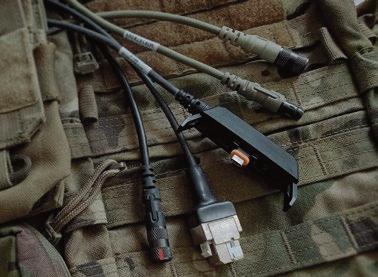

■ Tactical hubs – 100 W and USB 2.0
■ 4 and 6-port configurations
■ Power management app – ATAK plug-in
■ Standard & customizable cable assembly solutions
Swiss-engineered for MIL-SPEC digital connectivity with Fischer Connectors’ world-renowned technologies in ruggedness, sealing, miniaturization and data transmission.


IN
PRODUCTS (UK) LTD HAS THE LARGEST

Centrally located in Glossop, Derbyshire the facility is purpose-built and includes offices, warehousing and logistics operations.
Displayed on Stand C3-805, the Peli™ case range is ideal for protecting all types of military equipment. With US NATO stock numbers, many models are also Defstan 81-41 certified. These cases undergo rigorous testing, including drop, vibration, and water immersion tests, ensuring they meet the demanding standards required for military use.
Peli cases are the market leaders in equipment protection and are designed to withstand extreme conditions, offering unparalleled durability and security. The materials used, such as Peli’s proprietary HPX™ resin, provide superior strength while being lightweight. They are watertight, dustproof and crushproof, essential features in ensuring that sensitive and vital equipment remains functional in the most challenging conditions.
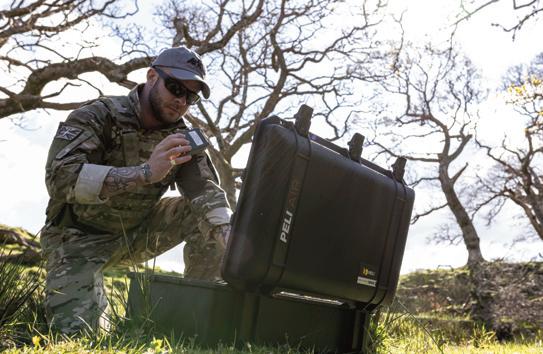

Offering significant long-term cost benefits, the superior durability of Peli cases means they can withstand multiple deployments, reducing the need for frequent replacements. Additionally, the protection they offer to valuable equipment prevents costly damage and ensures the readiness of these items when they are needed most.
Peli Products (UK) Ltd offer a full customisation service, with in-house military packaging design capability from MSA Foams Ltd, an MPAS registered company. Bespoke military level packaging is designed to Defstan 81-41, with close MOD liaison by MPAS approved designers. Custom foam inserts are highly durable and are tailored specifically for equipment, such as weapons and ancillary items, for maximum protection.
CAD is used to ensure space is optimised, often amalgamating items into one case that were previously in several different storage systems. Reducing the size or quantity of the case(s) also reduces logistics costs. The bespoke insert holds the contents securely while specialised foams minimise the risk of damage during transit.
Precision engineered foam inserts have been produced for several
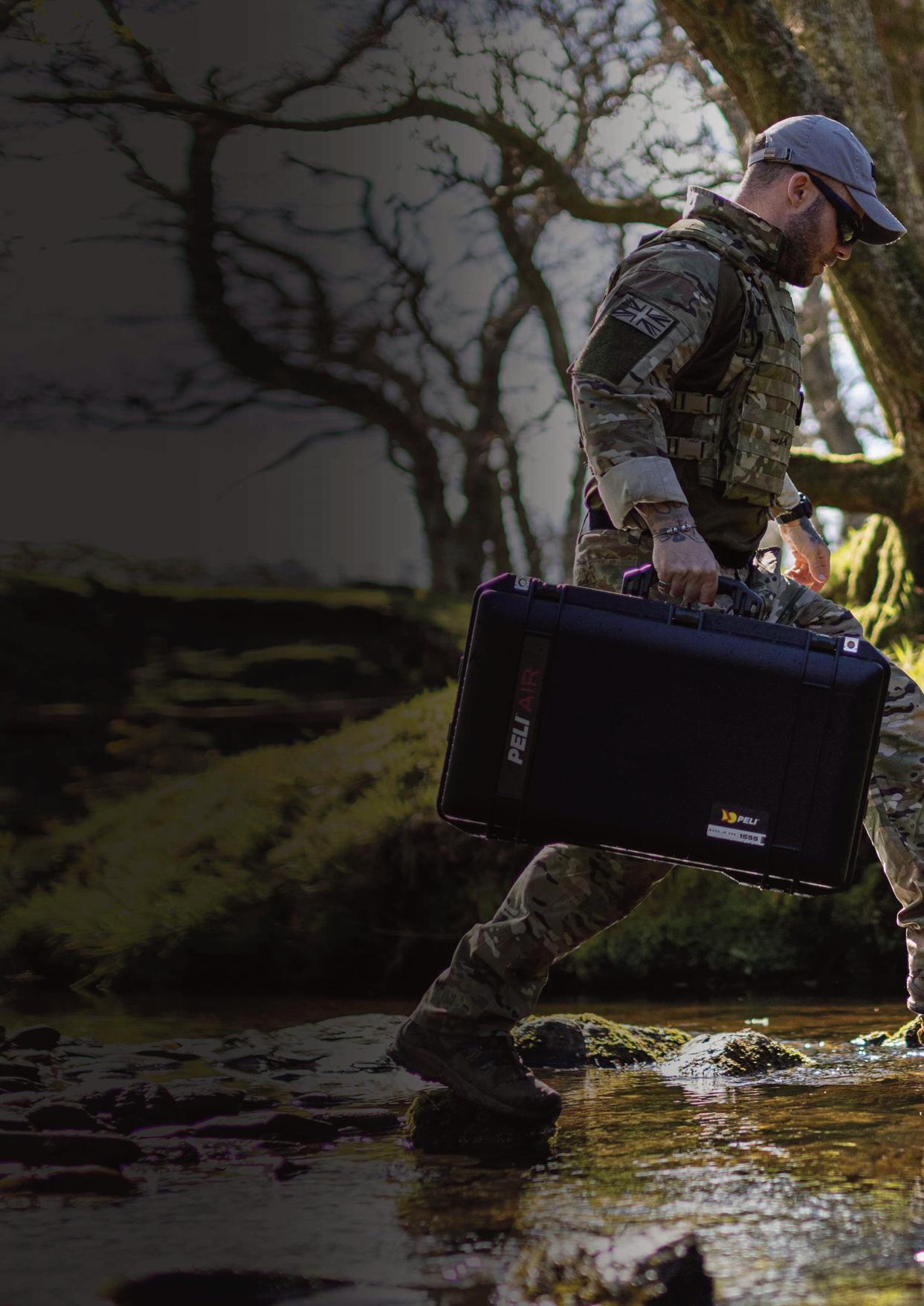
rifles including the SA80 and the L119 A2 rifle. The bespoke foam insert is designed fit inside the Peli 1700 Protector case and includes pockets designed for ammunition and ancillary items.
The 1730 Protector case can be used as a weapons vault with a custom foam insert that has been engineered to hold six SA80 rifles and twelve magazines securely, ensuring they are in perfect condition after transit and no need to re-zero.
Peli Products (UK) offer a wide range of case sizes to suit all requirements with OD Green and Desert Tan colour options on many models. There are three ranges: the Peli Protector range, the Peli storm series and the lighter weight Peli Air range.
The Peli™ Air Case range has been expanded with the addition of new deeper and longer cases. Peli Air cases are waterproof and crushproof and offer additional sizes to the Peli Protector and Peli Storm case lines.
Air cases are designed to maintain the same level of durability as the classic Peli cases, the Air models’ weight has been reduced by up to 40 percent. The range is constructed of premium lightweight HPX2 resin and includes the 1755 long case. Peli Air cases are now manufactured with press and pull latches to make opening easy but ensuring the case is securely fastened when closed.
The Peli 0450 Tool chest offers the mobility and benefits of a rugged watertight Protector Case and has been re-modelled to make it even tougher in extreme conditions. The design now features an aluminium rail slide system, each tray slides out into a secure position for easy access to tools and can be effortlessly removed for repositioning or cleaning.
The 0450 is designed to withstand extreme temperatures, rough handling and the worst conditions while keeping tools intact. The top compartment features a removable utility tray and a lid that opens 180° to create a mobile work area. For case security, the 0450 features metal butterfly compression latches and tamper-resistant, stainless steel padlock protectors. The case also features two automatic pressure equalisation valves (one in each compartment) that prevent vacuum lock and make the case easier to open after changes in altitude.

The 0450 Tool case is designed specifically for ease of transportation; featuring stainless-steel, ball-bearing wheels for all terrain mobility and a widened wheelbase to stabilise the case on soft and hard surfaces. A heavy-duty, extendable pull-handle and an extra-deep handle on each end of the case ensure the 0450 can be lifted by two people when open or closed. Footpads at the bottom of the case and depressions in the lid allow for multiple cases to be stacked.
Combine with custom foam to ensure tools are secured in position and fully protected in transit. Bespoke inserts from Peli Products UK are designed to organise tools efficiently and using coloured foam, ensure missing items are easily identified, eliminating the risk of Foreign Object Damage (F.O.D.).
The Peli 1465 Air EMS Case is a tough solution to protect medical kit combined with the qualities of an Air case. One of its key features is the unique 50/50 split design between the base and the lid, which opens a full 180 degrees. This design provides maximum stability and a wide base, ensuring that the case remains secure and accessible during critical moments.
The three-level, customisable tray system is designed to keep medical supplies safe and well organised. Each tray can be easily lifted out and can be wiped down, ensuring that hygiene standards are maintained in the field. For added security, the case includes a lockable tray section, perfect for the secure storage of controlled substances. The top tray and case lid close together seamlessly, creating a seal that prevents the contents from spilling out during transit.
Portability is a key consideration for the 1465 EMS Case. It comes

equipped with a padded nylon shoulder strap, allowing for quick response and easy carrying, making it an ideal choice for military use and operational readiness.
Peli rackmount cases are constructed with rugged materials to withstand extreme conditions, including impact, vibration, and harsh weather.
Featuring shock-absorbing mounts and customisable interiors, Peli rack cases ensure that delicate electronic gear and mission-critical instruments remain secure and operational during transport and deployment. Their versatility and durability make them an essential component in military logistics, providing peace of mind that vital equipment is safeguarded against damage in the most challenging scenarios. When it comes to electronics, nothing protects better than Peli.
Peli area lighting systems provide portable, instant light where there is no mains power. These rugged self-contained systems are manportable and offer powerful, rechargeable, LED lighting for remote locations. Eliminating the need for fuel or cumbersome generators, these rechargeable systems are silent running. The lights can be deployed rapidly and are ideal for urgent operational requirements.
Peli Products (UK) Ltd is a JOSCAR registered company with ISO certification, ensuring quality systems and has been an ADS member for many years.
For more details ring 01457 869999 or go to:
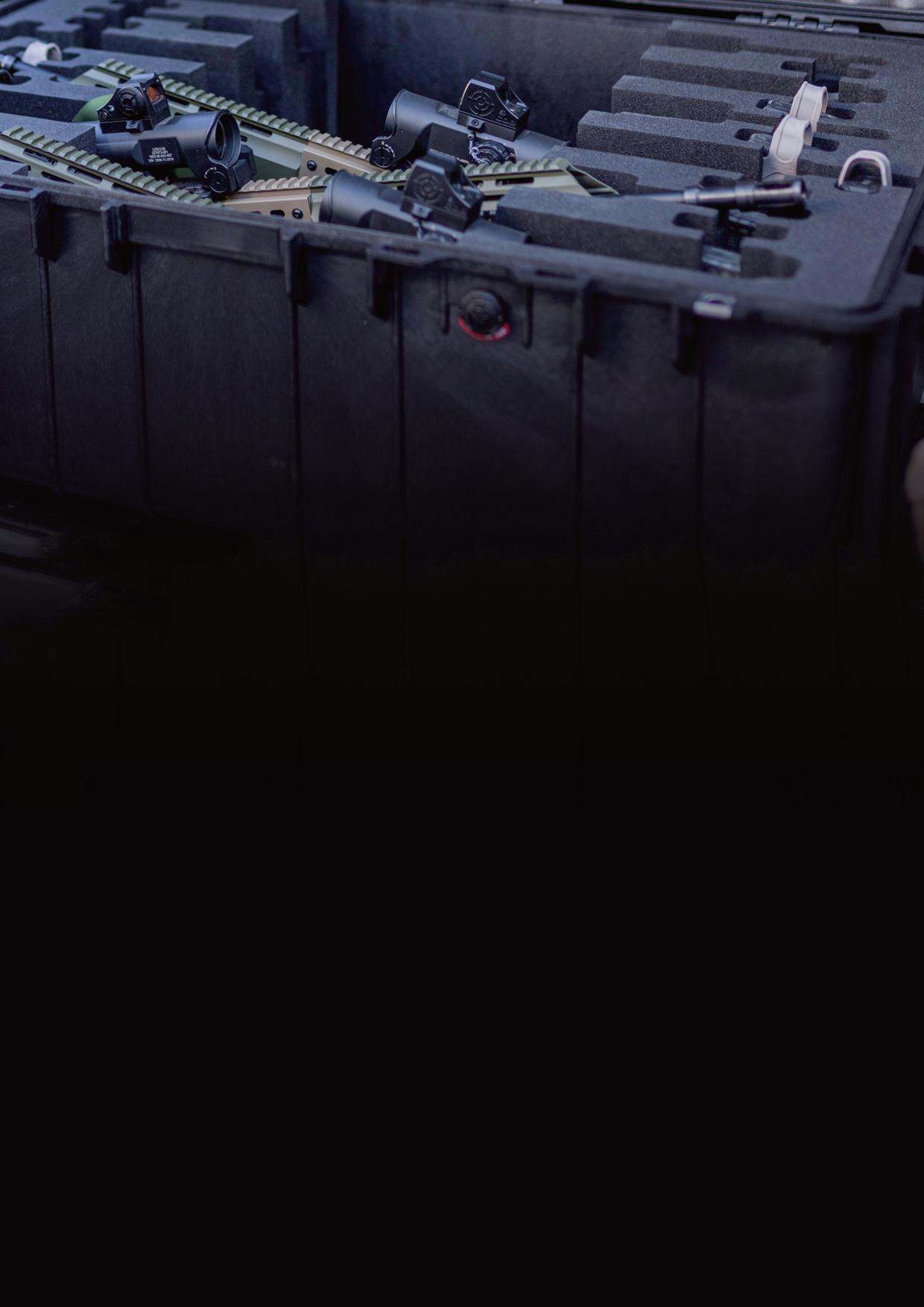


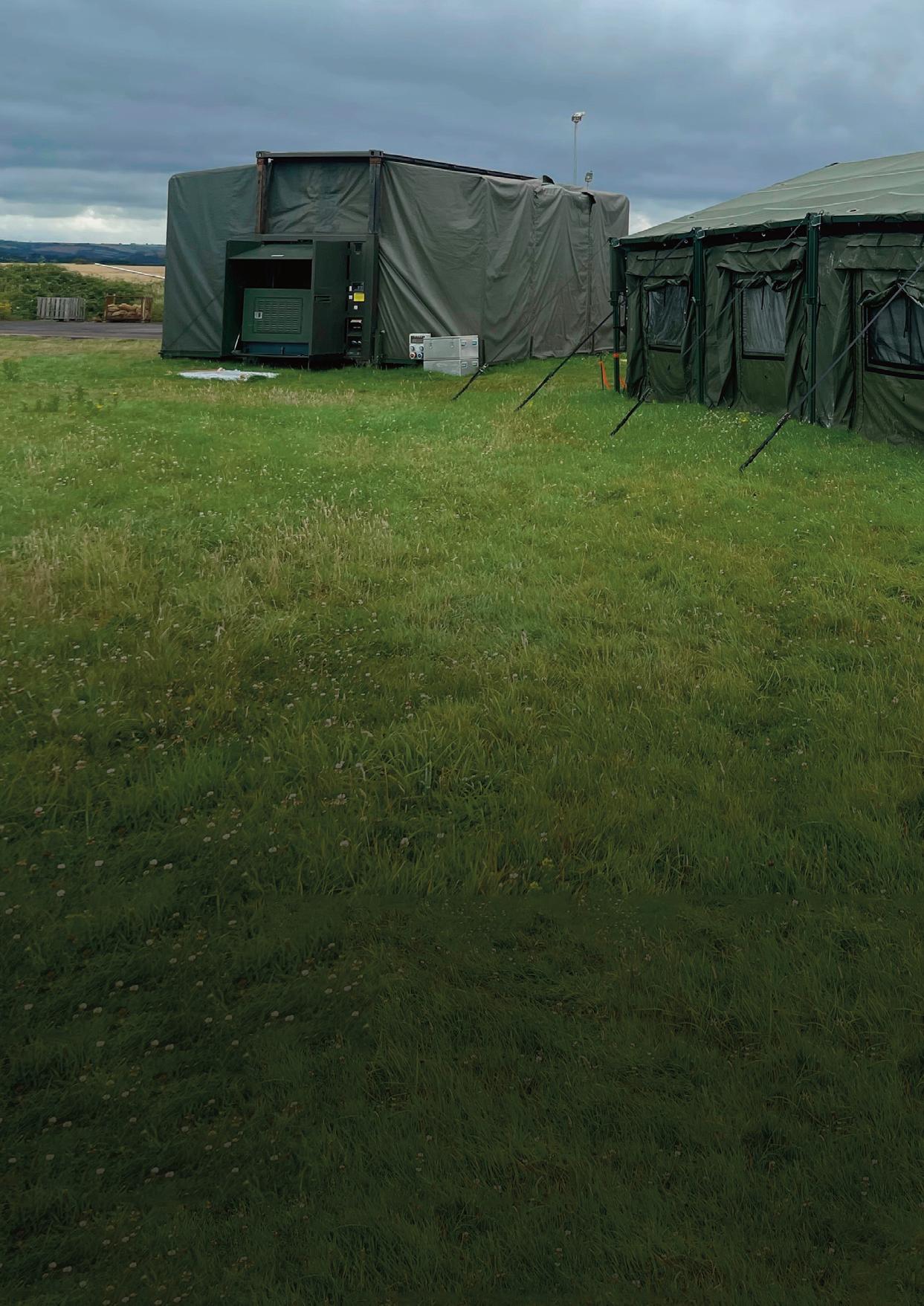
From it’s founding in British Columbia in 1981, Weatherhaven has been driven by an innovative and can-do spirit of rising to the challenges set by customers who need reliable, robust and simple re-deployable shelter and infrastructure solutions for use in the most challenging environments found on Earth.
Be it military camp systems suitable for Worldwide deployment at a moment’s notice; or scientific infrastructure which will spend life deployed at the ends of the Earth in temperatures which never get much above -30oC; these are the places you will find Weatherhaven’s equipment.
Weatherhaven began with founder Jim Allan thinking “I can do that better” whilst trapped in a storm on Mt Logan – Canada’s highest peak, for over a week in inadequate shelter, to the company it is today, having delivered over one billion dollars of equipment to customers in more

than 75 countries, in every environment from polar to desert. Weatherhaven is constantly developing their product range as well as their production capabilities and now have more than a dozen manufacturing facilities covering The Americas, Europe, Africa and the Middle East. Weatherhaven are ideally situated to respond to demands no matter where from, or how urgent.
As one of the World’s leading provider of high specification rapidly redeployable technical infrastructure to remote sites operating in the world’s harshest environments, for over 40 years, Weatherhaven has designed, manufactured and deployed innovative shelter systems for innumerable military, exploration and medical applications.
Weatherhaven delivers re-deployable Command Post, Medical and Technical Infrastructure to NATO and allied forces, this has recently included high specification winterised medical and accommodation soft shelter infrastructure to Ukraine.
Weatherhaven’s re-deployable infrastructure systems are completely modular and scalable to offer clients maximum operational flexibility. Designed from the outset to be simple and rapid to deploy, rugged and long lasting. This simple mythology means that post deployment no long-term traces of the deployment are left, thus allowing the environment to rapidly return to is natural state.
Weatherhaven is much more than just a systems manufacturer, key to the company’s development across the years has been their ability to deliver high quality capabilities quickly to any part of the globe. From the first “turn key” resource exploration camps in Northern Canada which contained everything the user required (including the proverbial kitchen sink) to operating in the harshest Northern Latitudes of the Canadian Tundra, to their first military camp delivered at the rush to allied forces stationed in Kuwait following the first Gulf conflict. They have proven again and again that by having control of their key supply chain combined with a global manufacturing base allows them to rise to the challenges set by the constantly changing defence and economic landscape.
None of these recent challenges have been more complex, or in the end as rewarding, as the Covid 19 epidemic and the international response to that. Faced with non-functioning international supply chains which
disproportionally impacted the manufacturing industry, closed international borders and the richer nations monopolising supplies, Weatherhaven rose to the challenge to deliver multiple Covid resilience hospitals to some of the Worlds more desperate countries. This included field hospitals to Chile and Columbia with the first one operational in under 6 weeks, and isolation hospitals facilities to Sierra Leone, Mauritania, Guinea and Chad.
In total since 2020, Weatherhaven has proven itself as one of the World’s leading high quality field hospital providers having delivered over 25 re-deployable medical capabilities worldwide, both in response to Covid and in response to renewed military demand. With deliveries to a European nation recently completed, South American nations underway and negotiations with Eastern European countries ongoing, the medical market has become once again a lucrative prospect for Weatherhaven.
Over the last four decades Weatherhaven has also evolved from the specialist custom designer for remote site infrastructure, to one of the world’s leading engineering design and programme management organisations, delivering high value defence projects worth hundreds of millions of dollars to NATO nations.
Once again Weatherhaven will be displaying their capabilities at DVD 2024, based on the Steering Pad on stand SP15. On show in this iteration will be Weatherhaven’s tried and tested Mobile Expandable Container Configuration (MECC) the “3 in 1 expandable container” based on the universal 20’ ISO container footprint. Complementing the MECC is the ‘new boy’ in Weatherhaven’s stable, the Tactical Re-deployable Expandable Container Capability (TRECC), a much smaller rapidly deployed shelter system which can be mounted on light vehicle trailers or air-portable pallets.
The Weatherhaven MECC is the Western militaries most popular expandable containerised shelter system, with nearly 4,500 variants of the MECC delivered in the almost 30 years since it was first put into production. Since the first MECC were designed and delivered in response to the 1995 Kobe earthquake in Japan, it has been constantly evolving into the robust universally popular system we field today and can be found on almost every major NATO deployment.

Knowing their customer base well, the MECC is designed and manufactured by Weatherhaven on simple basic principles –robustness, rapidly deployable, simple to use, low annual support costs, ease of in-field repairs or parts replacement, simple to repurpose and a long lifespan. These principals allow for the holy grail of low through-life costs. The durability of the MECC has been well proven over the years and Weatherhaven regularly see MECCs with 20+ years’ in-service life and are still going strong. Japan still has the majority of the original 100 MECCs they ordered in 1995 in-service today.
A key aspect to the MECCs attraction is the available space once deployed, giving over 40sqm of clear workable floor area on the 8’6” high standard container configuration. Weatherhaven’s unique design and build methodology adds to this versatility by giving the user the ability to simply strip back installed equipment to the basic MECC chassis and quickly reconfigure to a different role to which it was previously used. Some MECCs have lead a varied life going from being a vehicle maintenance facility, to a kitchen, to a command post. This allows customers to continually re-role the core MECC unit to meet new requirements whilst minimizing the financial outlay and manufacturing lead-time. The MECC minimises transportation footprints whilst maximizes capability; when packed, the MECC will contain everything the operator needs, including for example desks, chairs, IT screens, radio equipment, map tables as well as all deployment equipment. In the basic MECC fitment operators still benefit from approximately 85% of the storage volume they would find in a comparable empty basic ISO container.
The MECC can be operational in under 15 minutes by 2-3 personnel wearing full operational equipment loads. It can be operated directly from the prime mover vehicle or any other 20ft ISO container transportation capable truck, mounted onboard a trailer system, or be ground based. The MECC has the ability to be complexed with other Weatherhaven containerised and soft-shelters to provide larger, weather-proof, continuous facilities.
At DVD 2024 Weatherhaven will be showing a MECC which perfectly highlights some of these capabilities. To prove the robustness of the Weatherhaven MECC, they have always chosen to demonstrate using real equipment, not showroom only models. The MECC on display at
DVD this year is nearly 20 years old and has travelled the globe a few times. Originally designed as an engineering workshop, it is now the basic open-plan configuration to highlight the space and opportunities available.
Internal fittings for the MECC can be as varied as the roles it is used for but includes standard systems such as lighting (white and or tactical) power distribution, heating ventilation and air conditioning (HVAC) and power supply. Provision of power can be external user supplied or onboard, integrated power systems including traditional generator sets, hybrid power modules and renewables sources.
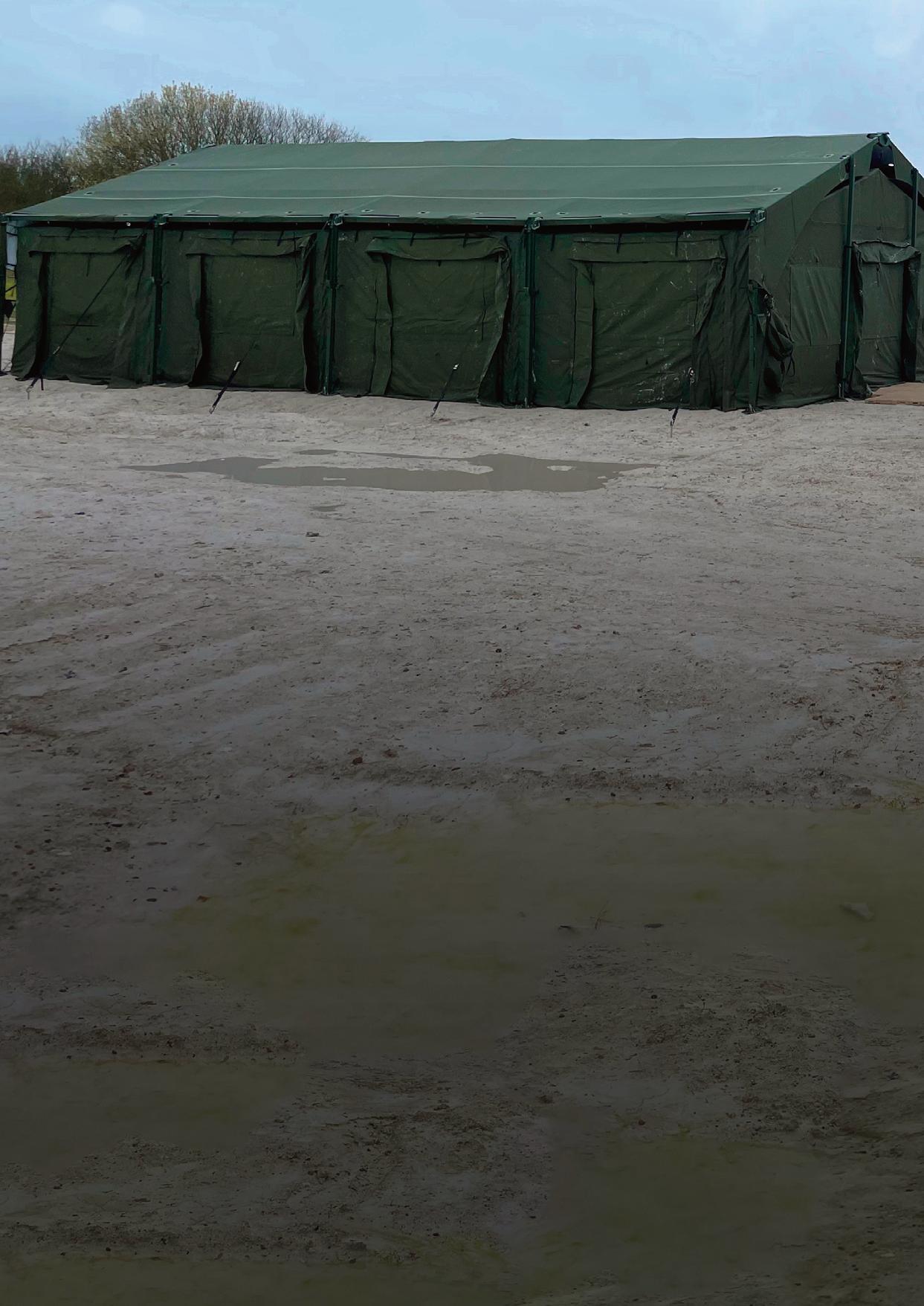
Weatherhaven are very pleased that the MECC on display has been enhanced by the addition of the SAAB Barracuda MCS and ULCAS a true Multi Spectral Camouflage System. This new development for Weatherhaven is in reaction to the reality of modern warfare where the high value activities conducted in the MECC system would make it a prime target for opposition forces. Integration of the Barracuda system also allows operators to dramatically reduce the time taken to bring a MECC into operation, allowing key functions on the battlefield to be more efficient and reducing the time taken to protect these assets and functions. More details on how the Barracuda system reduces detection and thus enhances battlefield survivability can be found at https://www.saab.com/products/mcs-mobile-camouflage-system.

Weatherhaven’s more recent developments in the small expandable shelter market, the Tactical Redeployable Expandable Container Capability, the TRECC, will also be on show. The TRECC has been in development over the last 6 to 8 years in response to the recognition that warfighting was becoming a much faster moving operation, with the time taken between targets being acquired and engaged rapidly reducing; as has been borne out over the last 2+ years in the Ukrainian conflict. The TRECC is a family of rapidly deployable capabilities in a secure container, based on the same key principles as for all their expandable containers. The ease and speed of use being key, with maximum flexibility built into the system to meet ever changing user requirements.
The TRECC is built on a common architecture principle, which allows Weatherhaven to supply TRECCs in various dimensions to meet different use cases without having to carry out expensive and long redesign work. This has allowed Weatherhaven to produce different size TRECCs to meet individual customer specifications, such as the TRECC-T for the HMMWV Trailer, the TRECC-P which is compliant with NATO 436L aircraft pallet systems, and the TRECC-H which was specifically designed for CH47 internal load carriage.
Built around speed of deployment, the TRECC can be operational in well under five minutes from arrival at location, with deployment easily achievable by only one person if necessary. Trailer mounted TRECC-T systems also benefit from its “get out of trouble” capability, allowing it to be driven off quickly without being fully packed away if necessary, which further increases survivability.
The TRECC is gaining popularity across NATO forces which appreciate the rapidly deployable, simple to use, multipurpose shelter systems where ground based tents are no longer the acceptable solution. After an initial delivery to NATO Command troops based in Belgium, Weatherhaven has also delivered the TRECC to the British Army and US Army and with multiple requirements being responded to in North American, Europe, the Middle East and Australasia, it’s clear that the TRECC will be the platform of choice for applications where speed, capability, simplicity and versatility are the defining requirements.
Away from the Defence sector, Weatherhaven have always been

considered by Western nations scientific and exploration organizations as the go-to company for shelter infrastructure to keep their staff and equipment safe and operational in the most remote and extreme environments found in the Polar regions. Ranging from supply of their small Weatherhaven Endurance shelter for staff accommodation or the luxury Polar holiday market, to innovative large area drill shelters. The latter have been used to support the Ice Core Drilling experiments for scientific research into the millions of years of weather data captured in the ancient ice shelves of Antarctica.
From the North Canadian and Alaskan drilling and mining fields, to the South American high Andes mountain range, for the best part of 40 years Weatherhaven have been housing large numbers of workers in high-quality exploration camps. These home-from-home camps providing all the necessities and luxuries expected to support skilled workers in remote and hostile areas.
Looking forward, Weatherhaven aim to maintain their presence at the forefront of the Worlds deployable capabilities by providing infrastructure that is both energy efficient to transport and operate. By ensuring our equipment can be manufactured, transported and deployed in the most efficient manner coupled with high quality materials, providing high thermal efficiency and a long in-service life, Weatherhaven strive to ensure the customer receives maximum return for their investment whilst minimising the impact on the planet. For both environmental and cost reasons, Weatherhaven delivers on the principle that after use there should be no lasting traces of deployment, just satisfied customers.

For over 60 years, Aerco has established itself as a reliable stockist and distributor of electronic components, primarily servicing military and defence programmes.
Our extensive experience and unwavering commitment to quality have positioned us as a trusted partner for various defence-related projects, providing an extensive range of products that include connectors, connector accessories, cable, and wire from world-class manufacturers. Our portfolio includes ITT Cannon, TE Connectivity, TT Electronics AB Connectors, Belden, Alpha Wire, and Amokabel. We specialize in supplying products designed specifically for the defence market, carrying MIL-Spec, Def-Stan, and VG approvals.
VG approved connectors. This uptick is primarily driven by the joint venture between UK-based BAE Systems and German-based Rheinmetall, collectively forming Rheinmetall BAE Systems Land (RBSL). This collaboration aims to produce the new Mechanised Infantry Vehicle (MIV) for the British Forces, known as the Boxer.
The Boxer is an eight-by-eight-wheeled, all-terrain, armoured transport vehicle designed for versatility. It serves multiple roles, including as a troop carrier, field ambulance, combat engineering vehicle, and logistics and battlefield maintenance vehicle. Equipped with cutting-edge technology, the Boxer can detect threats using 360-degree highdefinition long-range cameras that continuously scan even at high speeds. Additionally, it is built to withstand bomb threats and features a Nuclear, Biological, and Chemical (NBC) threat protection system. With the first shipment of Boxers set to be deployed imminently, production continues to ramp up to meet the needs of the British Army.
A crucial aspect of the Boxer's durability and toughness is the use of components that meet stringent military standards. The VG standard, established by Germany's Bundeswehr and the federal office of Bundeswehr Equipment, IT, and In-Service Support (BAAINBw), is a testament to these high standards. VG approved products are highly sought after for their reliability in critical applications and are



Central to the Boxer MIV are the rugged VG 95234 connectors. Based on the long-standing Mil-C-5015 specification from the US, the VG 95234 connectors feature a reverse-bayonet coupling design and come with RoHS compliant plating options, including the VG approved J-Plating and traditional cadmium options. These connectors offer exceptional environmental protection with IP67/68/69K ratings, ensuring resistance to dust, water, shock, vibration, and solvents. Their wide operating temperature range allows the Boxer to perform effectively in diverse global environments, while high levels of EMI/RFI screening provide robust electronic protection. The connectors' design includes a positive

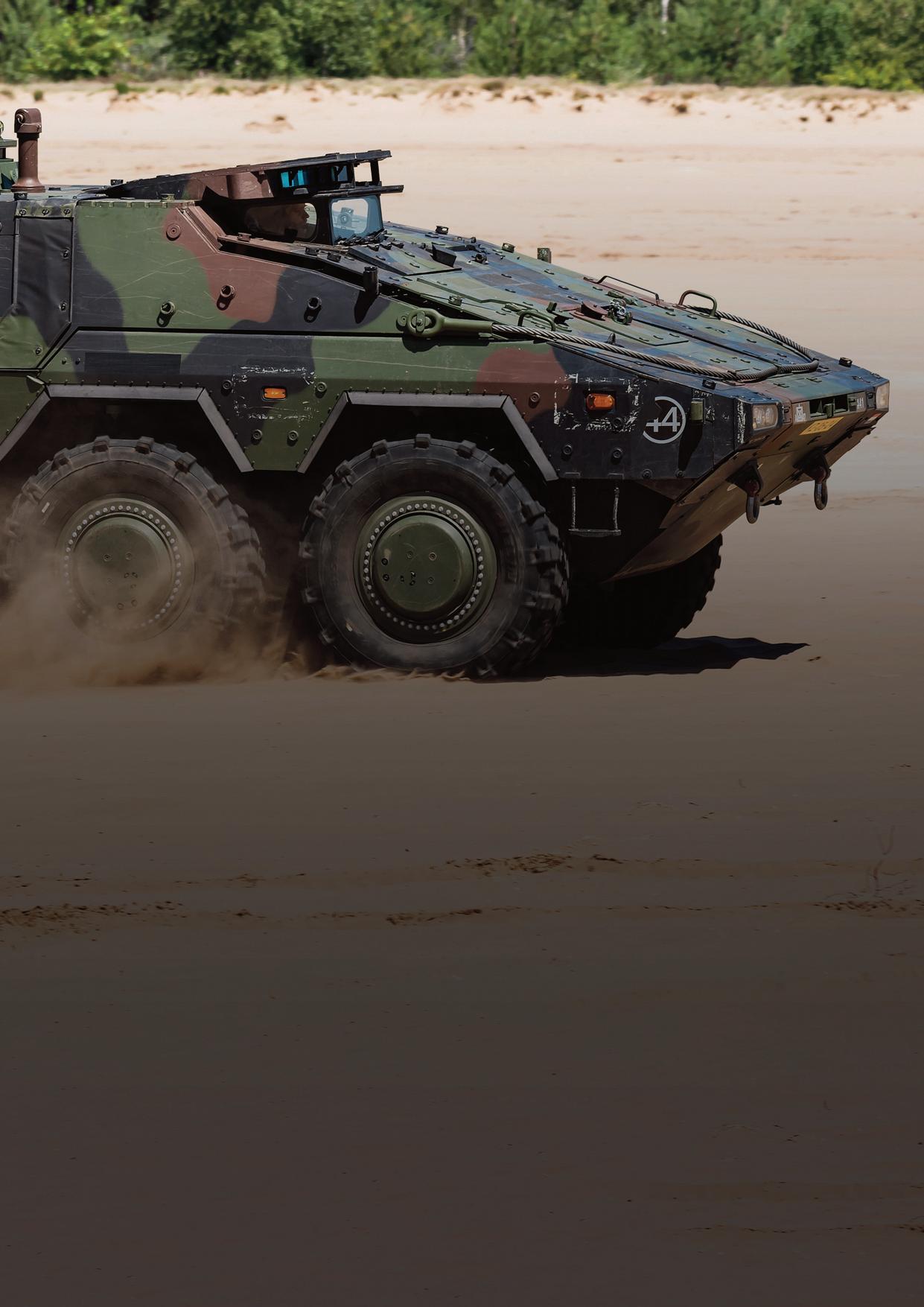
quarter-turn bayonet locking mechanism for fast and secure mating and unmating, making them ideal for use in demanding military environments.
The VG 95234 connectors' robustness and versatility extend beyond military applications. They are also used in heavy and off-road vehicles, rail track and rolling stock, oil and gas industries, factory automation and robotics, and various infrastructure applications. Aerco collaborates with several top-tier connector manufacturers to supply these militarygrade components, including TE Connectivity's Deutsch connector range, ITT Cannon, Souriau by EATON, and TT Electronics AB Connectors. Additionally, Aerco offers a range of VG approved parts and accessories such as strain relief clamps, heat shrink adaptors, screened back shells, and protective caps, providing comprehensive solutions for production lines requiring VG 95234 or equivalent rated connectors. In addition to connectors, Aerco supplies military-grade cables from leading manufacturers like Amokabel. One notable product is the DefStan 02-527, also known as fire survival cable. This cable is produced to the UK Ministry of Defence (MoD) Defence Standard 02-527 (formerly NES527) and is designed for use in Her Majesty's Ships and Submarines. It is engineered to withstand extreme heat in the event of an onboard fire, ensuring that power is retained in critical emergency systems such as lighting, life support, alarms, and shutdown systems for as long as possible.
Cables meeting the Def-Stan 02-527 standard have been rigorously tested to ensure they can perform at fire temperatures for up to three hours. Building on the requirements of 02-256, these cables also feature a limited fire hazard sheath that produces less smoke and toxic fumes and can tolerate contact with water, oil, and lubricants. Their fireretardant properties are due to their silicon insulation and glass fiber braid, which transforms into silica at high temperatures, allowing continued operation for a limited time during a fire. Overall, DEF STAN 02-527 cables play a crucial role in maintaining the effectiveness and

readiness of military infrastructure by establishing rigorous guidelines for the quality and performance of electrical cables.
Aerco's dedication to quality is underscored by our adherence to rigorous standards and certifications. We are ISO9001 and EN9120 certified, ensuring that our operations meet the highest quality management standards. Additionally, we hold UL certification to respool cable and wire at custom lengths while retaining the products' UL accreditation, providing our customers with tailored solutions without compromising on quality.
Our team of technical specialists is available to assist customers throughout the design process, ensuring that the products selected meet their specific needs and requirements. Aerco also offers a Call-Off service, which ensures that products are immediately available throughout the purchasing contract period, reducing waiting times and ensuring timely delivery of essential components.
Aerco's long-standing reputation as a reliable supplier of military-grade electronic components is built on a foundation of quality, expertise, and customer service. With over 60 years of experience in the industry, we are proud to support military and defence programs with a comprehensive range of products from world-class manufacturers. Whether it's connectors, cables, or accessories, Aerco is committed to providing the highest standards of quality and performance to meet the demanding needs of the defence market. As we continue to evolve and expand our product offerings, our focus remains on delivering exceptional value and support to our customers, ensuring their success in every mission.
Horstman originally designed the InArm® suspension unit for the UK MOD’s Future Scout Cavalry System (FSC) Tracer and US Army’s Future Combat System (FCS) programs. InArm® is designed to eliminate the need for torsion bars and to minimize or eliminate road arm penetration of the vehicle hull. This allows the vehicle designer to overcome the internal packaging constraints, minimize the external packaging constraints, and overcome vulnerability to mine blast and crew exposure to the fragmentation that results from torsion bars. We currently supply InArm® suspension units to General Dynamics Land Systems in the USA for their M10 Booker platform and they are performing exceptionally well. We have received excellent feedback from the vehicle crews as the vehicle is now beginning to be deployed in to the Airborne Brigade Combat Teams. Moreover we are developing InArm® solutions for many large global armoured vehicle programmes as customers see the benefit of the suspension.
In addition, Horstman has Under Armour Track tensioning solutions allowing the driver to adjust track tension without the need to manually charge up or down the track tensioner outside the vehicle. Therefore, Horstman has a battle winning ready suspension and track tension upgrade available for any potential upgrade of the UK’s AJAX fleet.

Developed by Horstman in the late 1980s for tracked vehicle and wheeled applications, Hydrostrut® was designed from the outset to eliminate the need for a separate spring by combining the gas spring into the damping unit. This allows the vehicle designer to overcome internal packaging constraints in the case of torsion bars or external packaging constraints in the case of coil springs.
The hydro-pneumatic suspension uses high-pressure nitrogen gas and an integral oil damper. Robust environmental seals make the Hydrostrut® a sealed module suitable for robust environments. The rising spring rate of compressed gas provides a natural progressive end stop to travel and reduce shock loads into the chassis and crew. Separate bump stops can be eliminated or significantly reduced in size and cost. Horstman provides the world’s widest range of Hydrostruts®, together with ride height and Active Damping options. Proven in a wide variety of 4×4, 6×6 and 8×8 wheeled combat vehicles such as the AMV, PARS and Terrex, Horstman has continuously upgraded Hydrostruts® with the latest in ride height control and Active Damping technology. Therefore, Horstman has a battle winning ready suspension, ride height control and active damping technology available for any potential upgrade of the BOXER fleet.

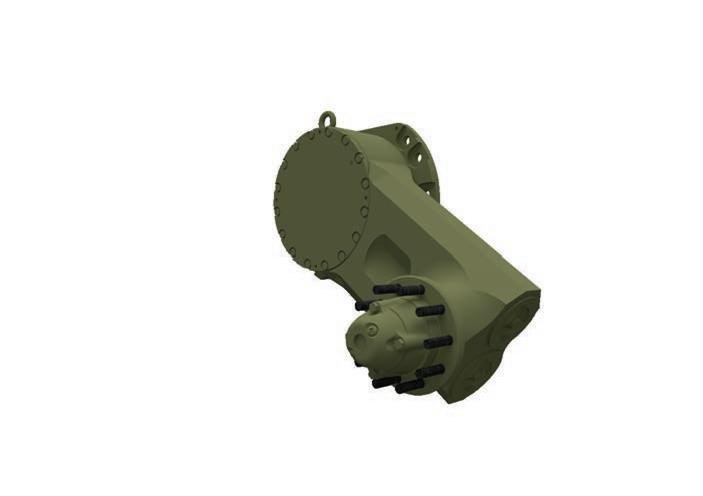


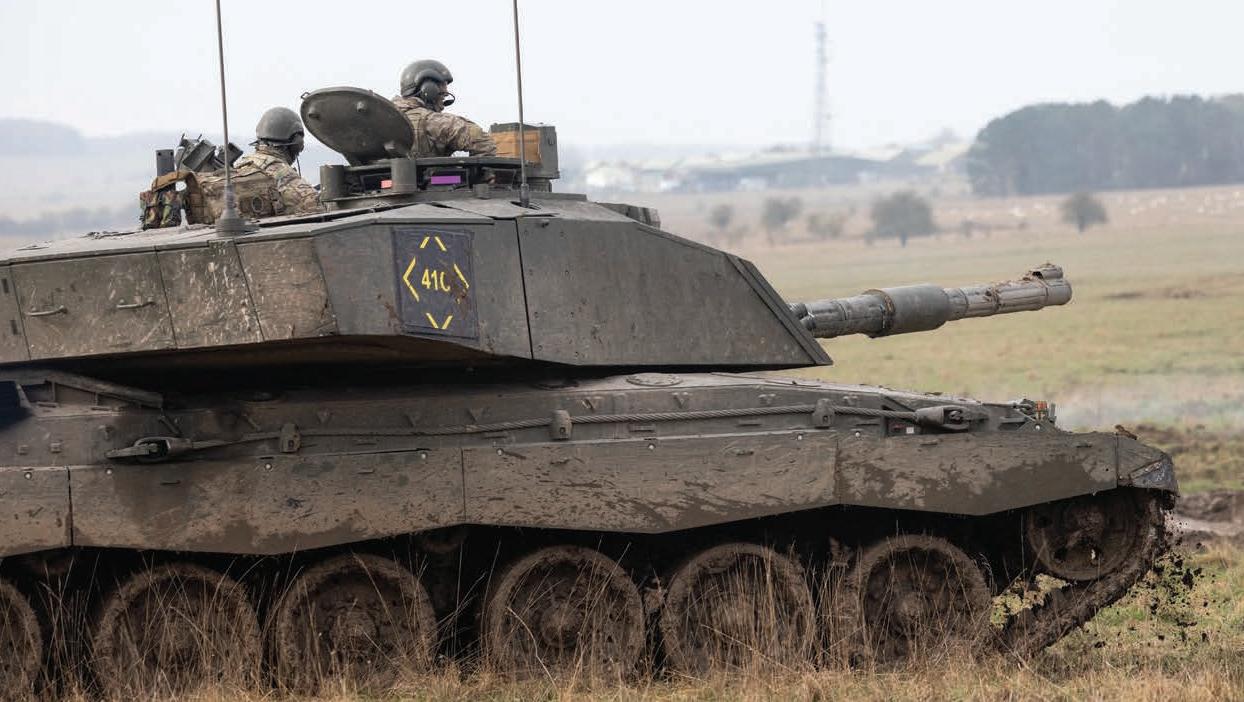

The UK is upgrading its Challenger Main Battle Tank (MBT) and its Challenger variants. Horstman is supplying its new 3rd Generation Hydrogas® suspension units for all these vehicles under a 10 year contract. This contract is an upgrade programme involving the full strip down of the existing suspension units and the rebuild with many new internal components including bearings, seals and surface finishes. The new units provide the Challenger family and the new Challenger 3 MBT with the best Hydrogas® suspension in the world. The units provide the vehicles with superior mobility and stability, which will greatly contribute to making the MBT the most lethal tank in the world.
The UK has a need for new wheeled vehicles in the Utility, Medium and Light Protected space under the LMP. Horstman has significant experience, existing and new products to offer into these programs. Recently for the British Army, Horstman supplied, at very short notice, new Hydrostruts® and a Ride height Control system to retrofit to the Mastiff and Ridgeback vehicles creating a new XC variant. This significantly improved the vehicles’ mobility on operations in Mali under a contract to NP Aerospace. In fact, if you want to experience our suspension at DVD, NP Aerospace will have the vehicles available to be a passenger on-board at their stand. These XC vehicles have proven that we can upgrade existing vehicles should they be required by the British Army.

For new vehicles Horstman has a full range of linear dampers and Hydrostruts and our new HydroCore® offering. Developed by Horstman in 2022 for tracked vehicle and wheeled applications, HydroCore® is a new cost effective Hydrostrut® designed from the outset to allow for scalable mobility architecture with variants for commercial and military use. Within each variant there are a number of versions to allow for varying weights per wheel station. The versions are Small, Medium, Large and Extra Large. Our scalable mobility architecture and HydroCore® product offers vehicle manufacturers and fleet managers true flexibility – a single product for maintenance purposes with multiple upgrade kits that can be installed as and when desired. Different vehicle configurations in the same fleet of vehicles can now have a common part for maintenance purposes but have the option to deploy improved performance or functionality depending on theatre or threat levels.
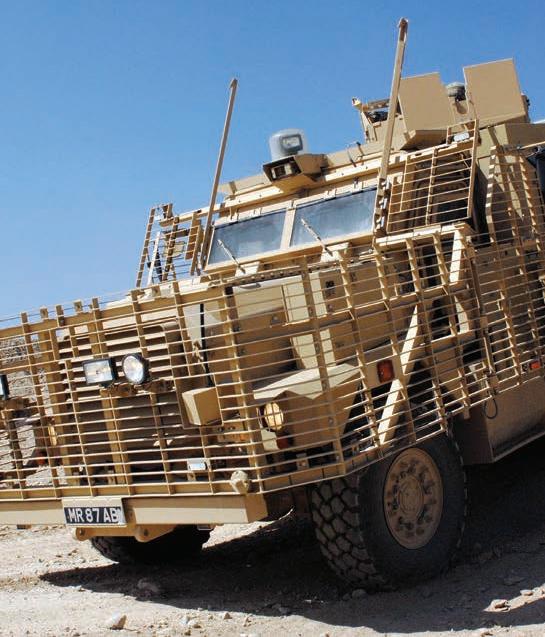
While connectors are at our core, AirBorn is much more than just a “connector company.”
We proudly manufacture cable (including active optical and 昀ber optics) as well as 昀exible circuits and printed circuit board assemblies. We also fabricate complete chassis/box builds, power supplies, and wiring harnesses. Additionally, we offer engineering, quali昀cation, and lab services. Our teams are highly trained and well-equipped to deliver the 昀nest quality products every time.
By offering all our “Model-to-Market” services under one roof, we eliminate the markups that come with managing multiple suppliers — reducing lead times and saving both time and money.



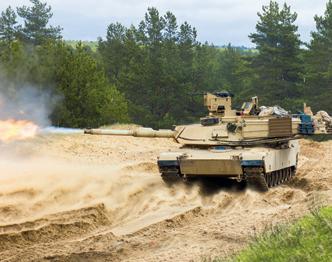
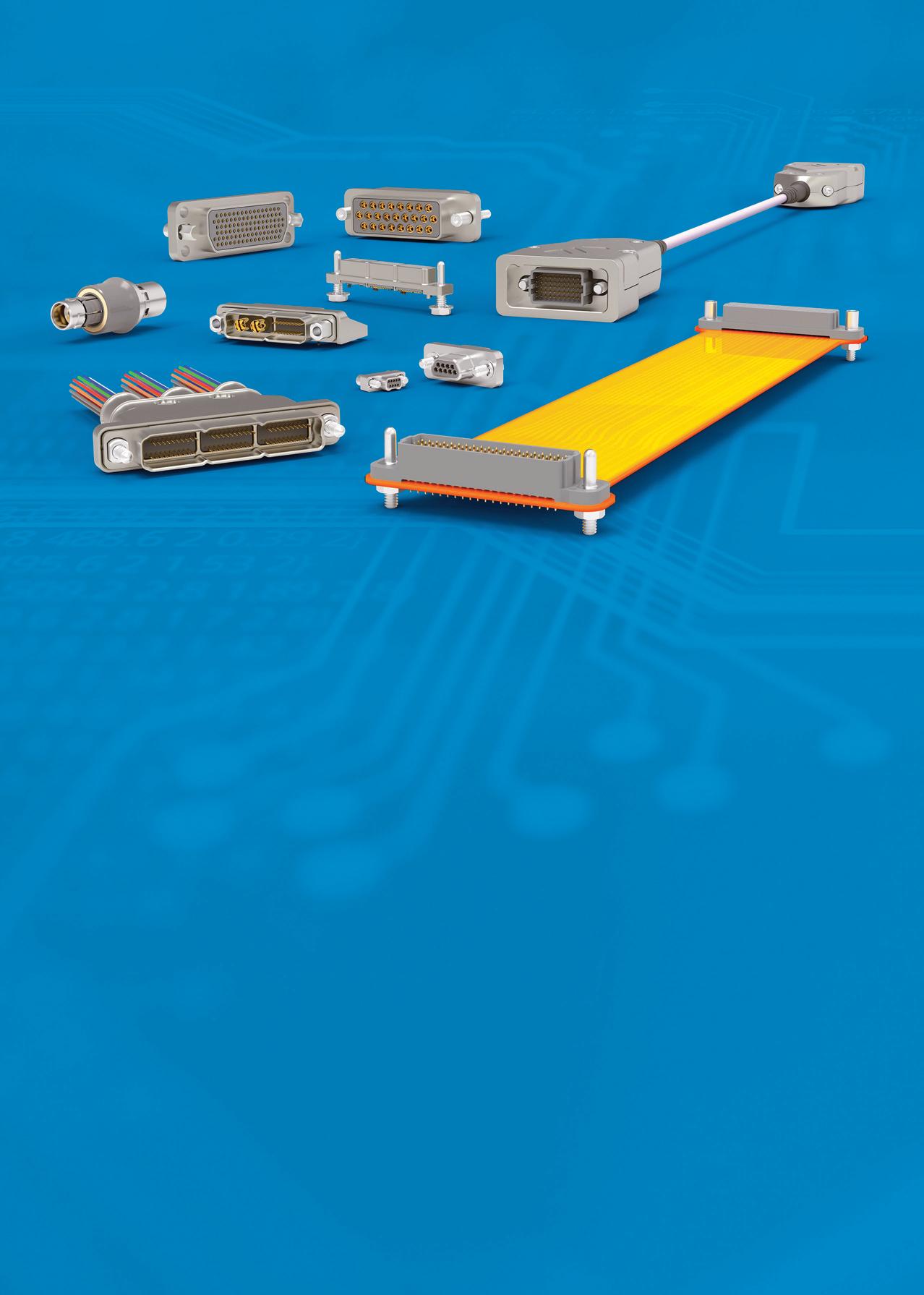

For 30 years, AdaCore has provided the tools needed to build reliable, safe, and secure software.
Ada is designed specifically for large, long-lived applications where reliability, efficiency, safety, and security are vital.
AdaCore’s technical team has been closely involved with the Ada language since its inception. Our GNAT Pro development environment combines state-of-theart technology with expert support to provide a natural solution where efficient and reliable code is critical.
Ada is often used in conjunction with other languages on large, mission-critical systems, and the Ada design explicitly caters to such usage, enabling customers to leverage their investment in Ada across the broadest range of development platforms.
Find out more

For 30 years, AdaCore has provided the essential tools for building reliable, safe, and secure software. Throughout these decades, the Ada programming language and freely licensed open-source software have been integral to AdaCore's mission.
CEO and AdaCore co-founder Franco Gasperoni takes pride in the company's association with Ada and its Ada 95 pioneers, such as Tucker Taft and the late Robert Dewar (also a co-founder with Cyrille Comar, Richard Kenner, and Ed Schonberg):
“Ada's precision programming, which combines specifications, typing, and coding, remains at the core of our approach. In the last decade, we have extended precision programming with automated verification in SPARK/Ada. It is no surprise that, as we expand our palette of supported languages, we have embraced Rust alongside Ada, SPARK, and the less precise but essential C/C++ languages.”
AdaCore was also a pioneer in developing an innovative business model for commercializing freely licensed open-

source software at a time when its benefits were less widely understood and accepted than they are today. AdaCore embraces the collaborative and dynamic interaction between commercial users and open-source technologies through contributions to the Free Software Foundation and platforms like GitHub.
Over the years, partnerships with other companies have become increasingly important. One of these partners is Wind River. Paul Parkinson is the Field Engineering Director, Aerospace & Defence, EMEA at Wind River,
“I remember fondly my first visit to AdaCore’s Paris office in December 2000 to meet with Franco Gasperoni and the AdaCore team to discuss the field integration of AdaCore GNAT Pro and Wind River’s Tornado IDE and VxWorks 5.4. The technical collaboration flourished into a strong partnership. Looking back over two decades of working together, it’s satisfying to see how AdaCore’s leadership in Ada technologies and Wind River’s VxWorks platforms have been successfully deployed together by many mutual customers on high integrity and safety-critical avionics programs.”
CTO of AdaCore,Arnaud Charletcelebrates the focus on safe and secure software and how this has enabled them to find a distinctive market position,
“We started 30 years ago with an Ada front-end to GCC. We then gradually expanded to a fully integrated development environment supported on multiple platforms, enhanced with debugging, source navigation, completion, pretty-printing, advanced static and dynamic analysis capabilities, and C, C++, and Rust support. Our focus on safe and secure software has put us in a unique position where we can offer very longterm support and maintenance, as well as state-of-the-art software supply chain security and safety guarantees.”
AdaCore is known for putting its customers' needs first. Quentin Ochem has worked at AdaCore for 20 years and is now Chief Product and Revenue Officer,
“I’ve had the opportunity to witness two out of the three decades of the company's existence.
I joined AdaCore because I wanted to work on compilers and I wanted to work on Ada. However, I was hooked as the company embraced new technology avenues, static analysis, structural code coverage, certification, or formal proof. Today, we’re continuing on this track, completing the offer with new programming languages and tools, gearing towards being the trusted one-stop shop for high-integrity developers. I’m excited to be part of that journey, and more than ever, I look forward to the decades to come!”

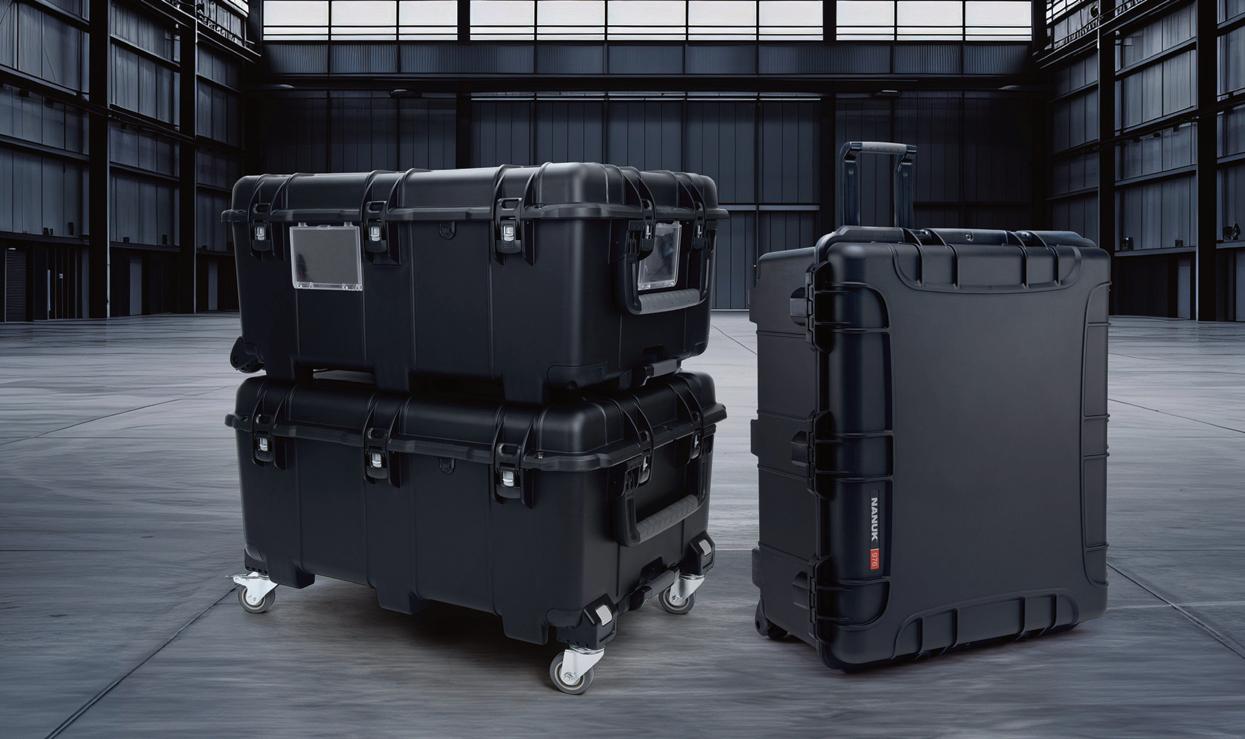
Engineered to meet the rigorous demands of military and defense operations, the 976 Tactical Case delivers unparalleled mobility and secure storage for critical equipment.
Equipped with a heavy-duty two-stage retractable handle and four durable polyurethane wheels with stainless steel ball bearings, the 976 Tactical Case ensures smooth and reliable movement, even in challenging environments. The optional caster wheel kit enhances maneuverability, allowing you to transport substantial loads with minimal exertion.
The 976 Tactical Case is available in several configurations, including the 976M, 976W, and 976T models, each tailored to specific operational needs. These variants offer customizable features and configurations, ensuring that you have the precise case to support your mission requirements.


Designed with operational efficiency in mind, the 976 Tactical Case provides expansive storage capacity for a range of equipment. Choose between the customizable interior layout or the pre-fitted cubed foam for enhanced protection. The 976 ensures that your essential gear is securely stored and readily accessible, optimizing performance in the field.
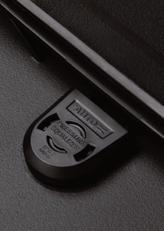
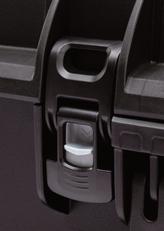
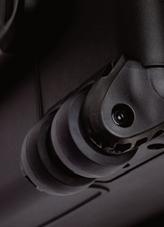




Steatite is a supplier of secure militarygrade radio technology and computing products. The company is widely regarded as the UK and Europe’s leading technology expert in the use of advanced MIMO communication systems for tactical applications.
The company, part of the Solid State plc Group, operates from three sites in England and is the UK’s only re-seller of Persistent Systems Wave Relay products. Specialist Communications and Computing teams are based in Redditch, Worcestershire; Leominster in Herefordshire is home to the Antenna design and manufacturing centre, and the newly-opened Ashchurch site in Gloucestershire develops integrated computer systems, including operator consoles and 19” Rack Cabinets. Steatite also works closely with other Solid State Group businesses, Custom Power, which specialises in custom designed batteries and portable power supplies, and Active Silicon, a manufacturer of imaging products and embedded vision systems.

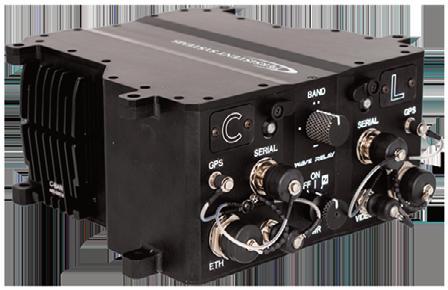
Where most radio devices struggle to maintain signal when travelling through urban, subterranean and maritime environments, Steatite excels in implementing Multiple Input Multiple Output (MIMO) systems using Persistent Systems’ powerful MPU5 radio and supporting products. MIMO systems are suitable for voice, data and video traffic and thrive in complex RF restricted environments. The MPU5 uses MIMO technology to build a Mobile Ad-hoc NETwork (MANET) which doesn’t rely on any pre-existing infrastructure; instead, data traverses the network by ‘hopping’ from one network node to another until it reaches its destination. Persistent Systems’ MANET, called Wave Relay®, creates networks which are self-forming and self-healing. If nodes in a Wave Relay® MANET network become unavailable for any reason, the Wave Relay® algorithm running on the remaining nodes will reroute network traffic seamlessly via the most efficient path.
For dismounted personnel, the MPU5 radio significantly decreases the amount of gear needed to be carried, providing users with all the core data, video, and voice functionality required. Able to withstand extreme conditions in the harshest environments, the MPU5 supports the highest standard ratings for temperature, water immersion, shock, salt fog, and security.
For unmanned vehicles, replacing many systems with one MPU5 radio can save on size, weight, power and cost. An Android control application installed directly onto the MPU5 radio enables a single smart radio to control an entire fleet or swarm of unmanned systems.
Further expanding the communication capabilities of the MANET suite is the GVR5. The GVR5 provides simultaneous, dual-band, robust, low latency, and high-capacity networked communications among tracked and wheeled ground vehicles, and among ground vehicles and Wave Relay® MANET-equipped aircraft.
As well as providing this robust and highly secure equipment, Steatite supports users with full training and guidance on installing, running and maintaining these networks in challenging conditions.


As an innovative and skilled engineering driven company, Steatite is constantly developing new products. A number of their products have Wave Relay® embedded within them, enabling cutting-edge devices to be available with the exceptional capabilities of this technology.
Steatite’s Universal Command and Control Terminal (CRiB) is a prime example of their engineering capabilities. Designed with portability, reliability and powerful functionality in mind, the CRiB is an all-in-one battle management system, complete with unmanned systems control capability, voice/data communication, and full motion video (FMV).
Packing a powerful i7 processor, 32GB RAM and 512GB of solid state storage, the computing power of the CRiB is ideally suited to running high-end situational awareness software applications. The CRiB can run both Android and Windows software concurrently and features a dual screen interface, with an HDMI port allowing for a third external screen to be connected. An IP66-rated glove-friendly rugged keyboard and mouse situated in the centre of the CRiB console allows the user to operate both Windows and Android systems directly, alternating between the two via a button press. Additional USB ports on the CRiB allow users to connect external keyboards, mice, and Windowscompatible peripherals.
Other features include two high-speed USB 3.0 ports for use with all standard USB-compliant devices. An RJ45 Ethernet port provides access to a local area network connection, whilst a second RJ45 Ethernet port can be used to connect the CRiB to a Cloud Relay network. Two hot swappable UN-approved 2590 rechargeable battery packs provide the CRiB with an uninterruptable power supply. This gives the CRiB 588WH of power, providing enough power for a full day’s use on battery alone.
Steatite also offers a range of resilient timing systems to support precise location tracking and navigation. GNSS and PNT solutions from Safran allow users to simulate all major constellations, anywhere in the world, and at almost any future or past date and time. For example, the VersaSync rugged GNSS Time & Frequency System is a high performance GNSS master clock and network time server that delivers accurate, software configurable time and frequency signals under all circumstances, including GNSS-denied environments.
Rugged technology requires extensive testing to ensure that nothing fails when subjected to extremes of temperature, vibration and
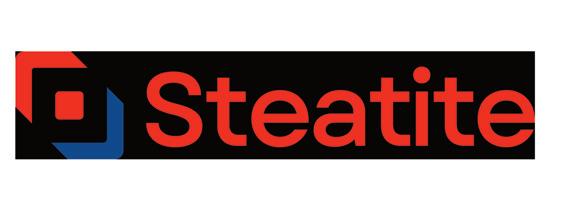
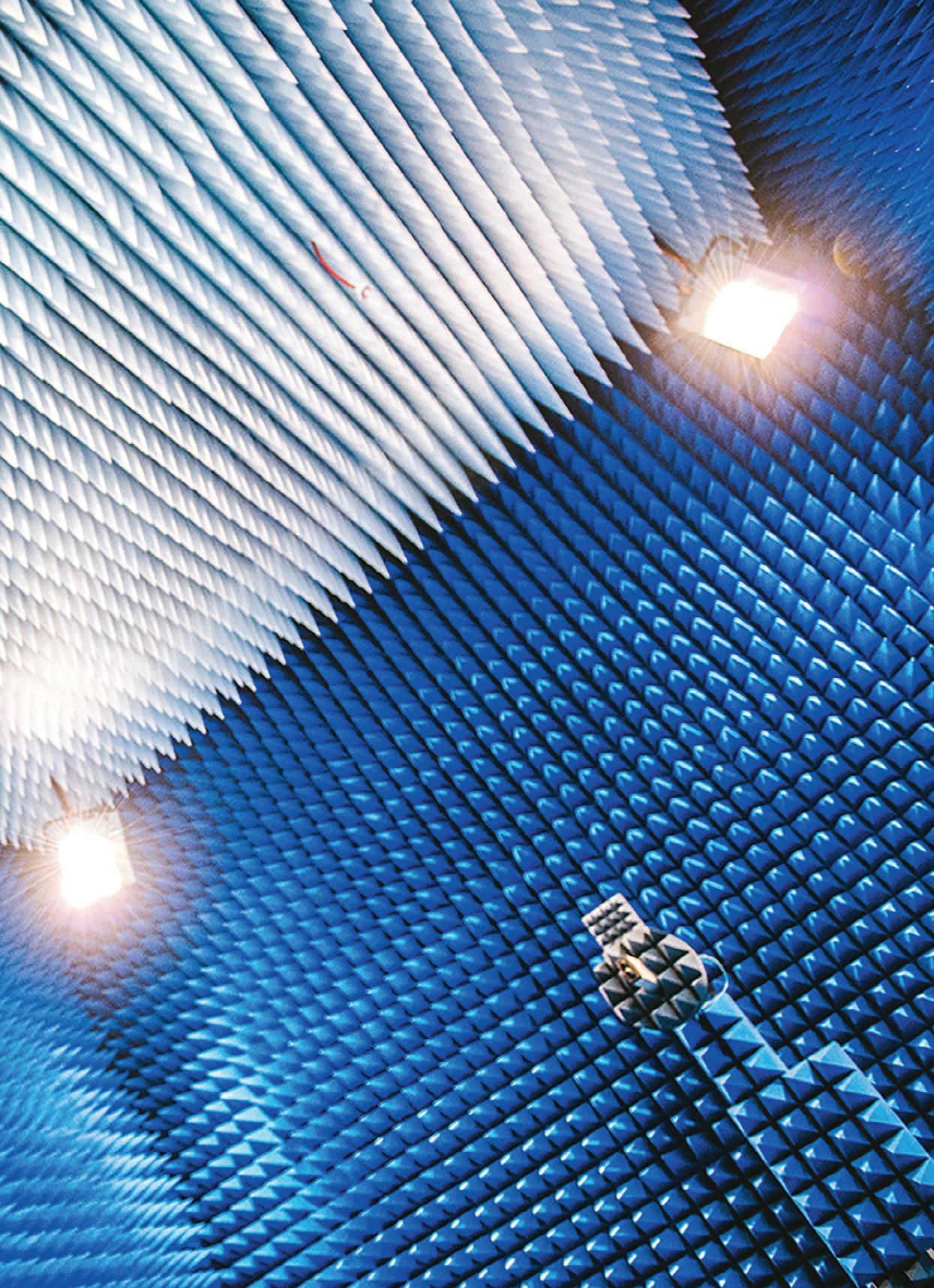
contaminants such as dust or moisture. Steatite’s expertise extends to comprehensive in-house testing which ensures that the Steatite name remains synonymous with quality and reliability.
At the heart of the Leominster facility is a world-class state-of-the-art spherical near-field RF test chamber that significantly enhances measurement capabilities, and in many cases enables the company to exceed clients’ needs and expectations.
The test chamber, measuring an impressive 7m x 5m, and 6m in height, accommodates antennas ranging in size from hand-held horns up to 3m diameter dishes, and across the frequency range of 500 MHz to 40 GHz. The techniques employed allow full far-field measurements to be derived without the complication of requiring a large-scale external test range facility.
The site also boasts an extensive environmental testing laboratory. Incorporating a climatic chamber, vibration table, and altitude test chamber, engineers can test products to exacting standards for shock, vibration, temperature and humidity. The lab can simulate the lowpressure conditions of >50,000ft, temperatures from –40°C to +150°C as well as 98% relative humidity. The vibration and shock table is capable of performing all classical shock pulses to 1,200kgf.
Steatite’s Redditch facility is home to a compact semi-anechoic EMC test chamber. The facility allows EMC testing for emissions, both radiated and conducted, and immunity, both radiated and conducted including electrical fast transients, surges and voltage dips. Having these in-house EMC test capabilities allows Steatite to significantly reduce design risks, while minimising the likelihood of additional external retest costs, which ultimately results in a solution that is delivered sooner and at lower cost than would otherwise be possible.
These facilities assist in producing equipment to meet tough DEFSTANs and MIL-STDs. The company also has experience designing, building and testing systems to TEMPEST requirements, ensuring the highest level of security and protection against unauthorised access.
Visit the Steatite booth at DVD on 18-19 September to see these products first-hand and talk to the team about connecting ground vehicles and crew with the most resilient communication solutions. Interested parties not attending the show can view all the details at www.steatite.co.uk and contact sales@steatite.co.uk
Oxley is delighted to have received a Silver Award through the Defence Employer Recognition Scheme in acknowledgment of the work the team do to support forces personnel.
The Silver Award recognises employers who support the armed forces, including existing or prospective employees who have served.

The commitments Oxley has made are in recruitment and selection procedures and through the introduction of positive policies covering defence people issues such as cadet adult volunteers and reservist policies.
Oxley also commits to promoting the benefits of being an armed forces-friendly organisation through knowledge transfer and advocacy within the business community. As an SME operating in the defence industry, Oxley is a proud signatory of the Armed Forces Covenant and maintains close links with the community and with charitable organisations supporting veterans.
Commenting on the 2024 Employer Recognition Scheme Silver awards; Colonel Mark Underhill OBE DL, Chief Executive at the North West of

England and the Isle of Man Reserve Forces’ and Cadets’ Association (NW RFCA), said, ‘On behalf of the Ministry of Defence we are honoured and delighted to be able to recognise the outstanding support and commitment given to the Armed Forces Covenant by businesses and organisations in the region, through the Employer Recognition Scheme awards. Each recipient has demonstrated not only that their support to the Covenant and the wider Armed Forces community, but also that they are prepared to support their Reservists, Service Leavers, Spouses, Veterans, Cadet Force Adult Volunteers and Cadets in the workplace.’
Oxley Group CEO, Darren Cavan commented, ‘We are delighted to receive this formal recognition of our commitment to being a forces friendly employer. As a manufacturer working in the
defence industry we are in regular contact with those serving and we very much value the commitment and the skills they have to offer. We have introduced new policies to support defence people and their families, both working within the business and prospective future candidates. We look forward to continuing our ERS journey, setting ourselves the challenge of progressing to Gold recognition.’
The Armed Forces Covenant is a promise by the nation ensuring that those who serve or who have served in the armed forces, and their families, are treated fairly, to find out more about the Covenant and the Employer Recognition Scheme journey, please visit About - Armed Forces Covenant
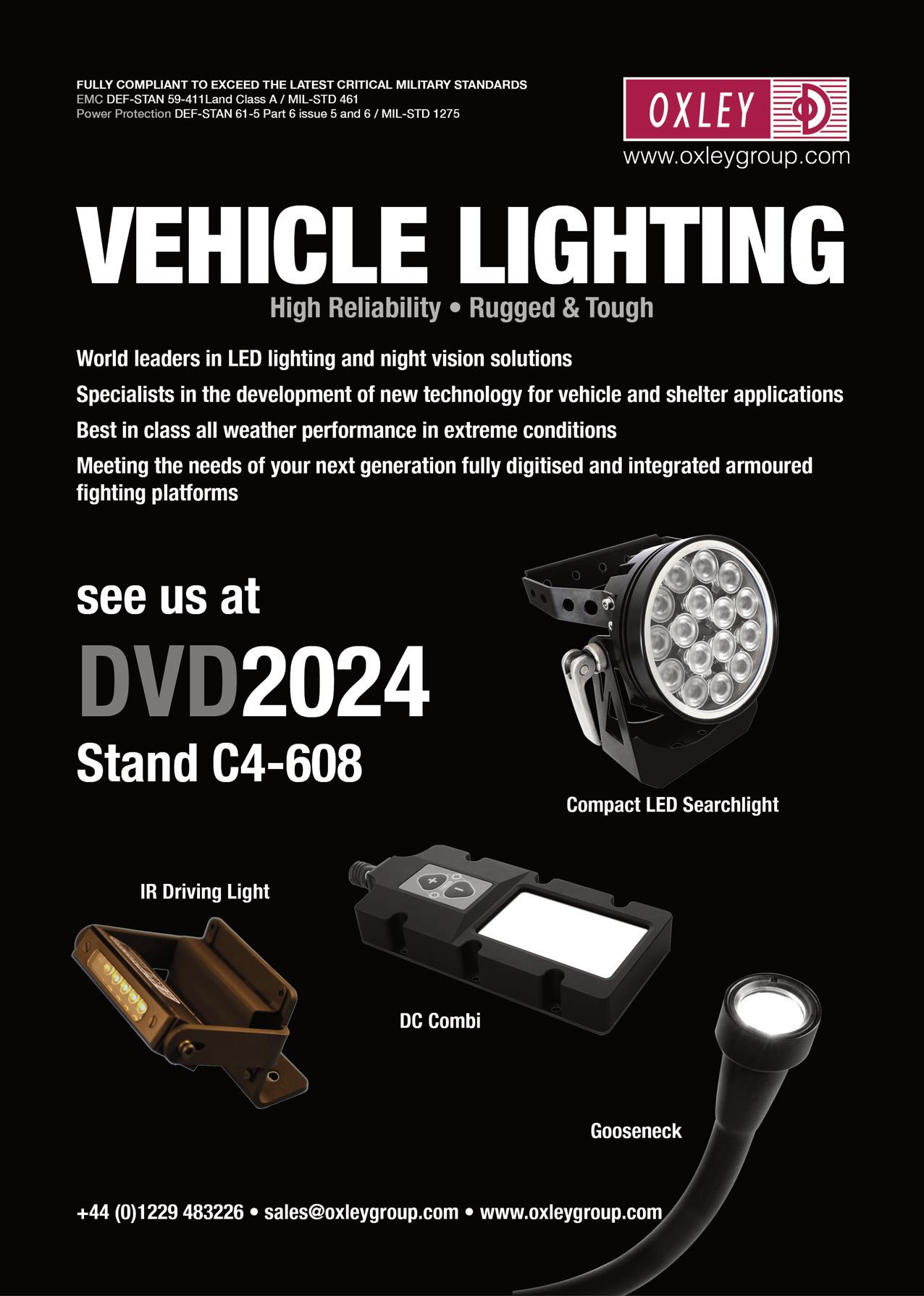






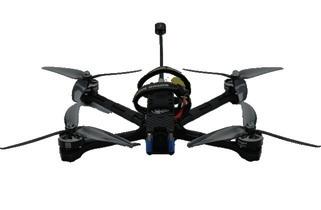
Red Cat’s family of ISR and precision strike solutions support multi-domain operations, for U.S. and Allied Defense and Security forces, with an advanced suite of artificial intelligence and computer-vision capabilities.


Red Cat Holdings, Inc. (Nasdaq: RCAT) (“Red Cat”), a drone technology company integrating robotic hardware and software for military, government, and commercial operations, today introduced its new family of unmanned Intelligence, Surveillance, and Reconnaissance (ISR) and precision lethal strike systems.
The announcement, made on the first day of Eurosatory in Paris, comes on the heels of Red Cat’s LOI to acquire FlightWave Aerospace Systems Corporation.
Red Cat’s family of ISR and precision strike drones will provide the industry with an alternative to conventional ISR/strike systems on the market that are high cost and non-retrievable. Red Cat’s sensor-to-shooter (S2S) system for identifying targets with optional precision strike capabilities is differentiated from other systems with its low cost portable drones. The objective of this new family of systems is to meet the increasingly urgent need of the Pentagon’s Replicator Initiative for swarms of lowcost “attritable” ISR and surgical strike drones deployable in air, land, sea, and sub-sea environments.
Red Cat’s mission is to redefine the role of sUAS for defense applications by combining the capabilities of ISR drones with precision strike payloads. The company is an established leader in the sUAS (Group 1) space with its flagship Teal 2 aircraft. As part of the new family of systems, Red Cat is introducing FANG™, a new First-Person View (FPV) drone with precision strike payload capabilities. The FPV drone is currently undergoing Blue UAS certification. The acquisition of FlightWave’s Edge 130 rounds out the family of systems, which will include all current and future Teal models.
“The entire nature of warfare and use of drone technology is undergoing a fundamental shift, and this new family of systems will completely disrupt the traditional ISR and loitering munition systems market,” said Jeff Thompson, Red Cat CEO. “Warfighters will be able to choose the right combination of drones and payloads for their specific missions and have access to an ecosystem of tactical AI, computer vision, and machine learning software that can positively identify t hreats and then have the option to engage and eliminate those targets.”
Red Cat’s new family of low-cost and portable unmanned ISR and precision lethal strike systems includes three aircraft with complementary capabilities and a common Ground Control System (GCS) such as the Android Tactical Assault Kit (ATAK) for multi-vehicle command and control:
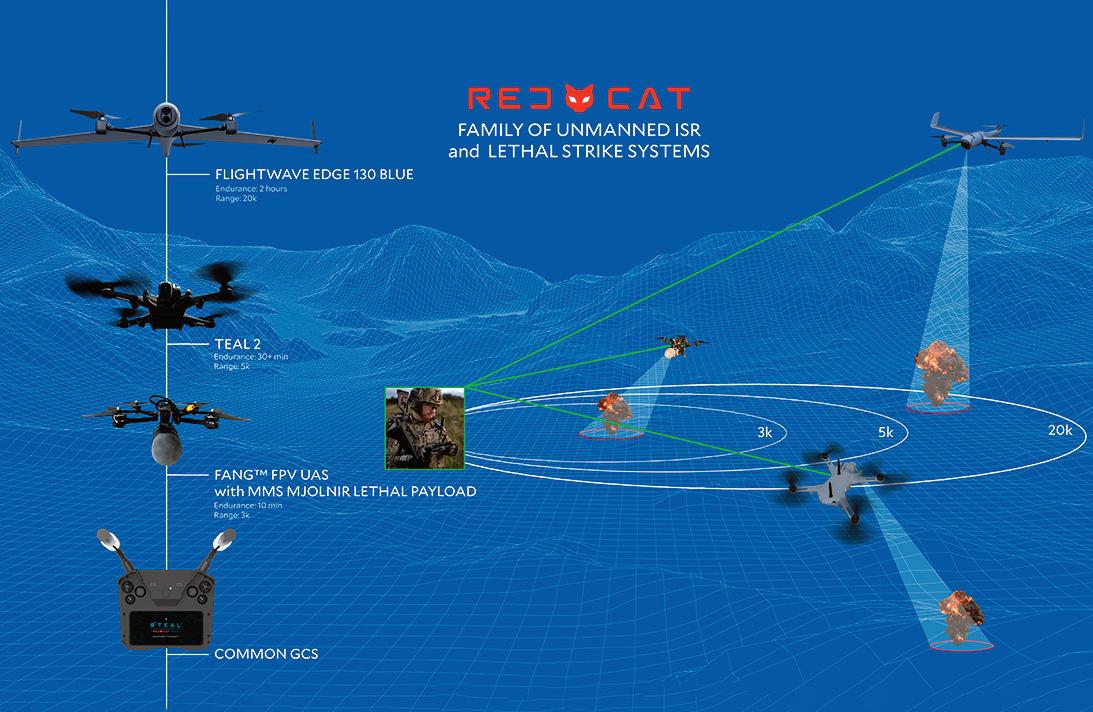
• The Edge 130 Blue, a Hybrid VTOL system, can be assembled and ground or hand-launched in just one minute by a single user to capture high-accuracy aerial imagery with long-range autonomy. Weighing only 1200g, the Edge can fly for over 2 hours in forward flight mode, an industry-leading endurance among all other Blue UAS approved drones available.
• Teal 2 and future variants are cost-effective, man-portable sUAS designed to “Dominate the Night™” that has best-in-class night vision, multi-vehicle control, and a fully modular design. Teal 2 has a flight time of 30 minutes and it is both Blue UAS Certified and FAA Remote ID approved. Used together with FPV strike drones, Teal drones can be used to provide battle damage assessment once a target has been engaged.
• FANG™, an FPV drone with a flight time of 10 minutes (under development and undergoing Blue UAS certification), will add surgical strike capabilities. Warfighters can combine and deploy these FPV drones with lethal payloads and ISR drones based on the mission profile for seek and destroy capabilities.
45:34:22 15:30:47
autonomy, AI, machine learning and computer vision will enable us to expand our capabilities over time.”
The new family of systems will require ongoing industry collaboration, underpinned by the Red Cat Futures Initiative. Both through Red Cat’s agile internal research and development, as well as partnerships, there is significant opportunity to optimize the family of systems with higher capacity batteries, C2 links, dedicated Electro-Optical (EO) and thermal payloads, and other accessories and decision support software. Additionally, Red Cat has the ability to manufacture these systems at a high production rate with repeatability to meet the demands of customers globally.
For more information about the Red Cat family of systems and capabilities, visit: https://redcat.red/solutions/family-of-systems/

“We are at the forefront of a new innovation cycle for the drone industry,” said George Matus, Red Cat CTO. “Technology integrations and partnerships that connect and optimize this new family of systems will play a significant role in its success. Open architecture and established relationships with some of the leading hardware and software companies in
TSS International BV together with MOV’IT GmbH (the German experts for High Performance and Heavy-Duty brakes) have launched an innovative solution in braking for heavy applications of the Toyota Landcruiser 300 (TLC300).
This innovation is specially designed and developed for the armoured TLC300 platform and is already installed in numerous vehicles resulting in overwhelmingly positive feedback from the end-users on the global market. The excellent performance of this complete brake solution for front and rear axle was also underlined during the vehicle homologation test for these VPAM VR9 vehicles at the end of last year.
The next final milestone in the industrialisation of the brake system has been reached, with the kick-off of serial production with cast-iron brake callipers and brake discs, resulting in uncompromised high performance at significantly lower cost.
This braking system for the armoured TLC300, which can weigh up to 6,5 tons in protection class VR9, offers a total solution for
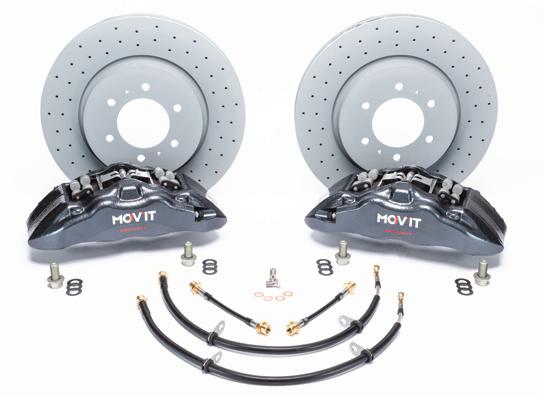
the front and rear axle and is equipped with an OEM-compatible, integrated electric parking brake (EPB).
Thanks to the plug & play functionality, the system can be installed quickly and easily via the original interfaces of the base vehicle.
Features and Advantages for maximum braking power:
• Optimised braking force distribution for increased Gross Vehicle Weight
• Use of steel-braided, teflon-covered brake lines
• Reduced torsion and increased torque in assembly
• Improved driving dynamics during braking
• Increased comfort
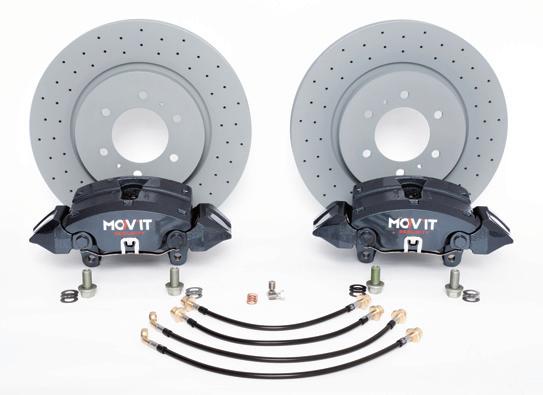





384x36mm drilled and internally ventilated
1-piece brake discs
Significantly larger friction surface +50% on the front axle; +95% on the rear axle compared to OEM
Reduced operational system temperature
Increased heat capacity
Reduced fading
Other characteristics:
Plug and play electronic parking brake (EPB) interface
• Use with original EPB motor (not included in standard delivery)
• Designed for optimum use with TSS Heavy Duty Wheel® (8,5x18“ and 9x20”)
• Field-proven performance up to and including level VR9
The braking system’s versatility extends beyond the Toyota Landcruiser 300 to alternative applications (with Electronic Parking Brakes), including armoured vehicles like the MercedesBenz G-Model and the Volkswagen Crafter. These systems are already developed and ready for serial production, ensuring that the same level of high-performance braking is available for a broader range of armoured vehicles. Additionally, new braking



systems can be developed and produced within a short timeframe, offering tailored solutions to meet specific requirements for various heavy-duty and armoured platforms.
All MOV’IT Security Brake Systems are designed to work in synergy with other TSS products, creating a seamless integration that ensures perfect fitment, optimal driving comfort, and enhanced safety & security. The compatibility with TSS's broader range of solutions means that customers benefit from a holistic approach to vehicle performance, where each component is engineered to complement the others, providing a superior driving experience and maximising the protection of the armoured vehicle.
Contact TSS for more information or to learn more about the Armour Mobility package of products for the armoured TLC300, including but not limited to:
- TSS Heavy Duty Runflat wheel assemblies
- Heavy Duty Suspension systems
- TSS ProtecTank® Self-sealing Fuel Tanks
- Vehicle Intercoms and emergency lights
- Shock absorbing blast mats



Chess Dynamics, the leading British surveillance, tracking and gunfire control specialist, has announced a successful collaboration with BAE Systems Bofors for the fire control element of the Tridon Mk2.
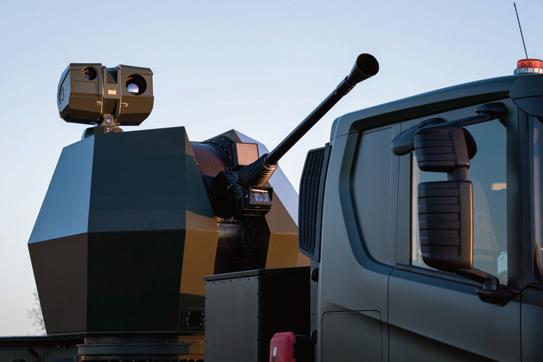
This next generation 40mm anti-aircraft system represents a significant advancement in firepower and operational capability, and incorporates Chess’ leading air defence system technology.
The Tridon Mk2 builds upon the legacy of the original Tridon system, renowned for its dependability, with enhanced capabilities to mitigate a wide range of threats from drones to aircraft. The system offers security and protection for military forces and civil infrastructure across large areas.
Chess Dynamics’ expertise in surveillance, fire control and precision positioning has been instrumental in accurately delivering live target coordinates to the Tridon Mk2 for a ground-based air defence (GBAD) role.
The Tridon Mk2 fire control system is a variant of Chess’ Hawkeye Air Defence (AD) system. The Hawkeye AD system provides an integrated fire control solution for all types of ballistic effectors. It contains high-definition thermal imager and daylight TV sensors, coupled with a
high-performance laser range finder, all co-mounted on a dynamic direct-drive positioner. With a built-in tracker, Hawkeye AD delivers precise 3-D coordinates of both air and surface targets to gun control or combat systems.
“We are incredibly proud to work with BAE Systems Bofors on this critical project,” said David Tuddenham, Managing Director at Chess Dynamics. “Our ElectroOptic Fire Control pedigree in both the Land and


Maritime domains delivers class leading GBAD technology and capabilities for BAE Systems Bofors and the Tridon Mk2 end users. This significant project for Chess builds on many years of partnership with BAE Systems”.
The collaboration between Chess Dynamics and BAE Systems Bofors underscores their commitment to delivering cutting-edge defence solutions to meet the evolving needs of modern warfare.
For more information, please visit:

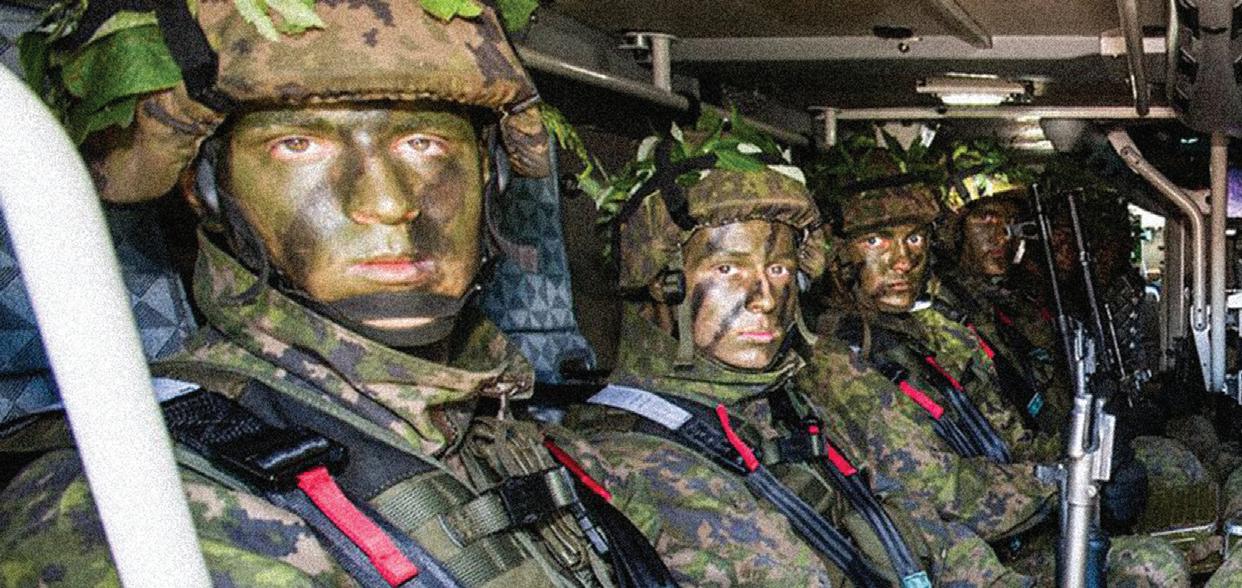

The SCHROTH Mine Blast Protected
Seat Systems are tubular lightweight
systems with a unique resettable
Energy Absorbing (EA) system
designed into the seat.
The EA design and technology comes from the years of experience SCHROTH has with energy management in seatbelt systems. The design of the seat gives the occupant not only excellent protection in a mine blast event, but also offers excellent protection in the event of an accident or impact. The All Belts to Seat (ABTS) design allows the vehicle manufacturer to optimize the installation of the seat within the hull. An integrated footrest can also be incorporated into the seating system for additional lower-leg protection. The unique SCHROTH EA technology is tunable to match the size and weight of the vehicle as well as the level of protection required and the available space within the vehicle interior. The EA is also designed to reset itself and offer high levels of protection for the secondary (slam down) event.

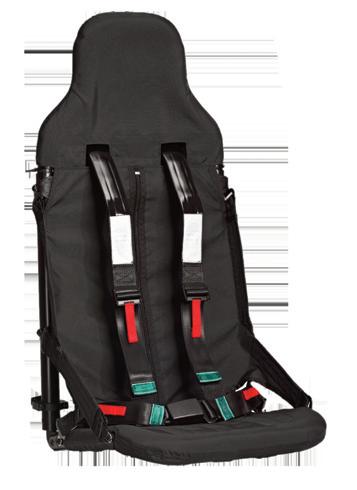

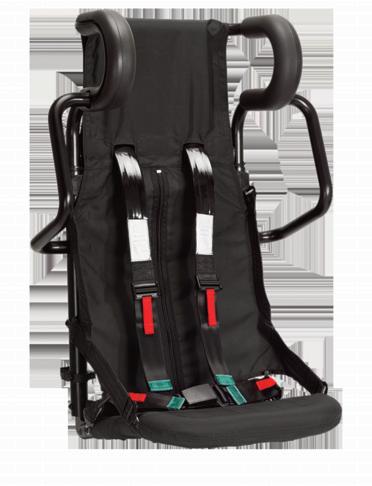

ed seating
wo versions:
• SU-62 compact forward- or rear-facing seat
• SU-63 side-facing seat with full or side specific headrest for exceptional side impact protection
The SCHROTH seating comes standard with an ECE certified lightweight 4-point harness restraint. Restraint systems with ECE complaint 5-point seatbelts are also available.
SCHROTH offers the ideal system for military personnel & troop transport configurations.


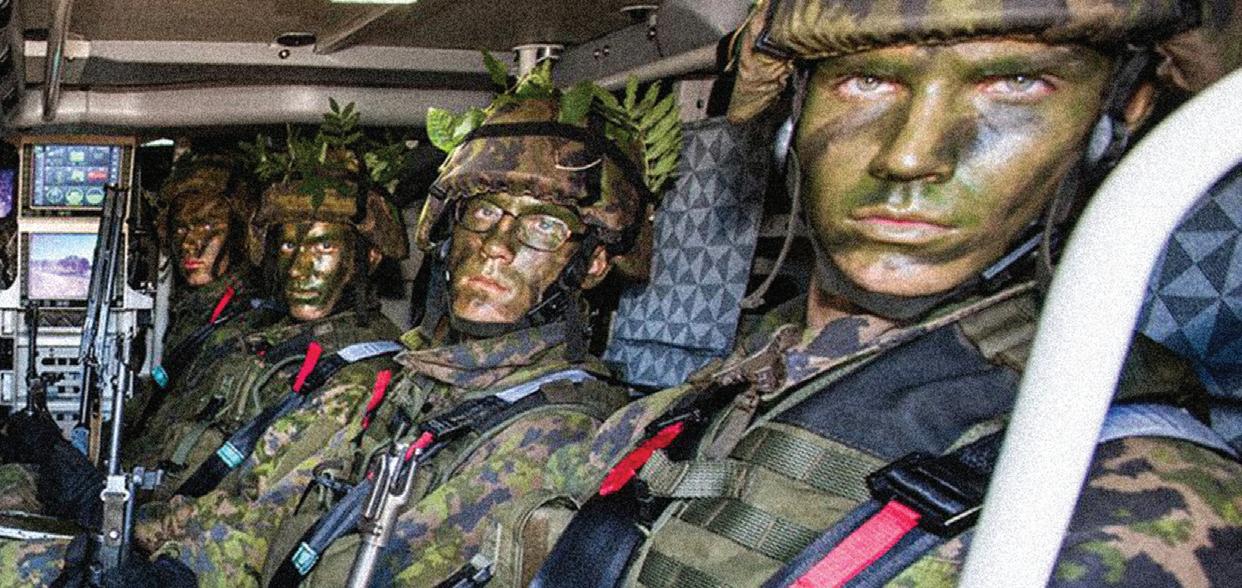

KEY FEATURES
• Quick release, wall-mounted interface
• Modular construction
• Spring Loaded Self-Folding, storable seat pan
• Foldable backrest
CUSTOM APPLICATIONS
Our lightweight seat systems may be adapted to many ground vehicle applications. We can assist with interface, integration, installation and ergonomic requirements as well as any vehicle specific seat modifications that may be required. CONTACT:
Werner Koch
Tel: +49 2932 97420
E-Mail: werner.koch@eu.schroth.com

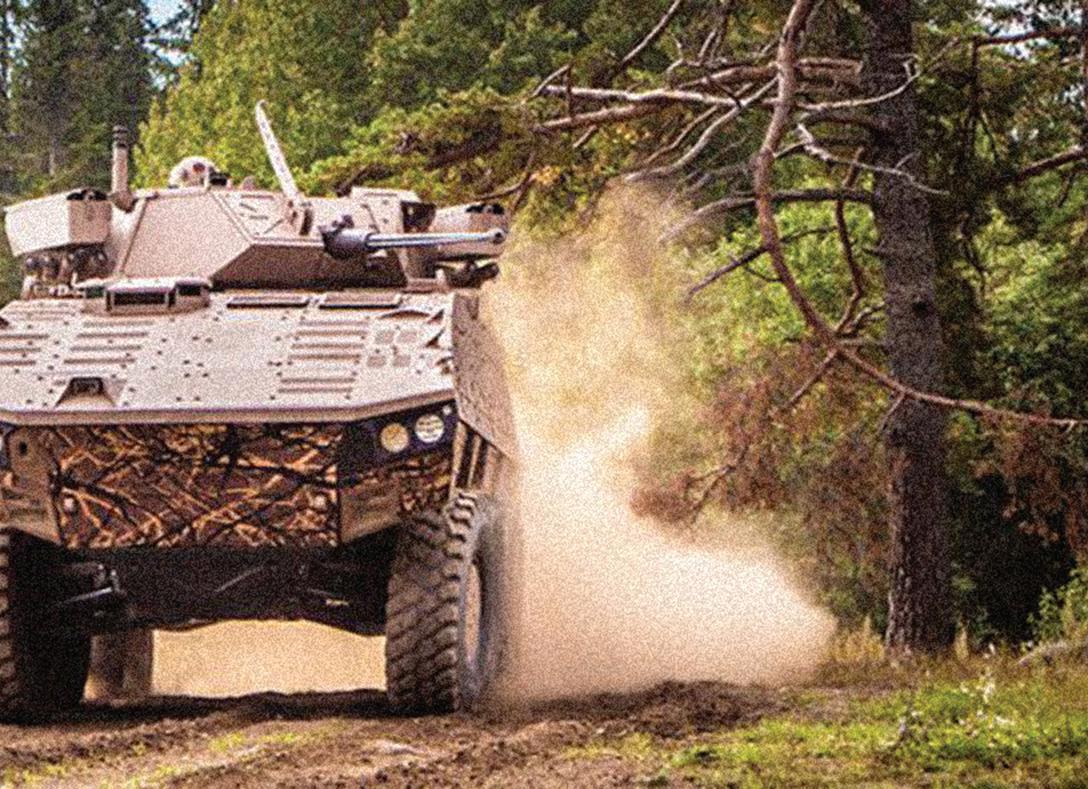

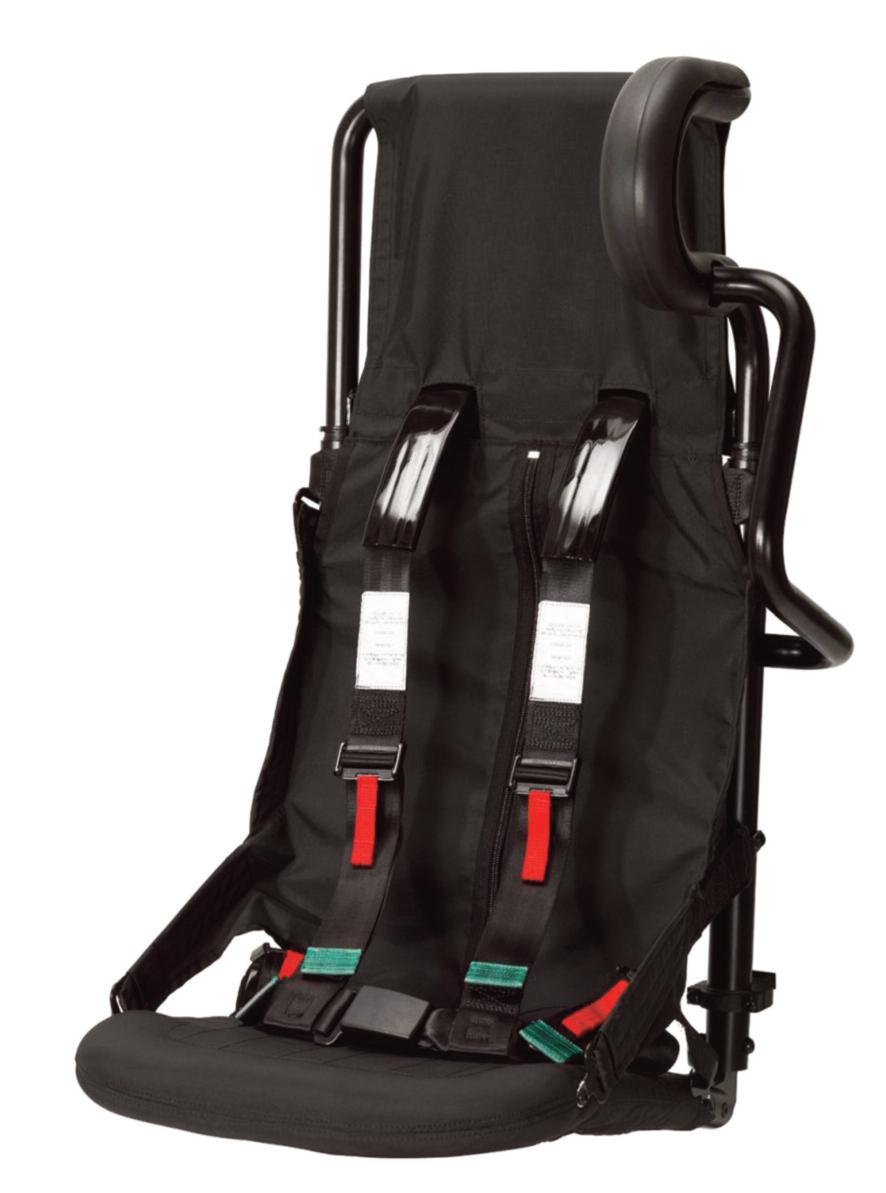


There’s nothing Artificial about our Intelligence.

See what we’ve been up to!

Since 1961, Greenray Industries has been a preferred provider of precision, high performance reference sources to many of the world’s leading military, defense and industrial manufacturers.
With a range of critical design innovations that enhance product performance and reliability, our quartz crystal oscillators help engineers realize their unique frequency control solutions. On the ground, in the air – and beyond.

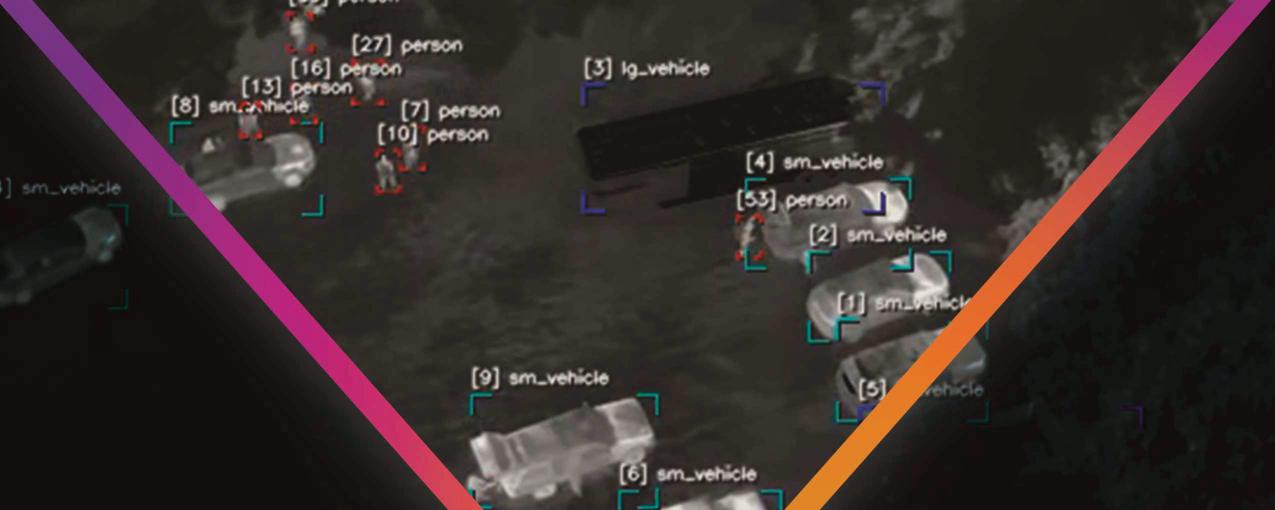



Increased field use of a combination of technologies achieves enhanced situational awareness, surveillance, and visibility across diverse missions.
The battlefield knows no seasons, demanding readiness for encounters at any time, day or night. In the realm of defense, security, and combat, visibility and real-time intelligence have become paramount to successful outcomes.
With this in mind, for more than a decade, Teledyne FLIR has been positioned at the forefront, providing cutting-edge thermal imaging solutions to allied defense forces, redefining the possibilities in intelligence, surveillance, and reconnaissance (ISR), compound security, border patrol, UAVs, autonomous combat vehicles, and counter-UAV systems.
Meanwhile, the convergence of advanced thermal imaging and artificial intelligence (AI) is revolutionizing the defense sector, among other facets of industry and government. Engineers have greater access to and are now leveraging clean, effective data to create sophisticated AI systems that integrate thermal and fused thermal-visible imaging. This intersection of deep learning AI techniques for digital, vision-based perception paired with improvements in computational imaging has
opened new frontiers for visual AI systems, enabling them to operate intelligently at the edge, including addressing image signal processing (ISP) challenges.
At the same time, modern processors boast advanced architectures featuring multiple central processing units (CPUs), graphics processing units (GPUs), digital signal processor (DSP) cores, and dedicated ISP compute blocks. Complementing this hardware evolution, the opensource community has contributed vital building blocks for perception systems, including networks like YOLO, platform-agnostic DNN file formats such as ONNX, and development frameworks like PyTorch and TensorFlow.
This technological synergy allows engineers to rapidly integrate perception and computational imaging into size, weight, and power (SWaP) optimized processors. The result is the ability to run neural networks and models at the edge on cost-effective mobile processors, enabling effective object detection and tracking for a wide range of applications, from automatic, real-time target recognition to advanced driver assistance systems.
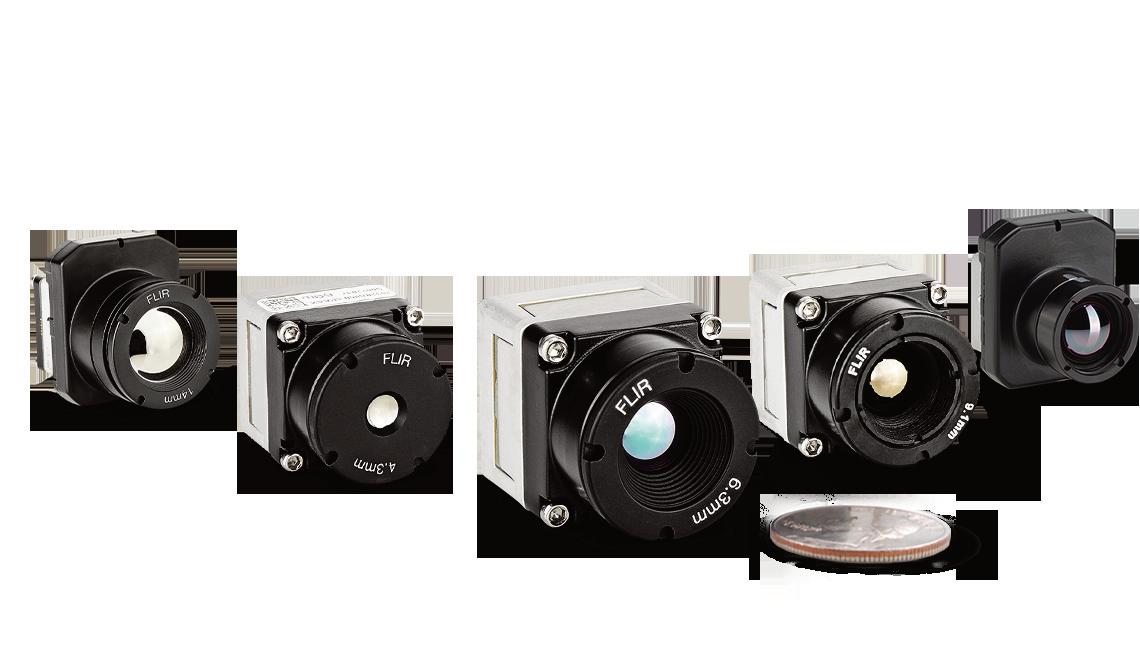
Teledyne FLIR’s makes this happen through the Prism software ecosystem, a purpose-built digital ecosystem delivering computational thermal imaging and decision support to the edge, involving the joint design of imaging hardware and computer algorithms to create novel imaging systems with unprecedented edge capabilities. In other words,
Prism represents a paradigm shift in computational thermal imaging. This digital platform delivers edge-based decision support by integrating imaging hardware and computer algorithms for visible, thermal, or a combination of the two. Prism provides an end-to-end computational imaging environment, supporting a wide array of projects and custom developments on the latest generation of low power, embedded mobile processors as a sensor agnostic program, including Qualcomm and NVDIA.
One low-power, embedded processor Teledyne FLIR provides is called the FLIR AVP, which stands out as a cornerstone of the ecosystem. Its SWaP-optimized design, coupled with the Qualcomm QCS8550's 48 TOPS inference compute performance, allows for real-time processing of vast amounts of data. The result is a powerful, intelligent tool designed to meet the demands of the most challenging environments, thanks mainly to its combination of advanced AI performance, efficient design, and broad application appeal. This makes the AVP an indispensable asset across various defense applications, from thermal image processing to visible camera feed analysis, purpose-built for the Teledyne FLIR’s IR cameras and the Prism software stack.
Critical to developing AI at the edge is an effective imaging module. Engineers require thermal camera technology that balances camera performance, ease of integration, and compatibility with the right processors and software systems to achieve this powerful blend of thermal and AI decisions.
Case in point: Teledyne FLIR’s Boson®+ infrared (IR) thermal camera offers a high-performing, uncooled longwave infrared (LWIR) thermal imaging technology option that has become the go-to choice for many top military technology integrators developing IR systems. With an industry-leading thermal sensitivity of ≤20 mK, Boson+ delivers sharper thermal imagery and improved spatial filtering, making it ideal for unmanned platforms, security applications, handhelds, wearables, and thermal sights.


Boson+ seamlessly interfaces with the FLIR AVP. It runs Teledyne FLIR Prism AI, enabling advanced detection, classification, and target tracking in IR. The AVP also operates Prism ISP algorithms, enhancing decision support through features such as super resolution, image fusion, atmospheric turbulence removal, electronic stabilization, local-contrast enhancement, and noise reduction.
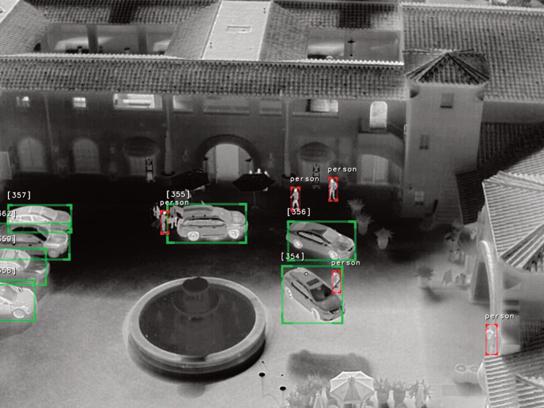
Within the Prism software ecosystem, Prism AI has emerged as a gamechanger for perception engineers when paired with the latest hardware from Qualcomm, NVIDIA, and other leading mobile processor technologies. Perception software models via Prism AI are available for automotive, ground ISR, air-to-ground, and counter-drone applications. This compact AI model, easily deployable on embedded systems, offers a growing list of object detection classes and the ability to fuse visible and thermal images. Its advanced thermal image processing capabilities prove invaluable in challenging conditions, such as nighttime operations or poor visibility scenarios. It can be used as a reference software or to provide the heavy lifting as the primary perception software to train and build effective AI algorithms. The software also introduces new shadow mode recording capabilities, batch data ingestion, and other features
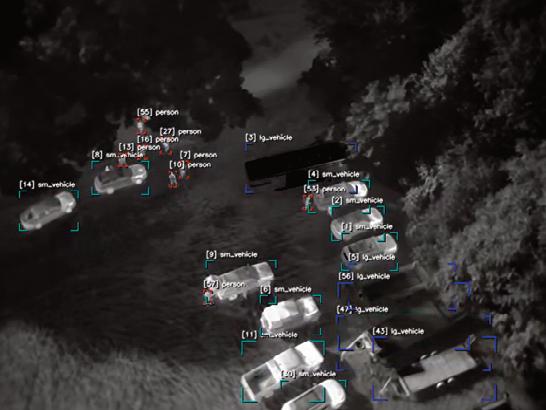
Figure 3. Prism AI Enables Classification, Object Detection, and Object Tracking
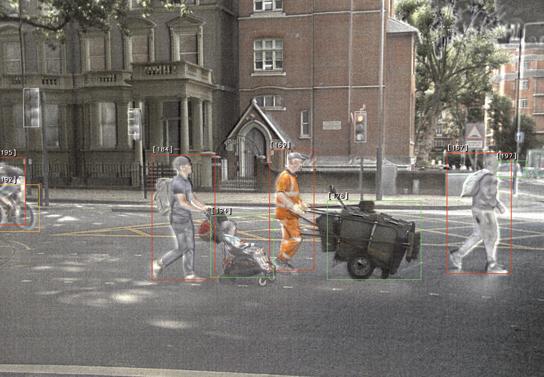
designed to streamline the integration of thermal sensors, ensuring superior object detection.
Complementing Prism AI is Prism ISP, a suite of advanced image signal processing software libraries. Featuring super-resolution, electronic image stabilization, and turbulence mitigation capabilities, Prism ISP enables developers to bring cutting-edge computational imaging to the edge while optimizing performance and reducing development costs.
Within Prism ISP, users enjoy a variety of advanced processing techniques and capabilities that significantly improve the quality of the data and, thus, the AI development process. Those features include the following:
Atmospheric turbulence disrupts the transmission of infrared signals due to chaotic air movements caused by factors including heat and water vapor. This distortion can blur moving objects, making them hard to detect. Advanced algorithms correct these distortions, enhancing signal clarity and ensuring accurate AI-based target detection. Such techniques are essential for maintaining image quality and stability in turbulent conditions and detecting mission-critical targets, such as vehicles and people, via AI.

Multi-frame super-resolution techniques reconstruct high-resolution images from one or more low-resolution images. Such methods are especially useful when dealing with small apertures and low-resolution sensors, which often produce blurry images, especially when viewing objects at great distances. By using advanced algorithms, these techniques overcome the limitations of diffraction and sensor resolution, creating sharper, clearer images, even for long-range targets. Traditional methods have focused on exploiting inherent spatial correlations within low-resolution photos. However, recent advancements have demonstrated the efficacy of leveraging aliasing techniques to achieve superior results, such as leveraging multiple low-resolution images to produce a higher-resolution image and, thus, a more useful image.
Cameras on moving platforms, such as ground vehicles, aircraft, marine craft, and drones, often suffer from motion-induced image distortion, leading to viewer fatigue and affecting image quality, evidence fidelity, and situational awareness. Electronic image stabilization counteracts this by reducing unwanted motion, particularly in narrow-field, longrange imaging, resulting in more precise and more stable video.
Image fusion combines thermal and visible light images into a single stream, capturing the strengths of both spectrums. This process requires precise image alignment and sensor data synchronization. The goal is to enhance the information in the video without overloading

operators or systems with multiple streams. Teledyne FLIR employs a patented multi-spectral signal processing capability called MSX. It embosses the visible edges onto thermal images in real-time.
In thermal imaging, contrast is the key factor driving visual clarity. In the context of thermal images, contrast refers to the difference in intensity between the warmest and coldest regions. Local contrast enhancement techniques adjust the contrast in specific image regions to bring out fine details and textures where it is required. This process involves converting 16-bit sensor data to an 8-bit display format, ensuring the dynamic range is optimized for each scenario, and preserving image detail and clarity.
In the last few years, the US Army began to programmatically implement programs to deliver small, rucksack-portable small uncrewed aerial system (sUAS) capabilities to Army personnel, that can operate effectively in day or night. In technical terms: the thermal-driven sUAS system desired comprises a portable drone that can be used by Army personnel for surveillance and reconnaissance (S&R) missions, as well as to improve overall situational awareness.
FLIR Prism AI seamlessly integrates into existing military sUAS workflows, allowing for the effortless incorporation of AI-powered analytics covering flight and surveillance operations. Maintaining close compatibility with leading FLIR thermal imaging devices such as the Hadron™ dual visible-thermal camera module. This is in addition to the previously described Boson+ that provides a pathway to bring viable AIbased sUAS systems to market both quickly and effectively.
One specific drone model, the Teal 2, features the Teledyne FLIR Hadron 640R sensor, which provides end users with high-resolution thermal imaging with best-in-class night vision in a small, uncooled form factor. Red Cat is currently incorporating FLIR’s Prism AI platform to further improve the Teal 2's overall performance.
The drone also features a multi-vehicle control support and a fully modular design. Furthermore, with its high-resolution screen and durable, weather-proof design, the Teal Air Control (TAC) provides military personnel with a reliable and easy-to-use control platform for operating the Teal 2 in a variety of environments, 24 hours a day.
The Teal 2 platform is also the first to integrate this kind of advanced AI at the edge to provide real-time processing onboard the aircraft itself. This is enabling Red Cat to produce a much more capable platform while lowering the cognitive load of warfighters in the theater.
In essence, operators enjoy enhanced AI intelligence beyond the customary ISR capabilities that sUAS systems first introduced, improving battlefield management and critical decision-making support designed to meet or exceed the SRR requirements.
SWaP-Optimized Thermal Camera Payload and Image Signal Processing Skydio and the X10 drone are also leveraging the power of Teledyne FLIR technology. The USA-manufactured Boson+ not only provides four times the thermal resolution at 640 x 512 pixels versus the predecessor thermal camera on the Skydio X2, but it also outperforms the thermal sensitivity of competitive payloads. It is the most sensitive commercially available uncooled longwave infrared (LWIR) camera module for drones. The increased sensitivity and resolution provide sharper scene detail,
6. FLIR MSX Embosses Visible Edges and Lines on a Thermal Image
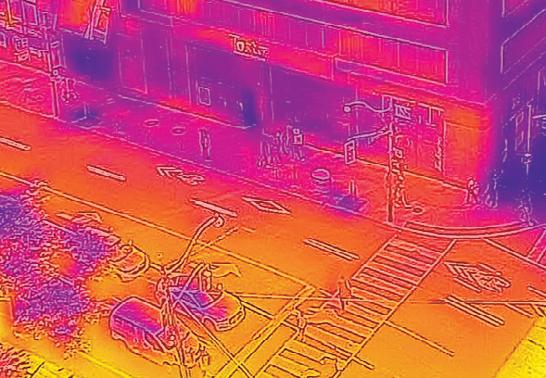
improving detection, specifically in outdoor, low-contrast scenes—a critical need for thermal inspectors and first responders, including law enforcement officers, firefighters, and search and rescue personnel.
The Teledyne FLIR team collaborated closely with Skydio to develop custom thermal optics, reducing the weight of a standard Boson+ camera by 48 percent. This weight reduction not only maximizes flight time but also decreases the thermal camera module's volume by 43 percent, resulting in a more efficient payload form factor.
The Skydio X10 features tailored thermal image signal processing using Teledyne FLIR’s Prism ISP, enhancing the thermal image quality. Furthermore, the captured thermal images are saved as radiometric JPEGs (R-JPEGs), where each captured image contains temperature data for every pixel in the scene, thus providing detailed, quantitative insights particularly valuable for industrial and commercial uses.
As we look into the future of military defense and safety applications, the integration of advanced processing power, efficient neural networks, and powerful thermal imaging capabilities is set to transform autonomous vision capabilities in the defense sector. Technology convergence will enable the embedding of sophisticated convolutional neural networks (CNNs) into a wider range of defense systems, enhancing the effectiveness of automated object detection and tracking within complex environments across ground, air, and water scenarios. The proliferation of edge intelligence in defense marks a paradigm shift towards smarter, more accurate, and ultimately, more effective systems. As the industry evolves, the focus will increasingly shift towards datadriven solutions, pushing perception systems to unprecedented levels of operational intelligence – capabilities that are crucial for national security and defense missions in the 21st century.
To explore Teledyne FLIR's cutting-edge thermal camera modules and AI support software, visit:



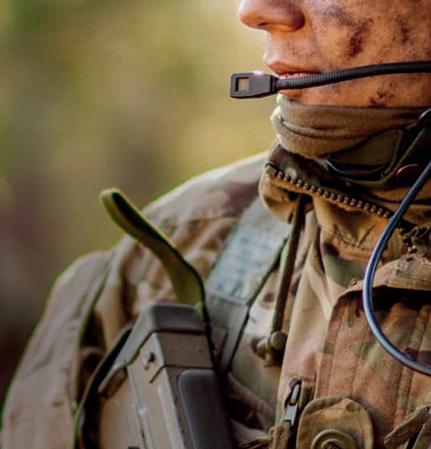


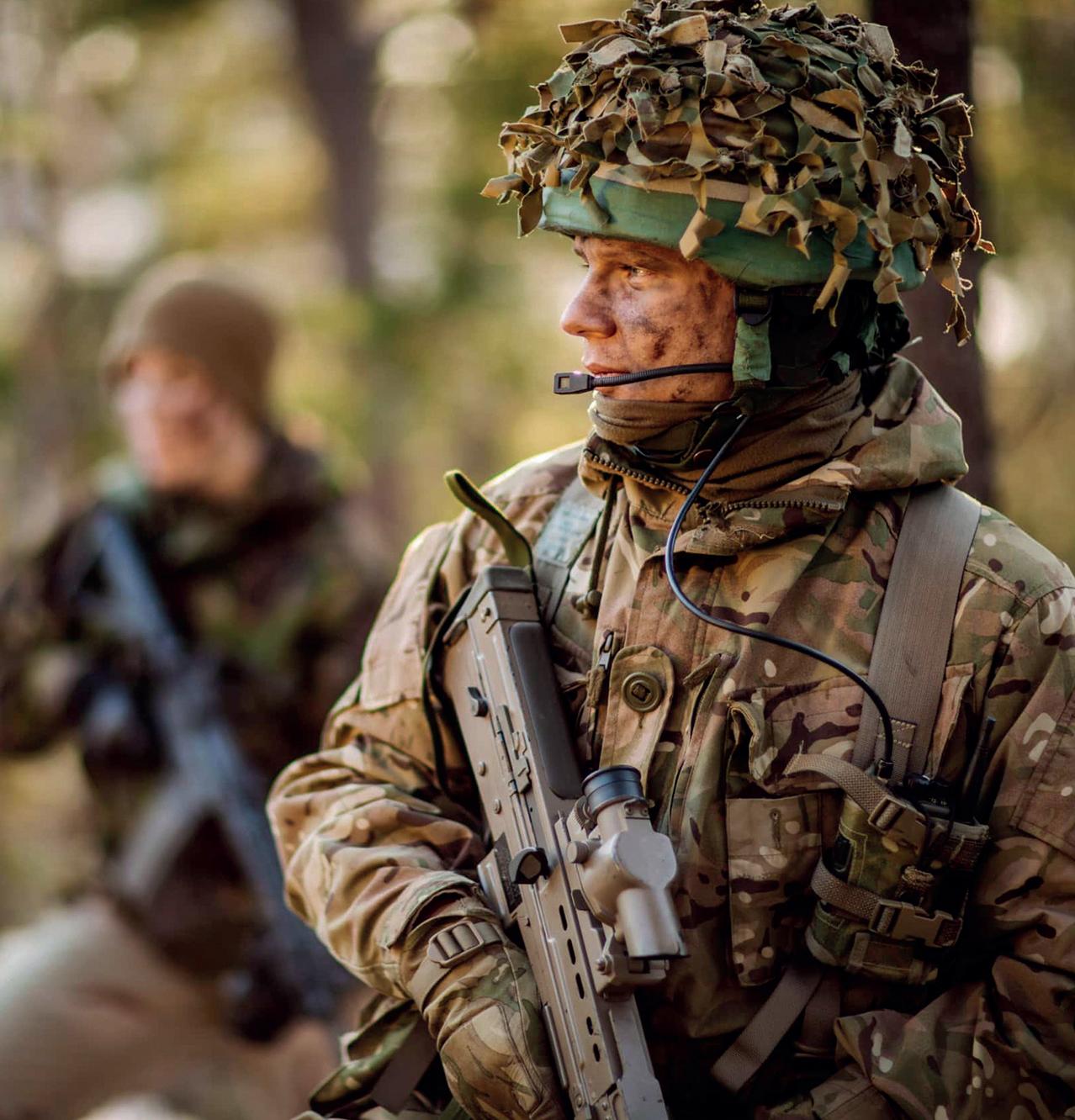

Lincad has a long history of specialising in military batteries and chargers offering ruggedised, reliable and practical power solutions across land, sea and air to ensure success on every single mission. We have expanded our industry-leading technology to a range of markets around the world, working closely with customers to ensure their precise requirements are satisfied.
www.lincad.co.uk
+44 (0)1252 894600
enquiries@lincad.co.uk



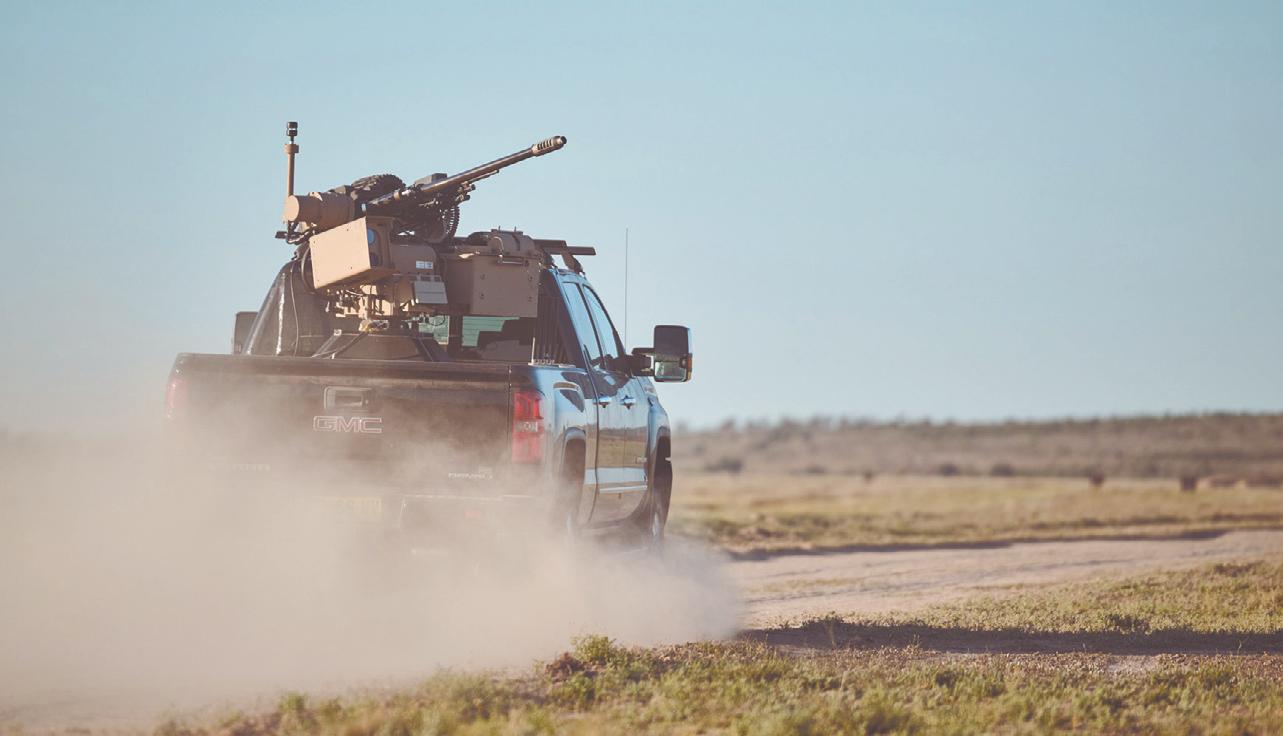
World-leading counter-drone technology.
Flexible, cost-effective VSHORAD up to 8+ km.
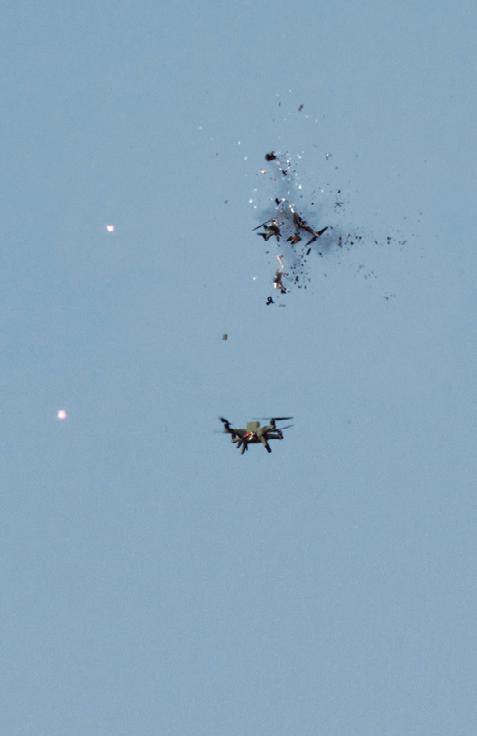
High probability kill for less number of rounds
Superior accuracy, achieves longer range engagements
Integrates seamlessly with centralised systems or functions as a standalone unit
Mounts on military and commercial vehicles, or a 昀xed site
Requires minimal training and is easy to use

Designed to meet the rigorous NATO AEP-38 standard, the EXOSKIN®-S1 offers defence against vapour, liquid and particulate Chemical Warfare Agents (CWA), Toxic Industrial Chemical (TIC) and biological threats.
The EXOSKIN®-S1 integrates seamlessly with Avon Protection’s range of EXOSKIN® CBRN protective wear and respiratory systems while maximising the safety, comfort and agility of operators in the field.

In the highly specialised world of defence coatings, where performance, durability, and compliance are paramount, Trimite Global Coatings has consistently proven its mettle.
Among its most celebrated achievements is the DEF STAN 80-225 compliant coating system, a benchmark for excellence that has set new standards in the industry. This system, underpinned by two-pack polyurethane (PU) paint systems such as D00383, D00401, and D00294, represents the pinnacle of military-grade coatings. At the forefront of this offering is the NATO Green colour, Trimite’s flagship in its defence portfolio—widely recognised for its exceptional performance and aesthetic appeal.
DEF STAN 80-225 is a rigorous standard set by the UK Ministry of Defence, encompassing requirements for performance, durability, and

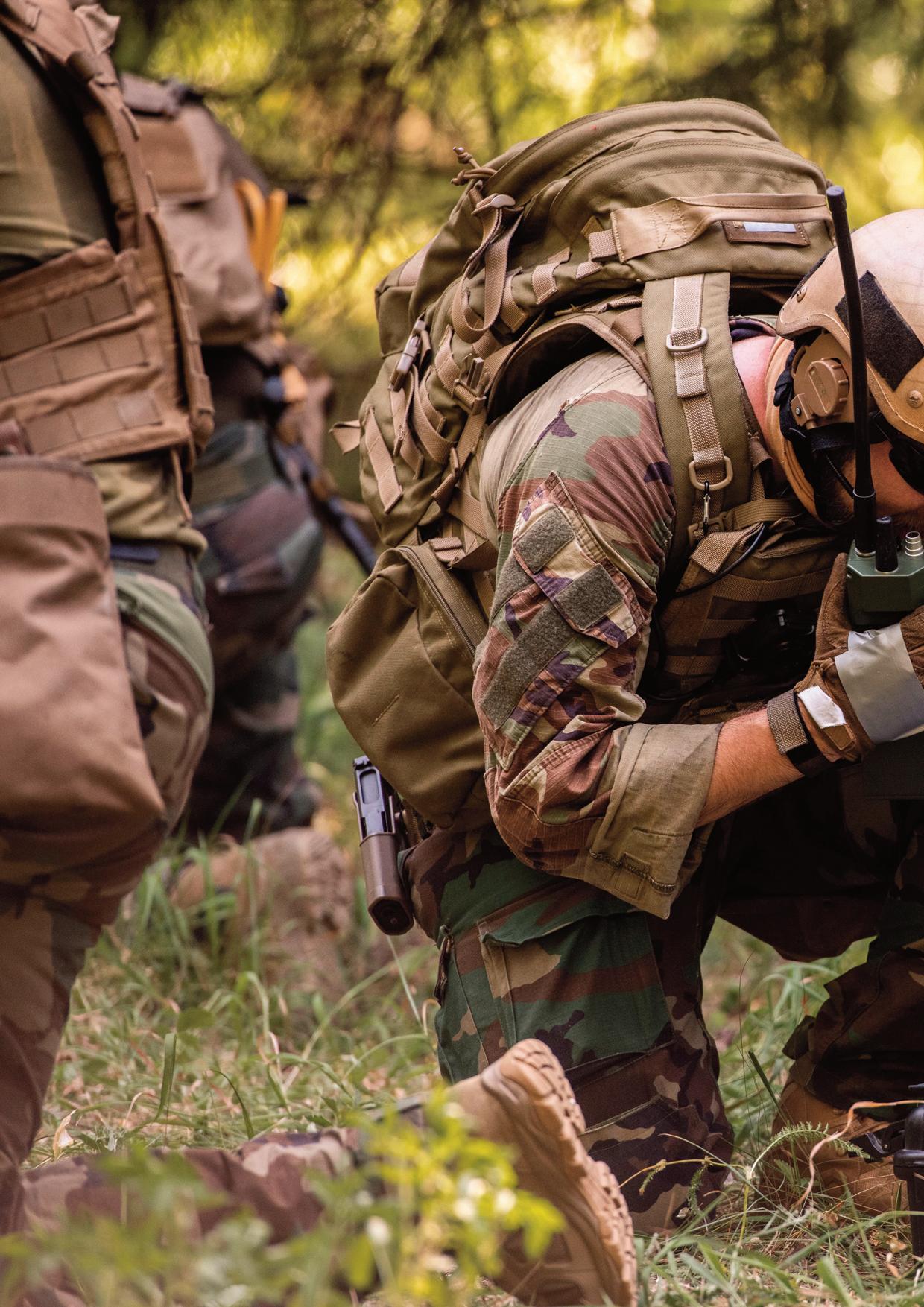
environmental resistance in military coatings. It’s a specification that ensures coatings can withstand the harshest conditions, from the deserts of the Middle East to the frozen expanses of the Arctic. Meeting this standard is no small feat. Trimite’s 80-225 coating system has not only met these stringent requirements but has done so with flying colours, literally and figuratively.
Comprehensive testing conducted by the Defence Science and Technology Laboratories (DSTL) at Porton Down backs this system's success. This approval is more than just a certification; it is a testament to Trimite’s dedication to innovation, quality, and the relentless pursuit of excellence in the defence sector.
At the heart of Trimite’s DEF STAN 80-225 compliant system are the two-pack PU paint systems: D00383, D00401, and D00294. These formulations have been engineered to deliver unparalleled performance in the most demanding environments. Each of these paint systems offers distinct advantages, yet all share a common thread of exceptional durability, flexibility, and resistance to chemicals, UV radiation, and extreme temperatures.
D00383 is a Type 1 Primer for ground equipment, Ferrous metal surfaces with outstanding adhesion and flexibility, making it ideal for applications where the coated surface may undergo mechanical stress. It provides a robust shield that maintains integrity even under the strain of bending or flexing, ensuring long-term protection of the underlying substrate.
D00294, a finish for ground equipment, is the epitome of versatility, offering a balanced combination of adhesion, chemical resistance, and UV stability. This system is particularly valued for its ability to perform consistently across various conditions, making it a go-to solution for many military applications.
Together, these paint systems form a comprehensive suite of solutions
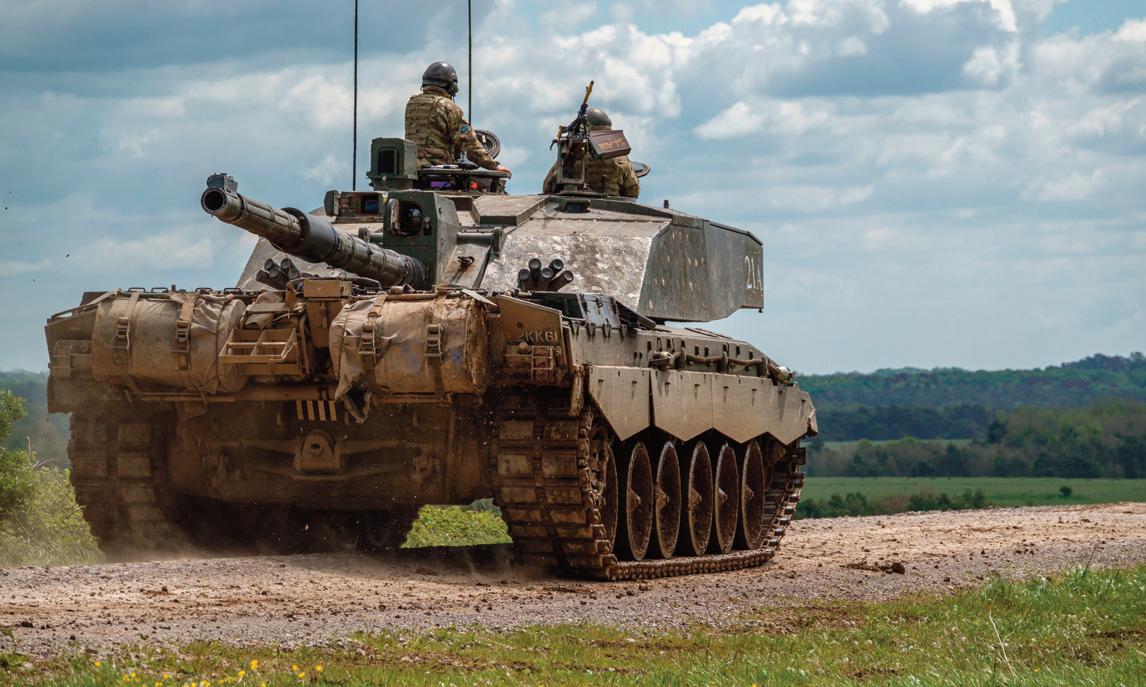
catering to military equipment's varied needs. Whether it’s protecting a vehicle in a harsh desert environment or ensuring a structure withstands the corrosive effects of saltwater exposure, Trimite’s twopack PU systems deliver consistent, reliable performance.
Among the wide array of colours offered by Trimite, NATO Green is the flagship colour in their defence coatings range. This particular shade is iconic in military applications and symbolises the essence of Trimite’s commitment to quality and performance. NATO Green is more than just a colour; it’s a statement. It reflects a legacy of trust and reliability that Trimite has built over decades of serving the defence industry.
The NATO Green colour has a rich history of use in military vehicles and equipment, particularly those that require effective camouflage in woodland and temperate environments. Trimite has been instrumental in maintaining the consistency and quality of this colour, ensuring that it meets the exacting standards of the military while offering enhanced durability and resistance to fading. The consistency of NATO Green across different batches and its long-term stability are testaments to Trimite’s advanced manufacturing processes and quality control.
Trimite Global Coatings has a storied history in the defence sector, with a reputation built on decades of innovation, reliability, and exceptional service. With over 80 years of experience, Trimite has become synonymous with high-performance coatings that not only meet but exceed industry standards. From the initial formulation to final application, Trimite supports Original Equipment Manufacturers (OEMs) every step of the way, ensuring compliance with DEF STAN 80-225 and delivering coatings that stand the test of time.
Trimites' commitment to quality is further evidenced by their active

membership in The British Coatings Federation (BCF) and Made In Britain, which underscores their dedication to upholding the highest standards of quality, innovation, and excellence in British manufacturing. Trimite’s global reach, coupled with its deep understanding of the defence industry’s unique requirements, positions it as a leader in the field, offering unparalleled technical support, training, and customer service.
Trimite’s DEF STAN 80-225 compliant coating system, anchored by the two-pack PU paint systems D00383, D00401, and D00294, represents the pinnacle of defence coatings. With NATO Green as its flagship colour, this system symbolises Trimite’s unwavering commitment to quality, innovation, and excellence. Trusted by the defence industry for decades, Trimite continues to lead the way, providing OEMs with the tools they need to create durable, highperformance military equipment that meets the most demanding standards. In a world with high stakes, Trimite stands as a beacon of reliability, delivering coatings that protect and endure, no matter the challenge.
For more information, visit:
https://twitter.com/Trimite https://www.linkedin.com/company/trimite-global-coatings https://www.instagram.com/trimitegc www.trimite.com/defence


The Slinger is an Australian-made counterdrone engagement system designed and developed to meet contemporary and emerging threats based on lessons learned in contemporary conflict regions, such as Ukraine.
The system incorporates a radar, 30mm cannon with specially designed ammunition, and EOS proprietary stabilisation and pointing technology for counter-drone operations. The system is capable of tracking and engaging moving drones beyond 800m, with unique ammunition making it suitable for use in built-up environments. Slinger can be operated independently or as part of a network.
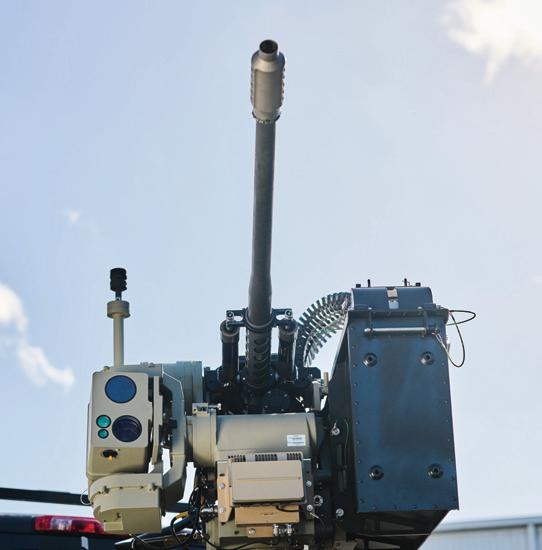
The Slinger counter-drone system draws inspiration from the historical Slinger soldier, renowned for their remarkable precision in launching small stones to defeat enemy soldiers from a distance. Just as the ancient Slinger provided accurate long-range firepower using a lightweight and affordable weapon, the Slinger system effectively counters the modern threat of drone attacks with a single, precise shot of lethal force.
Fully-stabilised for accurate, on-themove engagements that deliver superior performance at a competitive cost per kill
• High precision weapon platform weighing less than 400 kg
• Fully stabilised for on-the-move operation
• Exquisite pointing technology for extreme accuracy
• Four-axis sighting system with sensor unit that moves independently of the gun in both elevation and azimuth
• Bushmaster M230LF 30 x 113mm cannon
• Lightweight 30mm Proximity Sensing, high explosive, fragmentation round
• Echodyne ultra-low size, weight, and power (SWaP) 4D targeting radar with active beamsteering ESA
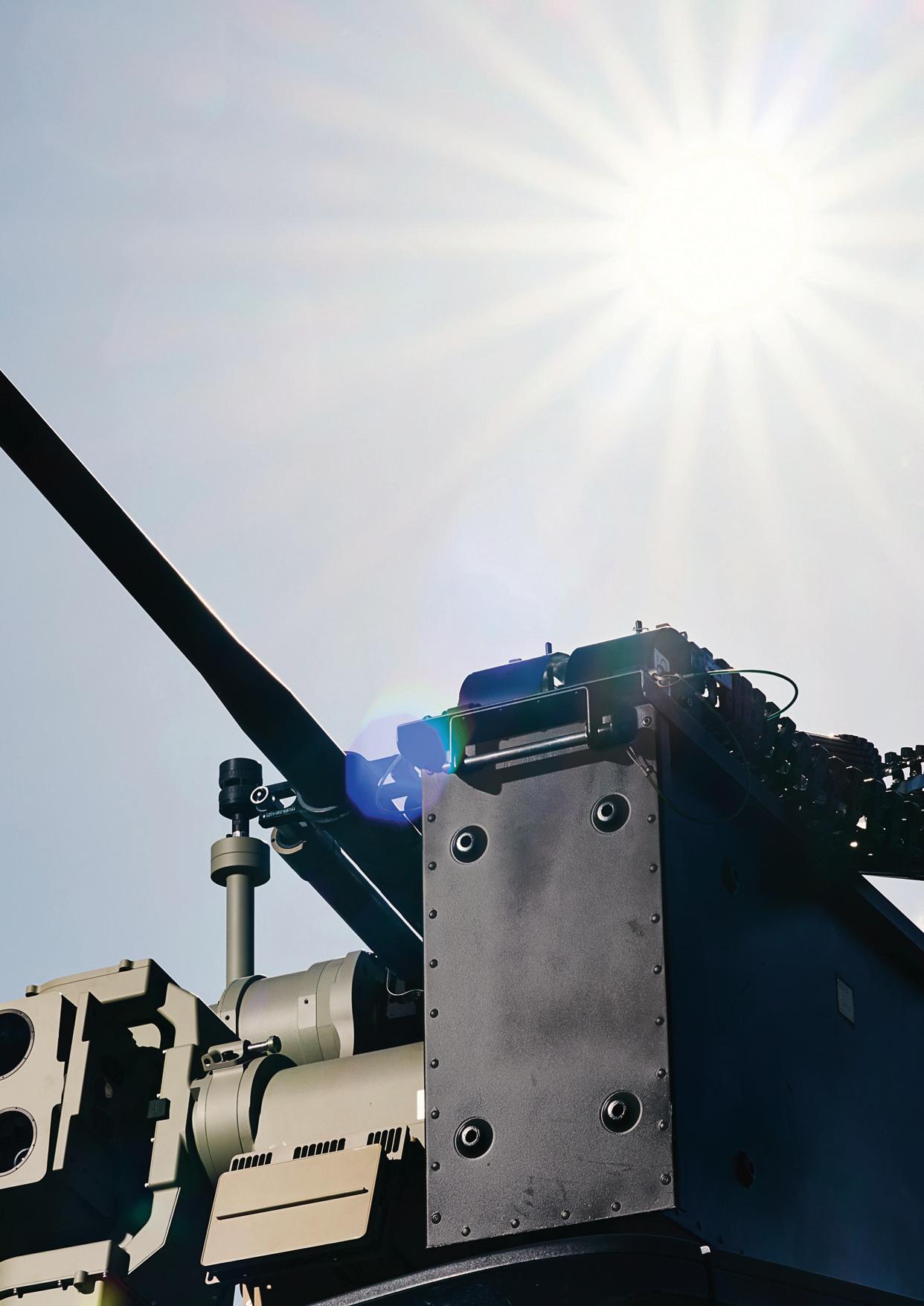
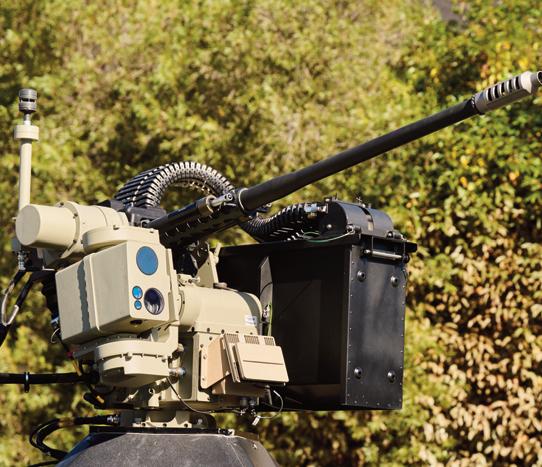

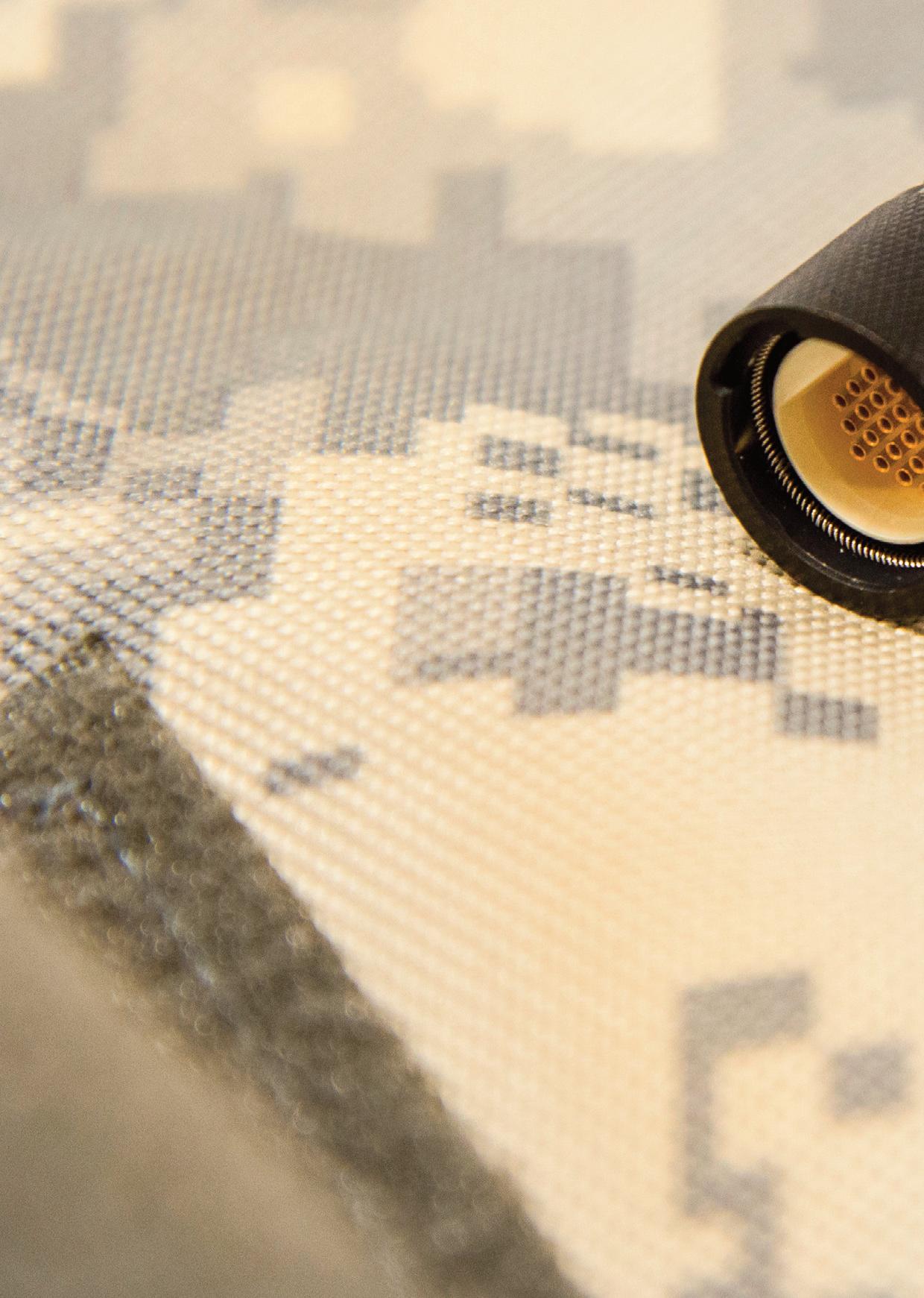
In the ever-evolving landscape of defense electronics, the drive towards miniaturization and enhanced performance has never been more critical.
The integration of sophisticated technologies in military operations demands connectors that are not only smaller and lighter but also rugged and reliable. This article explores the evolution of miniature quick release connectors, their impact on defense systems, and the technological advancements that have enabled their development.
The modern battlefield is increasingly dominated by centralized data management systems that connect various facets of military operations. From battlefield coordination via satellites to troop monitoring through soldier-worn electronics, the need for advanced embedded electronics that operate at higher signal speeds and offer more data processing, transmission, and storage capabilities has never been greater. Solidstate circuitry has evolved to meet these needs, with new materials and technologies playing a pivotal role.
One of the most significant advancements is the use of materials like Gallium Arsenide (GaAs) and Gallium Nitride (GaN) in microwave circuitry. These materials facilitate higher speed signal processing and are integral to the latest military technologies. Complementary MetalOxide-Semiconductor (CMOS) technology also offers improved circuitry for memory storage and digital processing, essential for military computers and remote-control systems.
The electrified defense industry today is rapidly expanding the use of centralized data management systems that penetrate all sectors of

military operations. Satellite-based battlefield coordination systems collect and process data, transmitting signals to and from central control centers in the field. These systems direct operations on the battlefield and actively monitor troop activities through sensors, detectors, and surveillance devices mounted on equipment and soldier-worn electronics.
To support these advanced technologies, embedded electronics must operate at higher signal speeds, offer more data processing, and provide enhanced transmission and storage capabilities. The solid-state circuitry industry has evolved extensively to support this new wave of technology, competing with new military devices from near-peer competitors. New chip materials, such as GaAs, are employed in much of the latest military technology for higher speed signal processing in microwave circuitry. Silicon chip technologies using CMOS offer improved baseline portable circuitry for memory storage and digital processing in military computers, observation devices, and remotecontrol circuitry for drones and autonomous weapons. These field-effect transistors and integrated circuits function rapidly on very low energy systems. Newer GaN circuits are improving surveillance and high-end ultraviolet signal management (EUV).
Laser pulsed plasma circuits generate high-power laser beams for very short wavelength light, significantly increasing the resolution of scanned images from satellites with LIDAR scanning equipment on board. New defense-based solid-state circuits operate on lower currents and voltages, extending battery life in the field. Portable radar systems can be carried in backpacks, and multimode surveillance devices can be mounted on helmets, allowing soldiers to be individually monitored and report their position via GPS systems. These new defense instruments operate at high signal speeds while being increasingly more portable, necessitating smaller, rugged, and lightweight electronics.
As technical and data collection capabilities expand, the need for transporting additional data storage and transmission modules grows. Quick and easy yet rugged and reliable electronic cable and connector exchanges are critical within the battlefield environment. Micro-wave and coaxial cabling are also becoming smaller and more miniaturized, with trends indicating more applications for higher speed switching and multiple frequencies in both transmit and receive modes. The shorter wavelengths of RF frequencies will ensure the miniaturization of more portable antennas, and more densely packed modules will result from this miniaturization process, adding to potential EMI and ESD sensitivity.

Electromagnetic interference (EMI) issues necessitate improved shielding and RF leakage protection within instrumentation, as well as cable shielding and metal connector back-shells for portable equipment. Interconnects must ensure low noise and crosstalk (NEXT) specifications are met. As signal speeds and multi-signal level transmissions, such as pulse amplitude modulation (PAM) methods, increase, noise and crosstalk will emerge as key specifications for cables and connectors.
As PAM techniques are adapted to voltage level modulation methods, coaxial cables will carry multiple signals on one line. More portable and rugged Nano and Micro Coax are emerging through a process of adaptation on PCB modules and evolving out to EOU (end of unit) to reduce size and weight. Specially designed Nano-coax and connectors are adapted for board-to-cable routing in instruments requiring high mobility.
As signal speeds increase and voltages decrease, signal integrity design and management become critical to the functions needed in mobile military and aerospace systems. Connector-to-cable design requires a perfect match to the electrical application of the circuit. Digital signal quality is more often assured by using differential cable design that matches the impedance of the output and/or input system of the processor boards and detectors. Proper shield and drain wire interconnections increase system accuracy and help ensure appropriate eye pattern quality. Eye patterns are used to evaluate the combined effects of channel noise and interference in pulsed-transmission systems inside the cable. Shielding also improves the transmitted signal through the connector and cable assembly, reducing jitter and crosstalk. Reduced size, lower weight, and ruggedness immediately follow in the list of important specifications to serve the needs of portable ground troop electronics, airborne equipment such as UAVs, and military satellite systems. Military connector designers must seriously plan and implement the use of military pin-to-socket elements that exceed the minimum requirements of wear during insertion and retraction force.
On the battlefield, the ability to quickly replace modules within systems is essential. Connectors designed for rapid and reliable exchange play a crucial role in maintaining operational efficiency. Connectors must be designed to offer quick and easy replacement of modules from within the systems while on missions in the field. Military quality specialists such as Omnetics and other suppliers offer a variety of down-sized designs from circular and rectangular designs to strip and PZN formatted connectors.
Circular Micro and Nano-Connectors serve USB 3.0 speeds and higher in many signal formats, from digital circuitry to sensor and detector information. Circular connectors by design are a natural shape for handling smaller and more flexible round cabling used for higher speed in tight environments, including power systems. A portion of the industry still uses rectangular connectors for cable-to-board interface systems and panel-to-device equipment.
Circular-shaped Micro and Nano Breakaway connectors provide a “Quick Release” function and have proven reliability and service. They are often designed with all-metal back shells and match braided shielded cable. Variations occur in both cable designs and pin arrangements, designed to application-specific needs.
A notable example is the high-speed USB circular connector that carries both power and digital signals on a mixed signal cable with differential
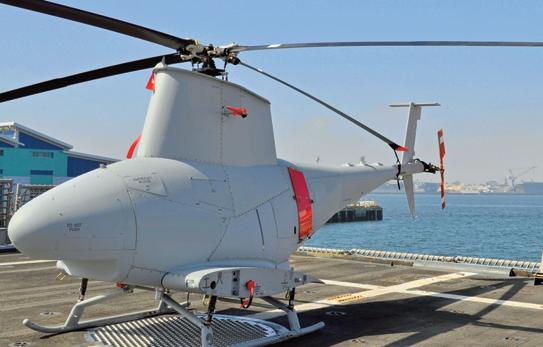
signal wiring. By including mixed signals such as power and signals inside the same cable, the total size and weight, as well as cost of two parallel cables and connectors, are reduced. This “quick release” system has proven to offer easy plug-and-remove functions while retaining signal integrity for high shock and vibrations, such as those experienced in helicopter and UAV functions.
Defense electronics are often exposed to extreme environmental conditions, including wide temperature ranges, constant vibration, and high shock. Connectors must be designed to withstand these conditions while maintaining reliability over long periods of non-use. Key specifications include the materials used, the design for rugged sustainability, and the ability to handle high electrical currents and remote signal control integrity amid high electrical noise or cyberinterruptive environments.
Metal Micro-D rectangular connectors continue to fit well and reliably in many applications. Micro-Ds with reference to MIL-DTL-83513, offering wire-to-wire spacing at .050”, handle wiring sizes up to 26 AWG and carry up to 3 amperes per line. The flex-pin mating elements are made in a one-piece design stamped from Beryllium Copper per ASTM B488 and ASTM B194 BeCu, respectively. The spring characteristics of BeCu are ideal for withstanding high shock and vibration situations and are plated with 50 micro inches (1.27 μm) of gold over 50 micro inches (1.27 μm) of nickel. All pins are plated post-forming to ensure a nonporous surface.
Quick Connection Latching Micro-D connectors have extended the old standard designs with rapid field change-over and installation formats. The squeeze-latches are made of stainless steel springs and handles. The new latching connectors have been proven to work from -55°C to +125°C while maintaining signal integrity in shock up to 50gs and vibration to over 20gs, as specified in long-standing military specs.
Metal back shells and braided shielding help protect the system from EMI and potential cyber intrusion.
Board mount latching Micro-Ds are designed for military specification PCB layouts in both through-hole and SMT configurations. Shells can include shear control brackets when specified.
Metal Nano-D rectangular connectors are being employed at a rapid pace as they have achieved performance per MIL-DTL-32139, ensuring rugged reliability while being significantly smaller for HDMI-type signaling. Omnetics Nano-D connectors accept up to 30 AWG wiring that can handle up to 1 ampere per line. Mixed signaling is accomplished by allocating sections of the connector for high speed and other areas to carry power.

The evolution of connector design has led to the development of latching Micro-D and Nano-D connectors, which offer quick and easy mating and de-mating. These connectors are designed to meet military specifications, withstanding temperatures from -55°C to +125°C while maintaining signal integrity under high shock and vibration. Latching Nano-D connectors have become popular in defense satellite systems, hand-launched drones, and soldier-borne autonomous weapons due to their low weight and mass, which helps when facing the physics of mass effects in shock and vibration during use.
Latching Nano-D mechanisms are also made of stainless steel and are frequently used for reduced space and quick replacement of memory and control circuitry in autonomous defense systems. Their lower weight compared to larger connectors and cables is advantageous for UAV re-use, as drone landings often experience higher shock than during flight.
To ensure connectors meet stringent military standards, independent testing labs evaluate their performance under extreme conditions. Key tests include mechanical shock, low-level circuit resistance (LLCR), and sinusoidal vibrations. These tests confirm the connectors' ability to maintain signal integrity and mechanical stability, even in the harshest environments.
Mechanical shock tests evaluate the latching mechanism holding the plug to the receptacle in its mated position. The receptacle is clamped into position, and the plug is not restrained, with testing conducted according to MIL-DTL-83513 or MIL-DTL-32139 specifications. LLCR tests are run at 100 milliamps and 20 millivolts, ensuring resistance remains well within circuit specifications. Sinusoidal vibration tests are conducted at 10 to 2000 Hz to 20 Gs for 4 hours over three axes.
Selecting the appropriate connector involves reviewing the system's design requirements and considering factors such as size and shape, cable type, mate/de-mate method, and environmental conditions. Online solid modeling and 3D samples facilitate the customization of connectors to meet specific needs, ensuring a perfect fit and reliable performance.
System designers should start by analyzing the size and shape requirements to ensure the connector fits and allows for easy mating and de-mating. The diameter of the cable entering the back of the connector and the type of circuit—whether analog or digital—must be
considered to match the signal impedance and power requirements. Power considerations include sharing power with two or more pins, while shielding and EMI protection are crucial to minimize noise or crosstalk within the circuits. The ruggedness and reliability of the connector in various environments, the need for mixed signal technologies, and concerns about cyber intrusion must also be addressed.
Quick and easy mating and de-mating for device replacement are vital in ensuring operational efficiency. Designers should also consider the available space for latching mechanisms within their designs. Choosing the right connector begins with analyzing these requirements and selecting a standard device from a proven supplier. If customization is needed, working with a connector supplier to develop applicationspecific adjustments using online solid modeling and 3D samples can expedite the process.
As defense technology continues to advance, the role of miniature quick release connectors will become even more critical. Future trends may include further miniaturization, increased integration of mixed signal technologies, and enhanced EMI and ESD protection. Innovations in materials and manufacturing processes will likely lead to connectors that are even more robust and reliable, capable of operating in the most challenging environments.
The ongoing development of autonomous systems, UAVs, and soldierworn electronics will drive the demand for connectors that offer higher performance, greater durability, and more efficient data transmission. As these systems become more sophisticated, the need for connectors that can handle higher data rates, increased power loads, and more complex signal processing will grow.
In conclusion, the evolution of miniature quick release connectors has significantly enhanced the capabilities of defense electronics. These connectors are crucial for ensuring the reliability and performance of sophisticated military systems, enabling rapid data transmission, improved signal integrity, and robust performance in extreme conditions. As technology continues to advance, the role of these connectors will become even more critical, supporting the next generation of military operations.
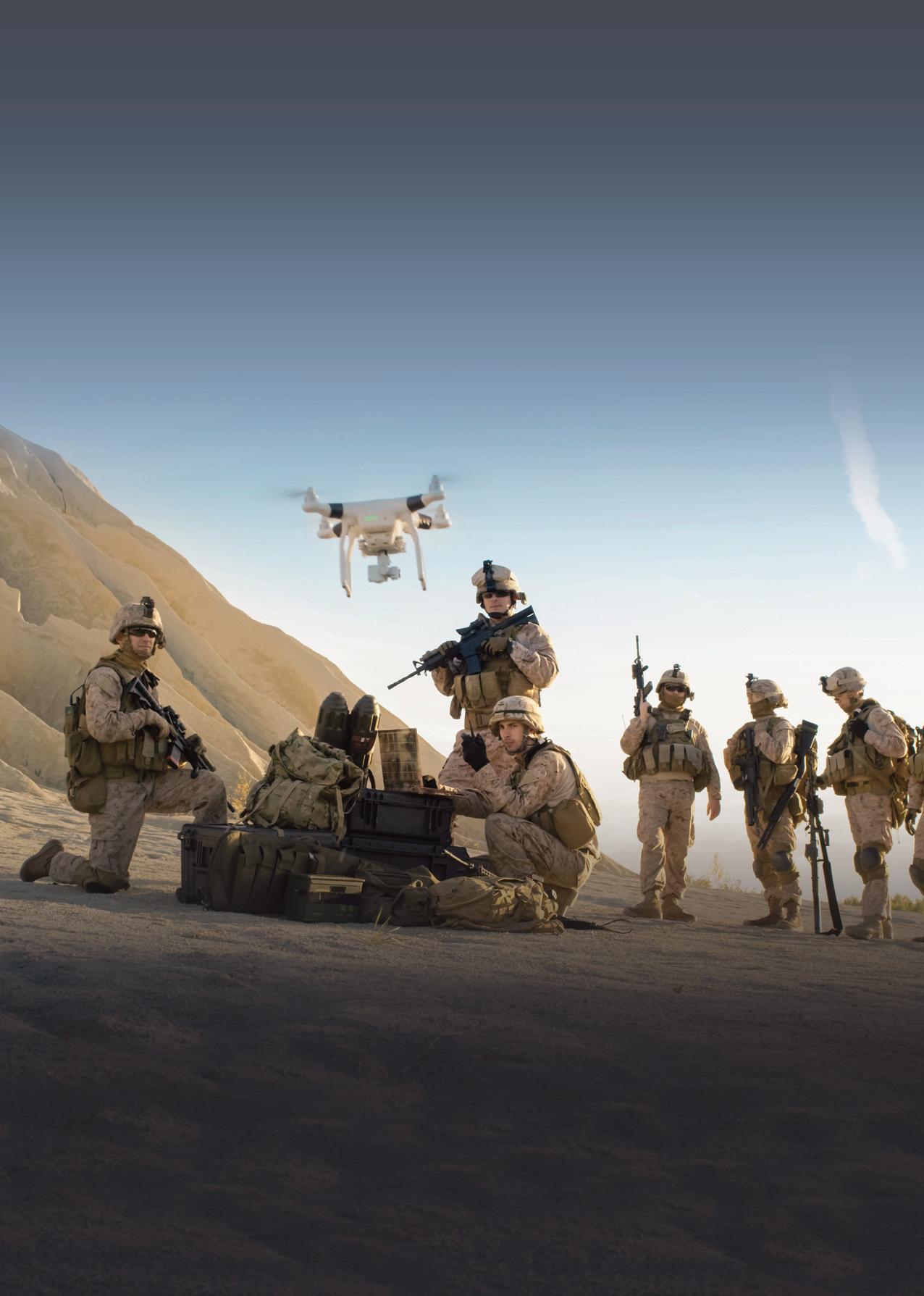

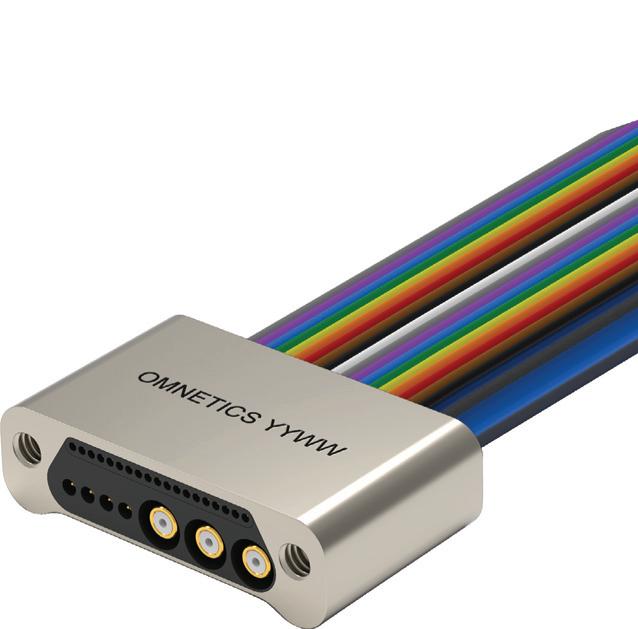
How a simple change to 21C Technology can improve; equipment range, operational endurance, combat effectiveness, long term human health etc etc.
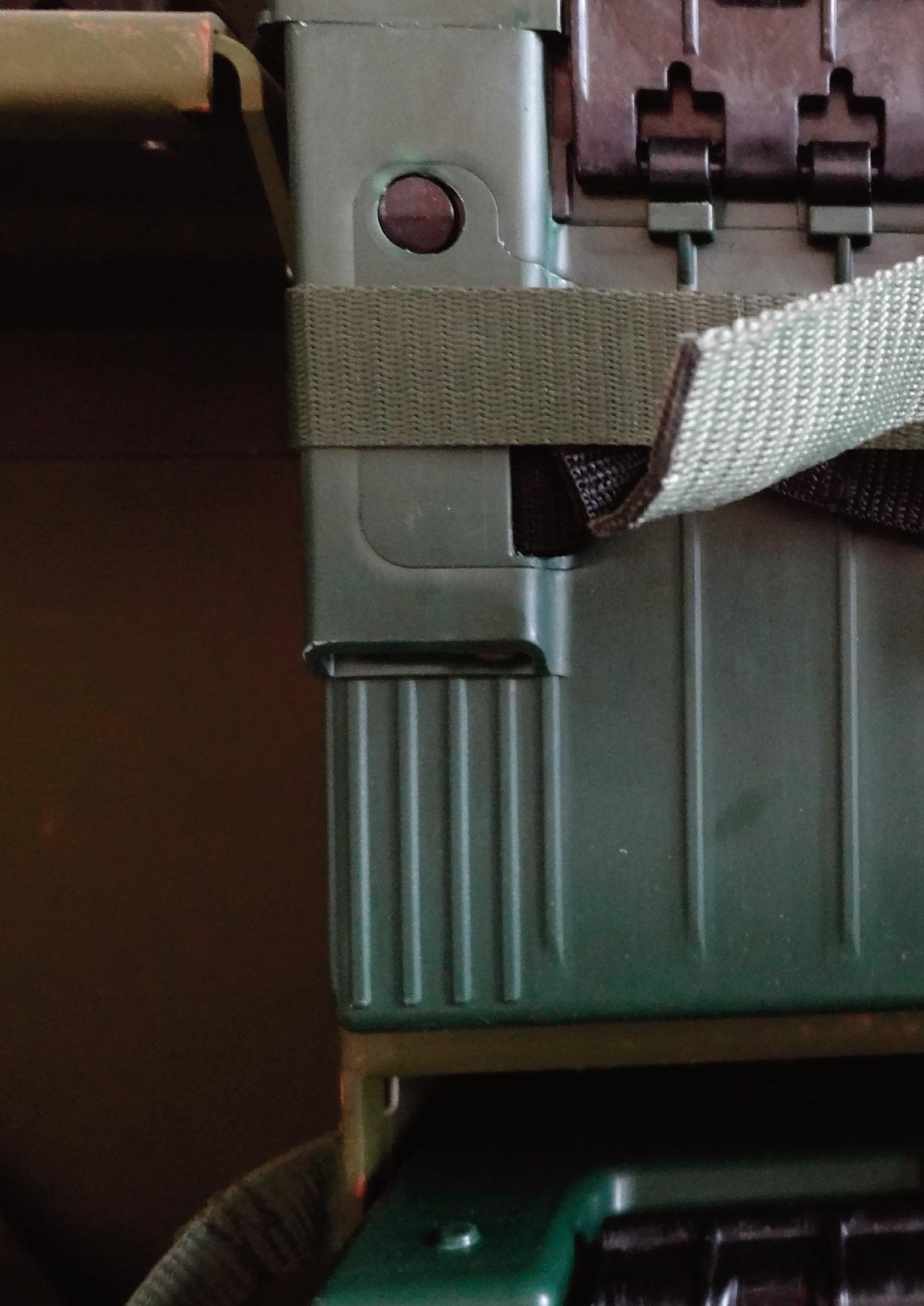
Being at DVD surrounded by military vehicles we often forget that one of their key defining purposes is the load they carry.
Few people alive now remember when the M2AI (H83 in UK) ammunition case came into service, 1941 if you are asking, but not common until 1943/4. The PA 120 was not far behind. The former is used to carry small arms ammunition along with many other items, (peoples’ home and car tool kits are a favourite, fishing tackle are another) the latter is for 30mm and other medium calibre ammunition and grenades for automatic launchers. They are ubiquitous and their physical characteristics are incorporated into the design of many defence platforms from AFV’s to helicopters and ships. Their size defines ammunition storage locations in infrastructure and platforms, weapon
characteristics and transport methods. Being steel their weight also adversely impacts weapon platform performance, platform range and transport costs to name but a few issues.
Early in the 21st Century a Danish company PlastPack DefenceApS, developed new technology to replace technology developed in the middle of the last. It is now 83 years later. Time to retire old soldier. When added up the benefits of new technology are huge. It is worth looking at individual aspects of the Lightweight Ammunition Case (LWAC) to catch a flavour of the advantages.
The first thing everybody questions is survivability, ruggedness, resilience, call it what you will. In all of the mandated tests plastic M1A2 and PA120 have performed as well as or better than the oldfashioned, genuinely antique, steel ones. They behave differently but they are no more dangerous. For example being plastic they melt at extreme temperatures but that is better than heat induced explosive destruction which steel cases undergo showering people and systems with more shrapnel and fragments than are already present from battle damage and which cause even more collateral

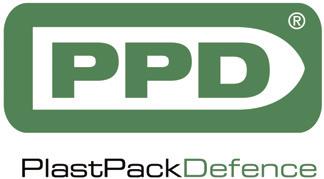
damage to systems. In addition, in many circumstances when heat induced explosions occur the lid of the M2A1 flies off and whirls through the air like a frisbee. Woe betides anyone it hits.
Whatever the test, climatic, temperature, shock, impact, vibration, pressure resistance and variation: plastic behaves as well as if not better than steel. Perhaps the most crucial test is that the soldiers and other users who have used LWAC immediately see its advantages.
The next crucial issue is mass. The new plastic M2A1 is dramatically lighter than the old steel predecessor, 68% to be precise or 780g v’s 2600g or 1820g of useless weight for every case on a pallet, in a vehicle or helicopter or other weapon platform or being carried by a soldier. The impact of that on logistics and operational capability is dramatic. It’s a weight saving of 1.82kg for roughly 1000 small arms rounds. Do the sums, arithmetic, maths or simply use a calculator and the result is the same. It is game changing.
The savings mean that there are enormous savings in fuel and logistic vehicles because a pallet carries 10% more ammunition that means the trucks carry more ammunition and less trucks are required. (The follow ons from this may be less trucks and less troops and infrastructure to operate them or more infantry for the same all up number of soldiers) Less trucks in resupply convoys mean less vulnerability and easier concealment.
The weight saving can be translated into longer ranges and endurances for platforms, a Piranha5 will travel 450km further with the extra fuel that can be carried or go the same distance carrying 10 more cases of .50 linked ammunition. Applied to helicopters the increase is typically 35-40 minutes flying time for a combat loaded helicopter according to USMC calculations.
In hard cash terms the Royal Danish Airforce, using 2010 figures showed they would have saved 140t of airfreight hauling small arms ammunition to Afghanistan or €1,140,000.00 in fuel casts alone. For the first time C130s “bulked out” when carrying ammunition rather than “weighted out”. Crew, logistic and operating cost would have increased that €1,140,000.00 dramatically. Through inflation according to accepted banking figures that €1,140,000.00 is € 1,568,713.54 in 2024 terms.
There is a human saving too. In 5 years (2001-2007) 3000 US troops and contractors lost their lives or were wounded running fuel and ammunition convoys in Iraq and Afghanistan. US Army Environmental Policy Institute figures show reduced weight resulting in less vehicles being used would have saved 35 lives over that period.
Further intangible unquantified human benefit are noise reduction and long term injuries. Few operational combat arm soldiers have not noticed the noise associated with steel striking steel during operational resupply activities which are usually carried out at night. No sparks generated as steel strikes steel therefore fire risk reduced. Replace steel with plastic and at a stroke operational security is increased. In addition, save nearly 2kg per case and there will be fewer bad backs and long-term injuries with fewer disabled soldiers and disability claims. In a time of shrinking armies and defence budgets this may well be a real benefit to defence.

Same size same capacity 10% lighter and does not explode gives greater range or more ammunition in your vehicle
There are other operational logistic benefits. RFID tags can be incorporated into the LWAC structure so its life and its contents can be accurately documented and accounted for. More time and people saved increasing productivity. By utilizing the ability to colour the plastic it is easier to stack and store by classification so that ammunition identification and therefore out loading from stores is easier. Increasing productivity yet again.
The benefits of a change in technology are considerable. Not considered here are changes to the manufacturing and maintenance model which go a long way to making the change capital cost neutral. From there the operational and through life saving make the financial benefits huge. The options it gives to restructuring defence are considerable, less tail more teeth in the deployed forces. Quicker strategic and operational deployments at less cost because a lot less weight has to be hauled around. Greater tactical flexibility because you can do more with your platforms. Genuinely more for less. In this day and age shrinking budgets, demographics and defence appetites make such a simple change in the interests of the whole of defence.
10% Less weight same amount of ammunition 30 minutes more mission time
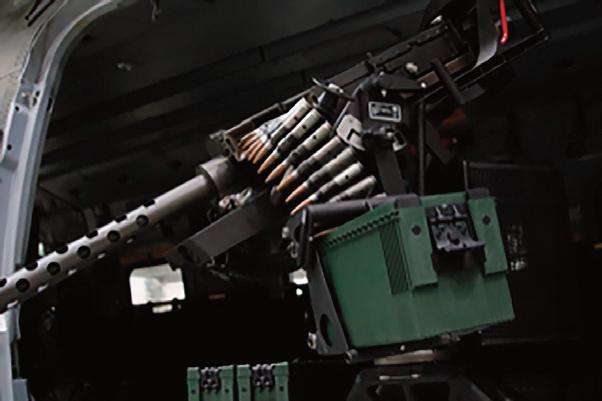

In the realm of defense, precision and stability are paramount for effective surveillance and targeting.
Pan & Tilt Units (PTUs) have become essential components, offering unparalleled precision and stability for an array of critical equipment, such as cameras, lasers, and antennas. Nedinsco’s latest ruggedized Pan & Tilt Platforms, featuring state-of-theart gyro-stabilization, set the standard for stability and performance on today’s defense market.
Integrating PTUs with advanced sensors allows military systems to achieve superior situational awareness and targeting accuracy. The ability to swiftly and accurately position sensors enables real-time monitoring and precise target engagement, which is crucial for mission success.
Integrating Pan & Tilt units with advanced sensors significantly enhances military systems by providing superior situational awareness and precise targeting. When mounted on armored vehicles, Nedinsco's Pan & Tilt Units (PTUs) serve as the commander’s sight and the gunners’ sight, delivering exceptional visibility. These PTUs enable real-time surveillance and pinpoint targeting, both essential for mission success.
At Nedinsco, we proudly design and manufacture a range of highly reliable, military-stabilized platforms, all crafted entirely in-house. Built from ruggedized materials, these platforms are available in classic L- or U-shaped configurations to suit various needs. Our Pan & Tilt Units are engineered to accommodate a wide range of payloads, from lightweight sensors to heavier, more complex equipment. With robust construction and advanced gyro-stabilization, these units provide the support and stability required for peak performance, even in the most demanding conditions,

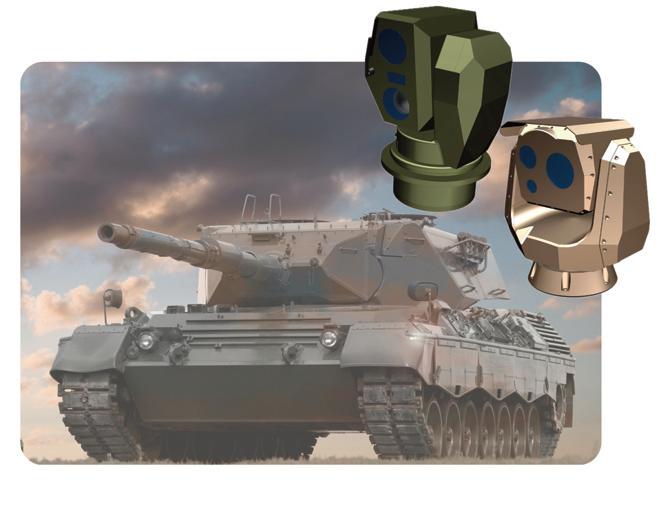

One of the standout features of Pan &Tilt Units is programmability. Users can customize settings for speed, acceleration, and power to adapt to various mission requirements. This flexibility ensures that PTUs can be fine-tuned for specific operational needs, enhancing versatility and performance in diverse defense scenarios.
Nedinsco’s Pan & Tilt Platforms boast a high power-toweight ratio and a compact design, making the units ideal for both stationary and mobile applications. Their versatility allows them to be deployed in various defense scenarios without compromising on performance or stability.

The ruggedized design and gyro-stabilization of PTUs ensure they can withstand harsh environments and rigorous use. These units maintain high performance and stability even during dynamic and high-movement scenarios. Such durability and reliability are vital for defense applications, where equipment must endure extreme conditions and continue to function flawlessly.
The integration of advanced gyroscopes with cuttingedge algorithms preserves the Detection, Recognition, and Identification (DRI) capabilities of the optronics payload. This sophisticated combination ensures unparalleled accuracy and reliability in defense operations, facilitating precise surveillance and ffective target engagement.
Nedinsco’s commitment to innovation is reflected in the continuous evolution of their Pan & Tilt Platforms. Leveraging years of application experience, Nedinsco incorporates the latest technologies to meet the everchanging demands of defense operations. Customer needs and budget constraints are always taken into consideration, ensuring optimal solutions tailored to specific requirements. The motor drives and motion control boards, in combination with optronics, can be customized to fulfill unique operational needs. Equipped with advanced control interfaces such as RS232, Ethernet, NGVA, and RS-485, PTUs facilitate seamless integration with other military systems. This interoperability allows for coordinated operations, enhancing the efficiency and effectiveness of defense networks. By enabling smooth communication between various components, PTUs contribute to more cohesive and responsive defense systems.
Nedinsco’s Pan & Tilt Platforms have been in daily use for many years, safeguarding borders and being installed on various vehicles worldwide. These platforms are also extensively utilized on naval vessels, providing accurate information and clear views in all weather conditions, demonstrating their reliability and effectiveness in diverse environments.
As defense technology continues to advance, Nedinsco remains at the forefront, delivering solutions that meet the highest standards of precision and reliability.

WHEN CHOOSING A MAST SYSTEM FOR TACTICAL APPLICATIONS, THE SELECTION OF MATERIALS IS CRUCIAL, IMPACTING THE OVERALL PERFORMANCE, DURABILITY AND USABILITY OF THE SYSTEM.
If you are comparing composite masts with traditional aluminum masts, you might wonder which is the better choice for your specific needs. In this comprehensive analysis, we will explore how these materials measure up in critical aspects and how they influence the effectiveness of telescopic mast systems, especially in challenging environments.
In this article, we examine how aluminum and composite materials differ and how they perform in tactical antenna mast systems. We aim to provide clarification on how these materials can impact the efficiency and reliability of your communication system, helping you make an informed decision for your next mast system acquisition.
A composite is a material that combines the different physical and chemical properties of two or more substances, resulting in a new material with enhanced characteristics. In tactical telescopic masts, fiberglass or carbon fiber composites are commonly used because they offer an excellent strength-to-weight ratio, lightness, and durability in extreme weather conditions. Composite masts are at their best in field conditions, where their lightness facilitate transport and setup, and their durability ensures reliable operation even in harsh environments. One of the most common composite combinations is fiberglass or carbon fiber combined with a resin matrix. For example:
Fiberglass/Carbon Fiber Composite is a lightweight and highly durable material that combines the properties of fiberglass and carbon fiber. This composite material consists of two main components:
1. Fiberglass, which is affordable and offers good chemical resistance.

2. Carbon Fiber, known for its excellent strength-to-weight ratio and stiffness.
Fiberglass/carbon fiber composite is usually manufactured in layers, with fiberglass and carbon fiber mats alternated with resin, often through a process called pultrusion. The resin matrix binds the fibers together, creating a monolithic structure that is both lightweight and strong.
1. Superior Strength-to-Weight Ratio: Composite materials such as carbon fiber offer an unparalleled strength-to-weight ratio, surpassing that of aluminum. This high performance makes them ideal for applications where both strength and lightness are critical.
2. Corrosion and Chemical Resistance: Unlike metals, composites do not rust or corrode. They are resistant to chemical exposure and UV-radiation, making them suitable for use in harsh environments such as deserts, Arctic regions, or marine settings.
3. Durability in Extreme Conditions: Composite withstands extreme temperatures, impact, and environmental stress, ensuring reliable operation in demanding field conditions.
4. Customizability: The mechanical properties of composites can be tailored by adjusting the fiber orientation and layering sequence. This customization allows for the precise design of mast systems that meet specific operational needs, whether it is for strength, flexibility, or thermal resistance.
5. Electrically Insulating glass fiber: Composites are nonconductive, providing an added layer of safety in certain applications, such as when masts are used near power lines or other electrical equipment.
6. Extended Lifespan: The inherent durability and resistance to environmental degradation mean that composite typically has a longer lifespan and require less maintenance, reducing overall operational costs.

1. Higher Initial Costs: The advanced manufacturing processes and materials used in composites can make them more expensive than aluminum options. However, this initial investment is often offset by the reduced maintenance and longer lifespan.
2. Complex Manufacturing: Producing composite materials involves sophisticated technology and expertise, which can lead to longer production times and higher costs compared to aluminum.
Aluminum is a lightweight metal and element which is durable and corrosion resistant. It is widely used in construction, transportation, packaging, and in many other applications as a result of its lightness and durability. In tactical telescopic masts, aluminum is utilized for its lightness and strength, which facilitates the transportation and setup of masts in field conditions. Aluminum masts offer a good balance of durability and easy handling, making them a solid choice for communication mast systems.
Aluminum production begins with the mining of bauxite. Bauxite is refined into aluminum oxide, which is then processed with electricity to obtain pure aluminum. Then aluminum is melted and cast into various shapes, such as sheets and tubes. Finally, aluminum is shaped and surface treated.
1. Lightweight and Strong: Aluminum is renowned for its excellent strength-to-weight ratio, making it a popular choice for telescopic masts. Its lightweight nature ensures easier transport and setup.
2. Corrosion Resistance: An oxide layer forms naturally on aluminum surfaces, providing a degree of corrosion resistance, especially in humid or marine environments.
3. Workability: Aluminum is easy to machine and form, allowing manufacturers to create complex shapes and designs efficiently.
4. Recyclability: Aluminum is fully recyclable, making it an environmentally friendly option. The ability to recycle aluminum without losing quality adds to its sustainability.
1. Lower Stiffness: Aluminum masts may lack the stiffness required for high-stress applications, leading to potential performance degradation over time, especially under repeated loading.
2. Performance in Extreme Conditions: While aluminum performs well in many conditions, it is susceptible to weakening under extreme temperatures or heavy loads. This limitation can affect the reliability of mast systems in harsh environments.
3. Higher Maintenance Needs: Although aluminum resists corrosion, it may still require periodic maintenance, especially in saltwater environments, to ensure longevity.
Tactical antenna masts require materials with specific properties, such as lightness, strength, corrosion resistance, and the ability to withstand demanding environmental conditions. Aluminum has traditionally been a popular material for antenna masts due to its good strength-toweight ratio and corrosion resistance. It is also readily available and relatively affordable, making it a cost-effective option in the short term. On the other hand, composites, especially carbon fibe-composites, can offer even better performance in tactical telescopic masts. Their extremely high strength-to-weight ratio allows for lighter yet stronger structures, which facilitates the transportation and rapid deployment of masts in field conditions. The corrosion resistance and chemical resistance of composites make them an excellent material choice for harsh environments, where aluminum might require additional protection or maintenance.
The final choice between aluminum and composites often depends on cost, application, and the required performance. Aluminum may be the best choice when cost-effectiveness and easy handling are the top priorities, while composites offer superior performance and durability in highly demanding applications. In tactical antenna masts, where

weight minimization and reliability are critical, composites are often the better option. Whether for military use, emergency response, or other tactical applications, the advanced features of composite masts offer clear advantages over traditional materials.
In tactical communication mast systems, reliability, durability and ease of use are paramount. These requirements make composite materials, such as, fiberglass and carbon fiber the most popular choice for modern telescopic mast systems. Composite mast systems offer many advantages that enhance their functionality and extend their lifespan while keeping maintenance costs low.
1. Lightweight Structure The reduced weight of composite masts facilitates easy transport and rapid deployment, which is crucial in tactical situations. This advantage is particularly noticeable in environments where traditional aluminum masts might be too heavy or cumbersome to maneuver. Lower weight enables easier transportation, whether by vehicles or on foot. This reduces the physical burden on operators and the wear on transport equipment, leading to lower operating costs.
When deploying communication systems in the field, time is often a critical factor. The lightweight structure of composite masts means they can also be erected quickly and efficiently, even in challenging conditions. This is particularly important in situations where rapid action is needed, and delays can lead to serious consequences. The ease of transport and deployment means fewer personnel are needed to handle the equipment, freeing up resources for other critical tasks.
2. Excellent Strength and Durability Despite their lightness, carbon fiber antenna masts are incredibly strong. The high strength-to-weight ratio of fiberglass and carbon fiber is one of the key reasons these materials are popular in the manufacturing of tactical antenna mast systems. High strength-to-weight ratio ensures that the mast withstands the demands of field conditions, including extreme weather, wind, rough handling, and heavy pay loads.
3. Flexible Design and Manufacturing
The flexibility of composite materials extends beyond their lightness and strength. Their design and manufacturing processes are highly customizable, allowing for the fulfilment of demanding technical requirements. This means the exact specifications of the mast system can be tailored to meet the specific requirements of a project or application. In tactical applications, where every detail can affect the overall outcome, this flexibility allows designers to create mast systems that meet precisely operational needs. For example, composite masts can be designed to withstand vibration, impacts and extreme temperatures, making them well-suited for a wide range of environments. The modularity of composite masts also allows for easy maintenance and repair, as individual components can be replaced without affecting the entire system. Composite masts offer also a high degree of versatility regarding the payloads they can support. Whether you need to mount antennas, cameras, or other communication equipment, composite masts can be configured to support a wide range of devices. This versatility makes them an ideal choice for multi-mission platforms where different equipment may be required depending on the specific operational needs.
4. Durability in Harsh Conditions In tactical environments, the communication system must operate reliably under all conditions. Fiberglass and carbon fiber structures withstand sand, dust, moisture and extreme temperatures. Composite masts do not rust or corrode,
unlike metal structures, so they can be used in harsh conditions for extended periods without compromising performance. Unlike aluminum, which can corrode under certain conditions, composites are immune to most forms of chemical attack, ensuring a long lifespan with minimal maintenance. This corrosion resistance is especially important in saltwater environments, where aluminum structures can quickly degrade, if not properly protected.
5. Environmentally Friendly Composite materials can also be environmentally friendly, as they often require less energy to produce than metal structures. This makes composite masts a more sustainable choice for organizations looking to reduce their environmental impact. In addition to being recyclable, composite materials can be manufactured with a lower carbon footprint than traditional materials such as aluminum or steel. The energy-intensive processes required to produce metals are significantly reduced when working with composites, resulting in a smaller overall environmental impact.
The choice between aluminum and composite materials for mast systems ultimately depends on your specific needs. Aluminum masts offer a balance of affordability, ease of use, and decent performance in standard conditions. However, for applications requiring the highest levels of durability, strength, and reliability, composite mast systems— particularly those utilizing carbon fiber—are increasingly becoming the superior choice.
By investing in a Mastsystem composite mast, you are ensuring that your communication infrastructure is equipped to handle the most demanding environments, providing a reliable and long-lasting solution. Whether for military use, emergency response, or other tactical applications, the advanced features of composite masts offer clear advantages over traditional materials.
1. What are the main advantages of carbon fiber masts over aluminum? Carbon fiber masts offer superior strength-to-weight ratios, enhanced durability in extreme conditions, and better corrosion resistance compared to aluminum masts.
2. Why are composite masts more expensive than aluminum masts? Composite masts are typically more expensive due to the complex manufacturing processes and the advanced materials used, such as carbon fiber and fiberglass.
3. Can composite masts be used in marine environments? Yes, composite masts are highly resistant to corrosion and are wellsuited for use in marine environments, where they can outperform aluminum masts.
4. How do the maintenance requirements of composite masts compare to aluminum masts? Composite masts generally require less maintenance than aluminum masts because of their inherent resistance to corrosion and environmental degradation.
5. Are composite masts customizable? Yes, composite masts are highly customizable. The mechanical properties can be adjusted to meet specific operational requirements, making them suitable for a wide range of applications.
6. What makes Mastsystem's composite mast systems stand out? Mastsystem's composite mast systems are known for their lightweight design, durability and flexibility. They offer superior performance in demanding field conditions, making them an ideal choice for tactical applications.


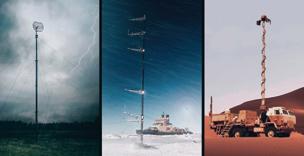









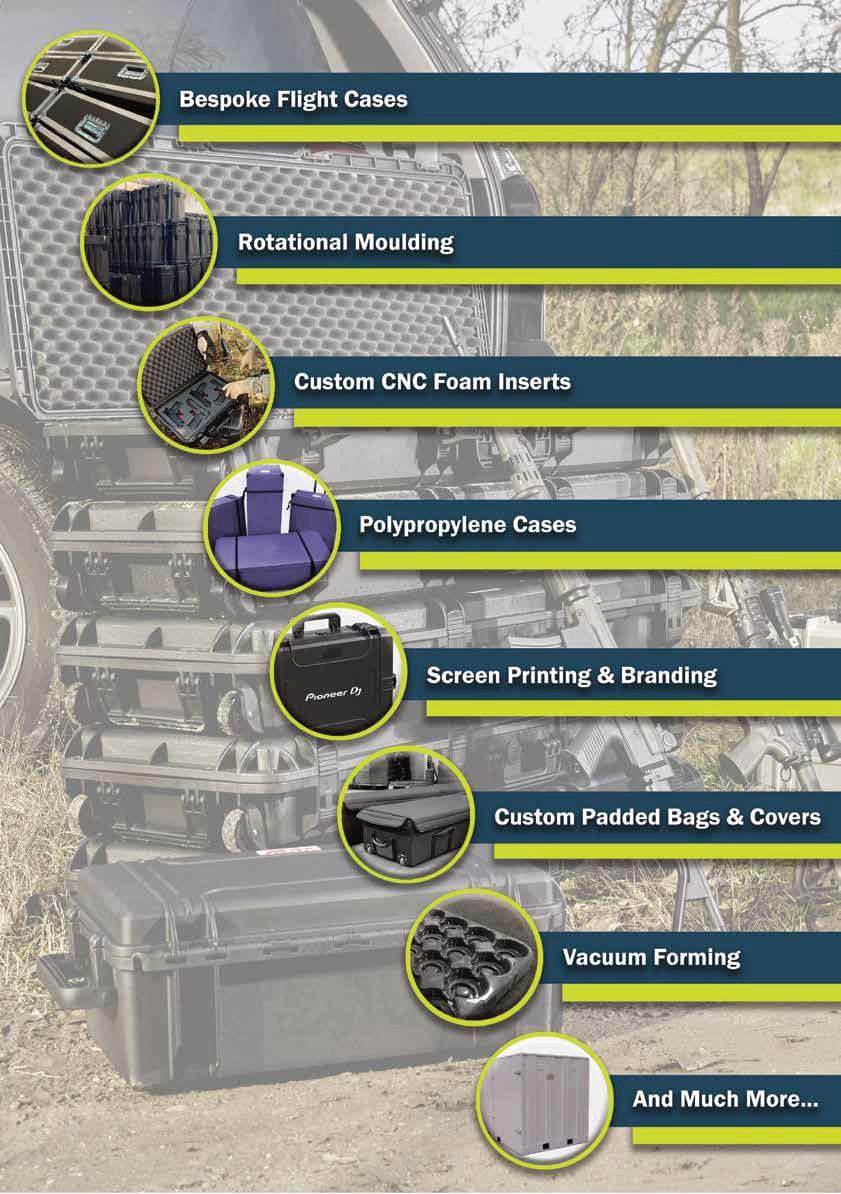
In an era where environmental sustainability and safety are paramount, the alignment of military standards with the European Union's REACH (Registration, Evaluation, Authorisation, and Restriction of Chemicals) regulations represents a significant stride toward a greener and more compliant future.
This alignment is particularly crucial in the context of connectors, which are indispensable components in military
manager at connector specialist PEI-Genesis explains the importance of material selection for aligning military standards with REACH regulations.
REACH is a comprehensive regulatory framework aimed at safeguarding human health and the environment from the risks posed by chemicals. Enacted in 2007, it places the onus on industries to manage the risks associated with the chemicals they produce and market within the EU. For military applications, the challenge lies in adhering to these stringent regulations while maintaining the rigorous performance and reliability standards that defence operations demand.

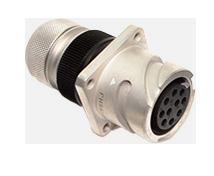


Military standards, such as MIL-DTL-38999 and MIL-DTL-5015 or VG (Verteidigungsgerät) dictate the performance, durability, and reliability of connectors used in critical defence systems. For example, VG95328 specifies design and material requirements for electrical connectors used in military applications, while VG95343 defines the requirements for the identification of electrical cables and wires.
These standards have traditionally focused on ensuring that connectors can withstand harsh environments, extreme temperatures, and mechanical stresses. However, integrating REACH compliance into these standards requires a nuanced approach to materials selection.
Aligning military standards with REACH requires the substitution of hazardous substances with REACH-compliant alternatives. Olive drab cadmium has long been a favoured material in military connectors due to its exceptional properties. However,
the Chrome VI substance used in the production process of cadmium is toxic and can have damaging effects on humans and the environment. This has prompted the military industry to adopt a transition to safer alternatives that comply with REACH.
Olive drab cadmium often used in electroplating connectors, provides several advantages that are crucial in military applications. The plating offers excellent resistance to corrosion, which is vital for connectors exposed to harsh environments, including salt spray, humidity, and extreme temperatures.

It also ensures high electrical conductivity, which is essential for reliable signal transmission in military communication systems. Similarly, olive drab cadmium plated connectors exhibit superior durability and wear resistance, contributing to the longevity and reliability of military equipment.
Despite these benefits, Chromate VI is classified as a carcinogen and poses significant environmental hazards. As a plated surface on a component, cadmium does not represent a risk to health, as it is not easily absorbed through the skin, so handling cadmium plated items is not directly harmful.
The main risk to health is cadmium dust or vapour, which can be generated by machining or welding. The main route of entry into the body is via inhalation or ingestion. If it corrodes, cadmium forms a white crystalline cadmium salt deposit on the surface of the plating and it can represent a health risk if not handled properly. The deposit may enter the body through inhalation if it becomes airborne or through ingestion. Cadmium and the compounds it forms when it corrodes are toxic and may cause cancer or genetic defects.
Cadmium is also toxic for the environment as it accumulates in soils and it can be taken up by plants, then entering the food chain. High levels of cadmium in soil can also impair soil health and fertility, affecting agricultural productivity.
Producing cadmium plating needs to be a highly controlled process in order to ensure the hazardous substances used are controlled as much as possible.
The transition from cadmium to REACH-compliant alternatives involves exploring materials that can replicate or surpass the performance characteristics of cadmium without the associated health and environmental risks.
A suitable alternative is Tin-zinc J plating, which provides robust corrosion protection, making it suitable for connectors exposed to harsh environments. This plating offers good electrical conductivity and is 121 VG approved.
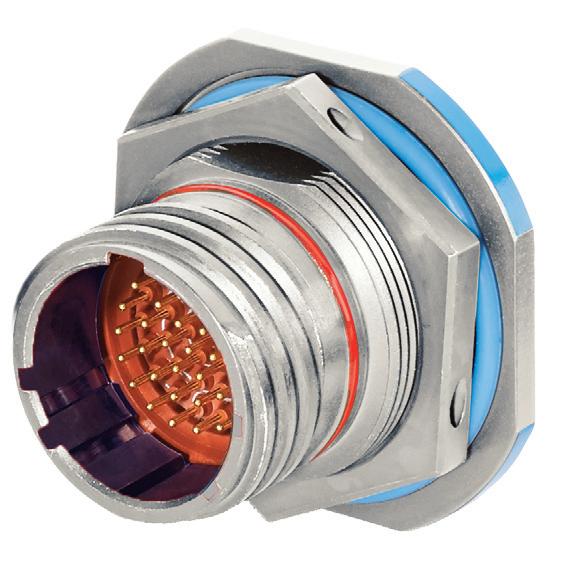
PEI-Genesis supplies compliant connectors from a range of manufacturers including Amphenol’s Amphenol-AIR LB Tin Zinc

J plating connectors, which fully comply with the values of a cadmium-plated design in terms of corrosion resistance, conductivity and shielding capability J-plating connectors. The Tin Zinc J plating is also compatible with cadmium connectors already in use so it is suitable for maintenance and repair orders.
Similarly, these connectors are compliant with VG military standards, including VG95234, VG95328, VG96912, VG953191016 and VG95319-1011.
Aligning military standards with REACH regulations through careful material selection is a multifaceted challenge, particularly when replacing cadmium. However, the defence industry is making strides in identifying and implementing alternatives that ensure connectors remain reliable, durable, and environmentally friendly. By replacing cadmium with REACH-compliant materials, such as Tin-Zinc J, the defence and other sectors can protect both their workforce and the planet, ensuring a healthier and more sustainable future.
To find out more about J-plating solutions from Amphenol-Air LB or to browse through the wide range of military connectors offered by PEI-Genesis, visit:


As we stand on the cusp of a defence review one is tempted to wonder how many one has known and wonder whether the questions should be “What again or Still?” and “Apart from reducing capacity what have the others achieved?”
Having been involved in the Military for longer than most one is tempted to try and recall how many major full or partial reviews one has been involved in. If memory is correct there has been a major review of some sort every 3.5 years during the 50 plus years of that memory. Yes, changes happen but one is always tempted to remember the words attributed to Gaius Petronius Arbiter (Died by suicide AD66.)
“We trained hard and no sooner had established working and efficient teams when in the name of progress someone ordered a reorganization” As true today as it was then”.
And no the memory does not stretch that far back! However, one has actually been part of the team in a good few of them and always the feeling is “Here we go Again”. Very rarely do they result is positive decisions for the good. Some such as those of Cardwell, Childers and Haldane do but that was because they had specific purposes stemming from clear and generally agreed issues. The first professionalizing the Army by abandoning commission purchases and improving terms of service. The second, finished reorganizing the Army for UK and World Wide deployment and the third created an expeditionary force able to efficiently deploy overseas backed by efficient reserves for home defence and overseas reinforcement. Even these missed opportunities to improve the situation still further. All caused controversy. The first failed to act on the weaponry and organizational lessons of the Crimea. The second lost the support of much of the Army’s support structure. The third far reaching, though it was, did not really address the issue of the size of the “Army” which even the former two had recognized as a major issue.
However, a number of commentators have over the years pointed out that the Treasury are the only winners where there is no overarching purpose such as abolishing commission purchases or creation of an expeditionary force as opposed to “saving money” or increasing “efficiency” by “doing more with less”, because reviews stop spending on defence and also keep the politicians off the Treasury’s back.
It is worth exploring this issue a little further. There seem to have been few reviews which tackle the impact the Treasury has on defence spending apart from straightforward cutting. Few have tackled, apart from commenting in passing, the negative effect that the Treasury has on Defence. This is more the attitude of the Treasury to Defence spending and costs and the impact that

Treasury orthodoxy has on the costs of defence acquisition and infrastructure. It is a truism, especially in Defence that the longer it takes to buy something the more it costs. In UK much of the Treasury orthodoxy acts as a brake on the actual process of spending, pushing up Industries cost and therefore Defence spending.
If this review is to examine threats to the UK and if the first duty of a government is the security of the nation anything that impacts those two issues should be part of the review. If Treasury orthodoxy reduces defence capability and therefore the security of the nation it is a reasonable supposition that that Orthodoxy and even the institution itself and its methods should be part of the review.
One simple issue is how defence programmes are costed and how savings can be made and what happens to those savings. Too frequently especially where interservice programmes are involved departments fight their corner without the whole expenditure and the savings across budgets being accounted for. If the total cost of a project were covered including the savings in peripheral and tangential programmes different decisions would be made.
Second and third order, or even more, impacts need to be considered. Thus, if one is talking logistics, as an example, buying an ammunition cases may well be a straight cheapest wins situation, it usually is, with the margin being less than a million pounds across the whole of defence for the whole programme. However, the weight savings on different materials achieved by one design may well save several tens, even hundreds of millions, of pounds across the transport infrastructure and more in other areas. There is no way that this whole-body approach is ever taken into account and nor is the fact that departments across the board will be saved huge amounts of money too. Money saved needs to be credited to departmental accounts to encourage this sort of deep examination of programmes. Crediting the better technical option and the whole of the budgetary saving is in neither the Treasury’s budgeting DNA nor that of its

offspring, Defence’s. Whilst the Treasury continues with a quill and ledger mentality, albeit on a computer, nor will it be. A new methodology, more in line with every day industrial practice is needed.
The impact of innovation and technology growth is frequently, even usually, ignored in reviews. In one review the author was involved in the team argued endlessly about the impact of software on target acquisition. Traditionalists argued for the status quo in terms of time to find and identify and then strike targets with precision. Those of a more radical persuasion argued that technology would make the battlefield a much more dangerous place and this was an equation that worked both ways ie attack and defence. It has taken time for the changes to occur but changes there are and the battlefield is a decidedly more dangerous place. What does that spell out in costs. Well perhaps cheap and cheerful programmes may well be the order of the day. Simple UAV’s (almost of the sort that 10 years ago were toys in Toys’r’Us or Hamleys) now have a real anti tank or surveillance role. That innovation did not really come from the large defence companies more from the Small and Medium Enterprises (SME) and the unusual weapons sources. Those SME are not really kept alive by large programmes but by orders that bring the “now” to the battlefield and allow more innovation to occur to bring the “soon” to the battlefield almost in a hand to mouth sort of way because the “now” will have an equally ingenious countermeasure deployed against it. It used to be said that programmes have to be future proofed. Now it is the innovation process that has to be future proofed. The lesson: support innovation especially innovative SME’s at the expense of large programmes.
It is almost impossible to argue against Lanchester’s equations (to simplify; within reason, more less capable equipment well-handled is a more effective combination than fewer more capable equipments because the factor in the equation that relates to technical capability is outplayed by the one that represents numbers) Strangely enough this is not an argument about technical capability or troop strengths but about training. If you only have a small amount of money the best capability return on it comes for improving the quality of your soldiers i.e. improving training. This in turn is not an argument about spending more and more time on the training area, although you do have to go there to learn about some things, but one about deploying high technology to improve individual and team capability.
Two of the points so far have pointed to technology. Perhaps the next point to raise therefor is the importance of keeping an eye on technology. That means having people capable of understanding it and interpreting it. This in its turn argues for a better educated professional class. More technically qualified officers and civil servants. A senior general, my boss, once said anyone can be trained to be an accountant. Very few accountants can be trained to see the implications and impacts of technology. There therefore needs to be a change in emphasis in the sort of people recruited to government service and to the training they receive. It needs to be equivalent to the technological army the Prussian’s raised and trained. It is a pity but that training needs to be internal because the pace that civilian universities with 3 year courses bring to the table is not sufficient to keep pace with the demands of modern Defence work.
Cardwell, Childers and Haldane’s reforms were all about creating an army in being; one of the lessons identified from the Crimea and the Boer wars where the UK had to be stripped of virtually every soldier to create a field force of any strength. To do so despite the Militia being available there was nothing either left in reserve of for Home Defence. With Russia and to lesser extent China and


Shortages of money and troops make high tech training (here 4 GD's Smart Facility with associated SimStriker, ACIES, Ecfect_OS) the best return on investment by making troops more effective.
North Korea involved in hybrid warfare there has to be the capability to do these essential tasks. This argues for a much bigger Armed Forces balancing more numbers with more technology and platforms and it probably argues for a conscript system. It is of note that the Nordic countries (less Germany) have opted for a conscript system that offers solutions to both the military and blue light services and as an added benefit the social services system. It is noticeable that the brightest and the best go to the armed services. There is a model here to satisfy the previous point.
Russia remains a threat. Arguably it never went away. Its power mechanisms remained in place through Detent and onwards. In a different context the Jesuits founder St Ignatius Loyola said “Give me the boy until he is seven years old, and I will show you the man.” There are plenty more people available to run a country with that sort of system, the sort who wander into Salisbury to gaze at the Cathedral spire or invite people for a cup of tea. It is worth pointing out though that Russians are not 10ft tall. FSS and FSB and the GRU and Spetsnaz have all made some spectacular mistakes in Ukraine and elsewhere. No matter what happens history tells you Russia will always be a threat and there will always be people wanting to keep it that way. There are people who say that there are other ways of achieving political and strategic aims. The fact is that they very rarely work. Russia has more sanctions applied to it than almost anywhere, yet its economy is doing OK and its people do not seem to be too badly off. North Korea seems to keep going. If we believe in soft power, one would have thought the Treasury, and the Foreign Commonwealth and Development Office would have been more effective. The reality is Chairman Mao’s “Power comes out of the barrel of a gun” has more than a ring of truth to it.
Having disparaged large companies there is a place for them and they should not be discouraged. They have their major uses to supply “big metal” and the “big programmes” when you need them. Supplying Ukraine in a relatively minor engagement took just about every item of munitions UK had. This is not the first time this parlous situation has occurred. The Boer War, The First World War and the Second and even Korea were nearly lost in the initial stages because of Government, Political and Treasury parsimony. With politics around the world in the state they are there is every need to make certain there is capability in the UK to provide what is required by the UK in the first instance and people we might have to help out in extremis. There is no guarantee that our allies will continue to be engaged overseas or even help us or even as is the case with the EU be defence orientated. Therefore, there is a need for onshore production capability and that capability needs to be fed by regular and uninterrupted supply orders. The orders don’t have to be big just big enough to keep things going. Industry needs to play its part in this, exporting to earn more and by not being greedy, and some are, in satisfying domestic orders.
So messages for the Defence Review; Make certain there are a clear set of purposes behind the thinking and rationalizing, take a long hard look at the Treasury, its orthodoxy and its operations, especially in across the board costings. Support SMEs and protect innovation supported by better technical education. There is a need for bigger armed forces and possibly conscription matched by onshore production. Numbers and weapons count especially with Russia on the world stage. Soft Power is less than effective.
Flexzorb™ - The flexible, lightweight protective textile that is widely used by many of the world’s leading defence vendors, making us the leading provider of activated carbon cloth for defence applications.
Lightweight and breathable, Flexzorb is used in a range of defence applications, including:
– CBRN Respirator filtration media – CBRN Personal protective equipment (PPE) – CBRN decontamination wipes – Missile decoy media – Phosphine gas adsorption media
Chemviron, the European Operation of Calgon Carbon Corporation, has a long history of protecting and defending troops with our activated carbon products, and we remain committed to providing adsorbents to combat chemical warfare agents. In an environment where there is no room for failure, why wouldn’t you rely on products that have been used and trusted for over half a century?
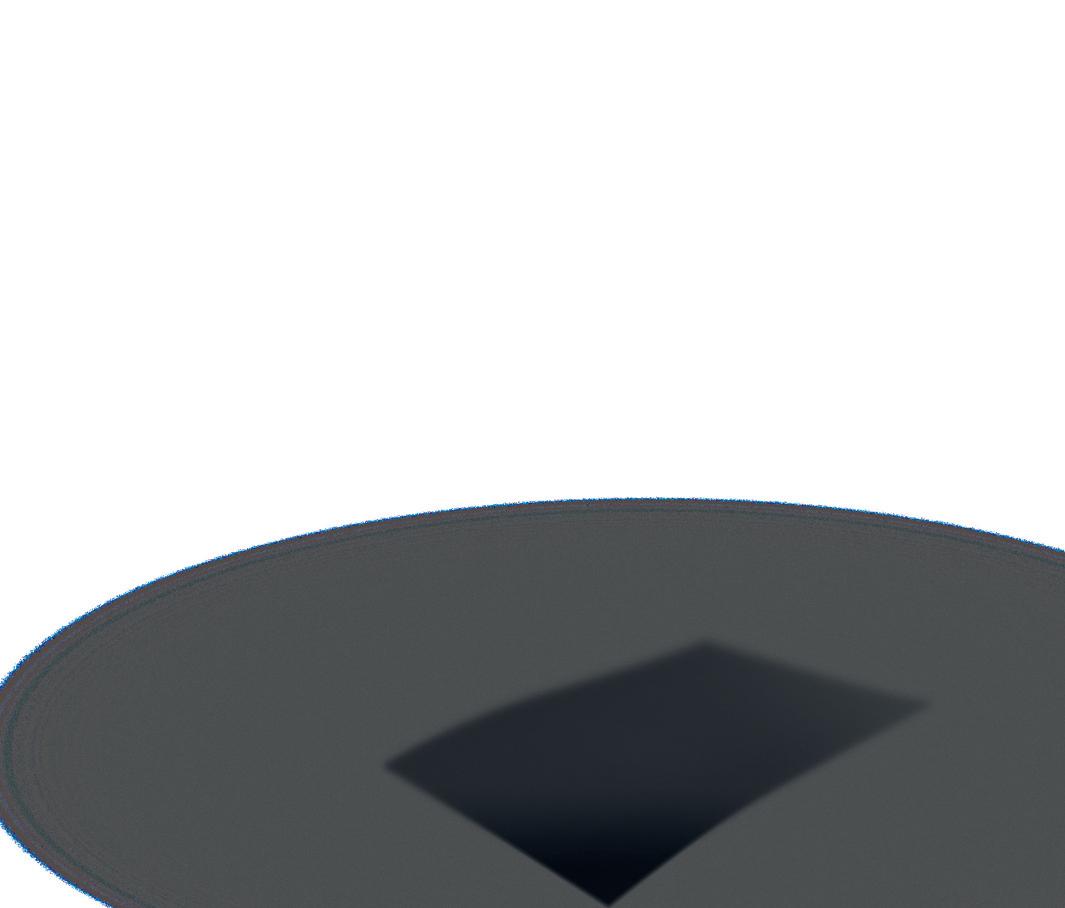
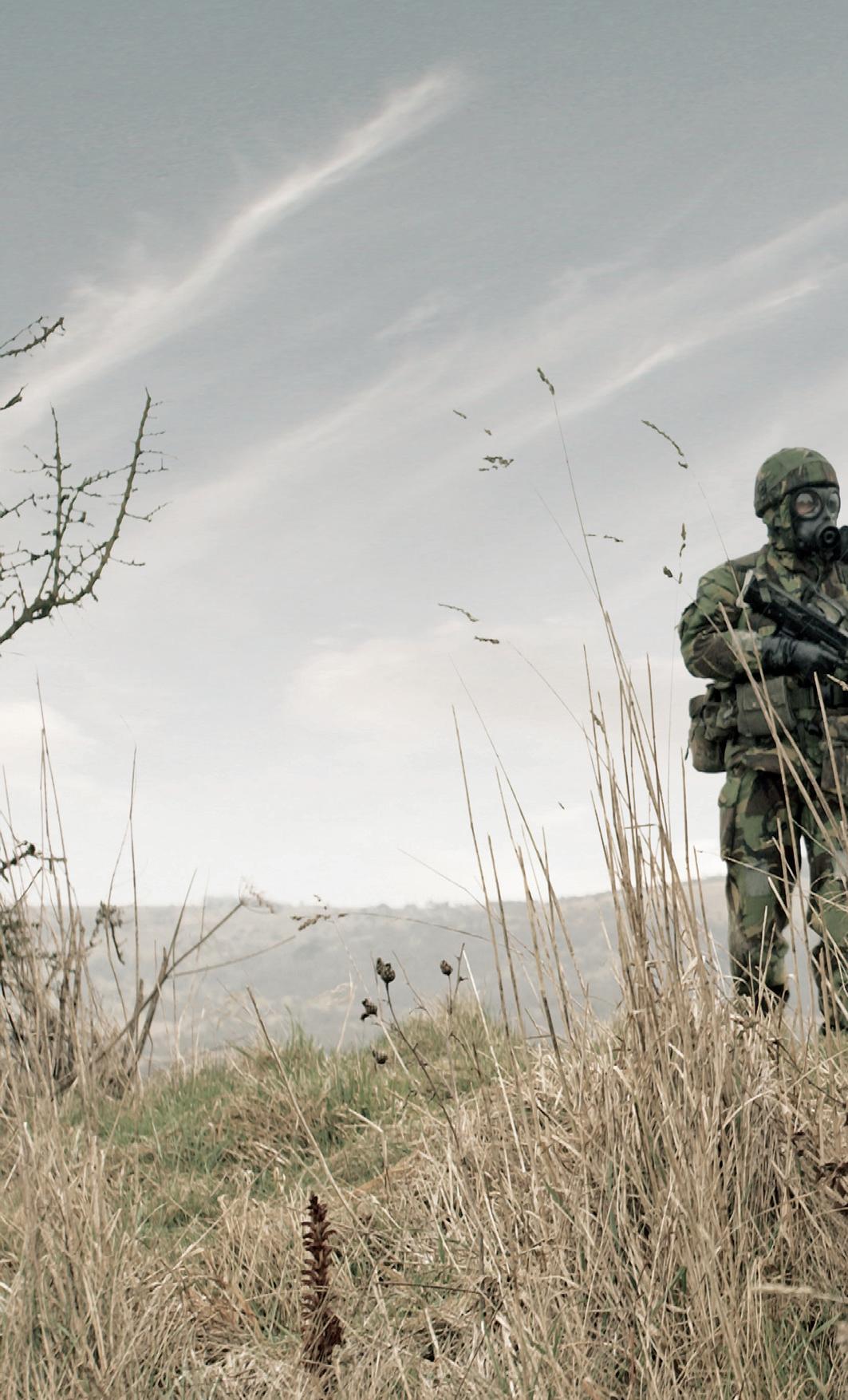
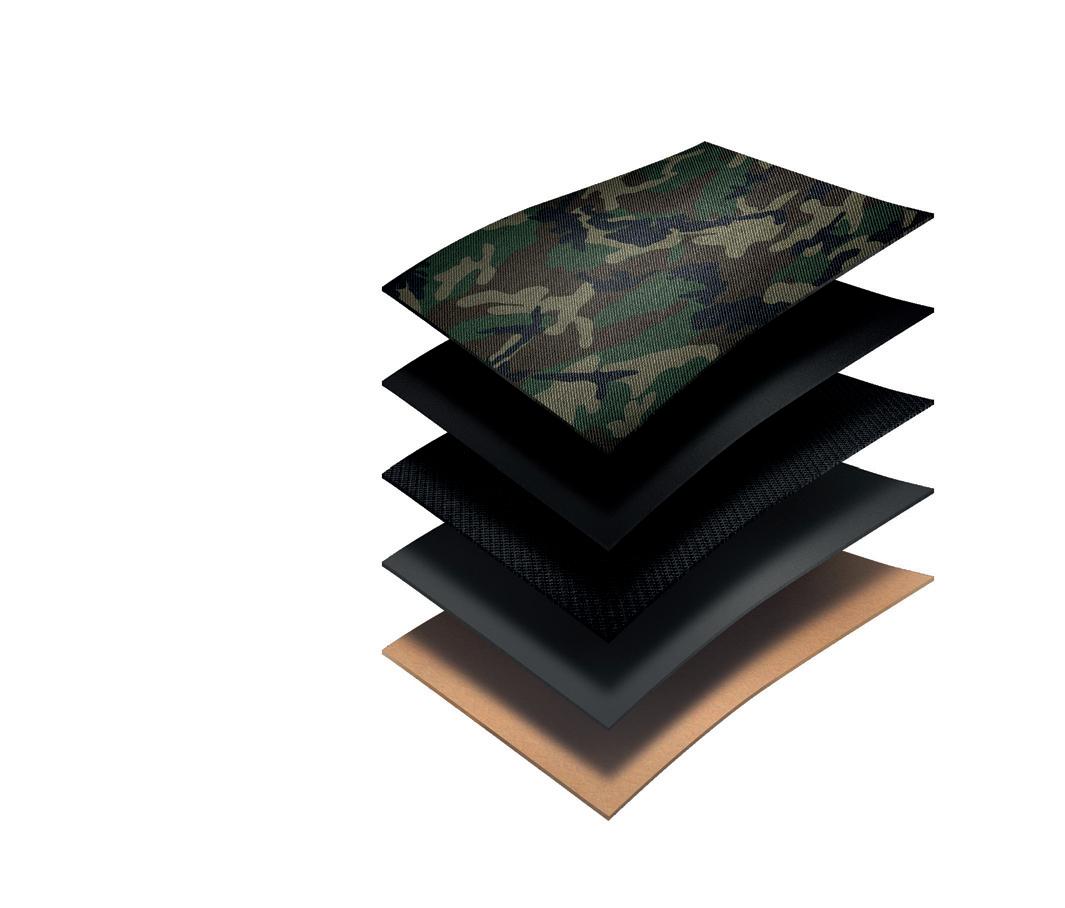
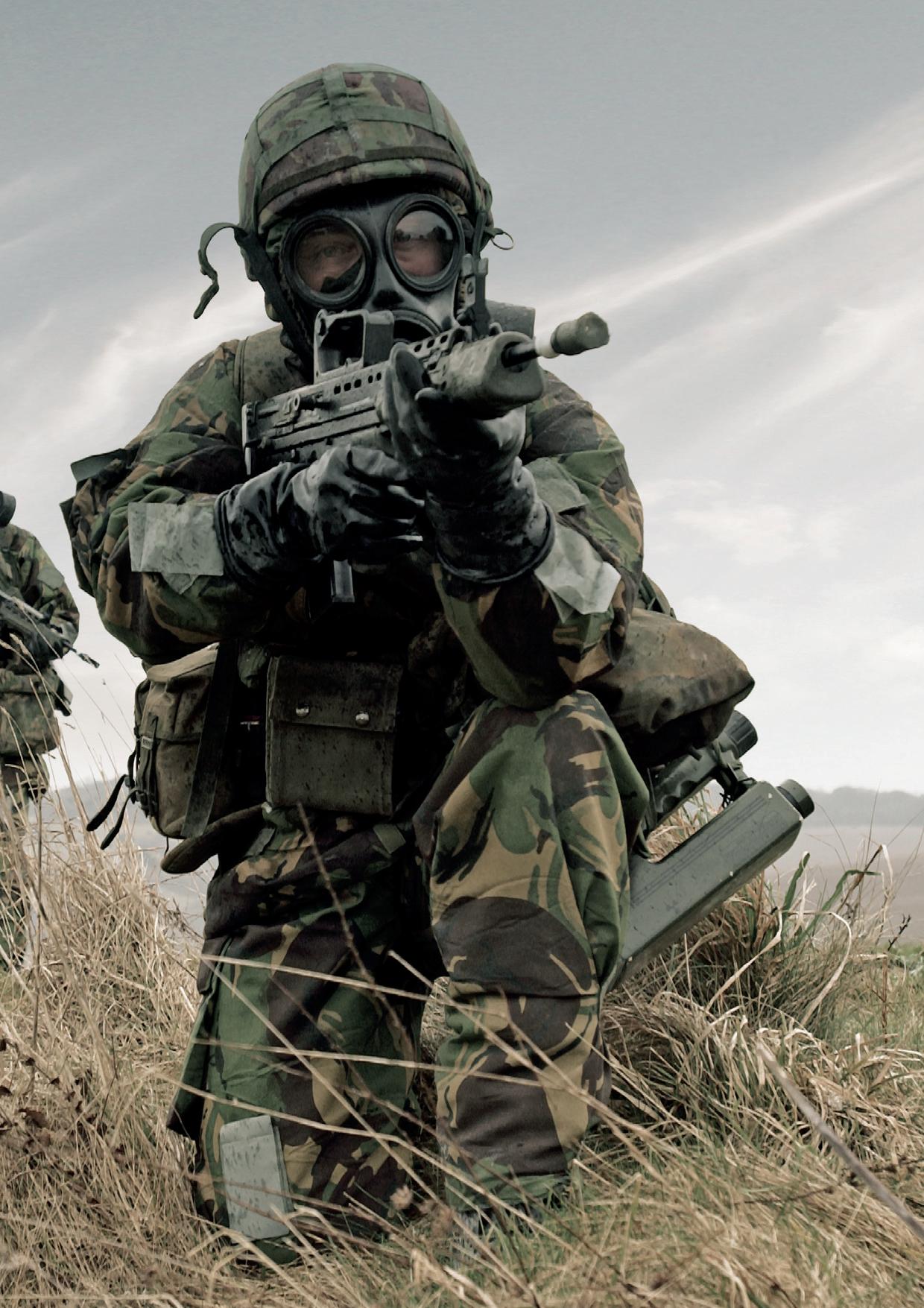





Cerberus 4x4 and 6x6 multirole family of vehicles provide commanders with an agile, class-leading protected platform.
• Adaptable and configurable to suit a variety of tactical and support mission profiles.
• Modular ballistic, blast and IED protection systems from L1 – L3, achieved while maintaining an industry-leading payload capability with growth to meet future threats.

• Engineered and tested to provide reliability and commonality with widescale use of industry-leading proven COTS equipment to support future force needs in reducing initial and through-life costs while providing assurances of rugged, reliable and safe in-service operation.


I write this article with the memory of a fellow long course student, and therefore, a friend’s death at the forefront of my mind.
Here at DVD we are all impressed with the bright shiny vehicles. Few of us think of the consequences of a catastrophic failure. This was brought into sharper focus by the 80th Anniversary of D Day and the training that went into that and deaths that occurred from vehicles being swamped during that great endeavour and the training for it. It is a fact of life that military vehicles go close to and by various means over water and often submerge, frequently rolling over, usually with the crew drowning. Interestingly enough survivor reports say it is more shocking when the roll over occurs on land and into a ditch or pond. Water not being expected on dry land.
It is not a frequent occurrence, but it happens often enough to cause comment. The USMC who probably undertake vehicle operations close to water more than any other defence organization even have it registered on a “cause of fatality” in vehicles chart. It does not matter whether it’s a tank toppling off a bridge in the dark, an amphibious vehicle swamping in rough water or vehicles slipping off solid ground, down embankments into canals and rivers.
There seems to be no read over from the aviation world to that of land
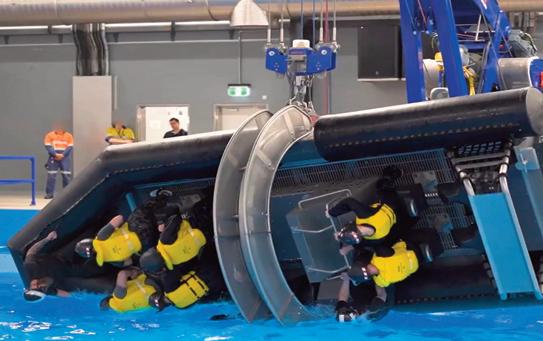
systems. In aviation and with helicopters and fast jets in particular there are safety environments designed to deal with the problem. There are for “ordinary” aircraft too but where there is a prevalence of crossing or deploying over or on water, especially in the dark and close to it, there is a more rigorous approach.
Survival Systems Limited (SSL), a small but very specialised Canadian company from Halifax, Nova Scotia, specialise in providing the means and instructional skills to teach people how to dramatically increase their survival odds in the event of a sinking/immersion and any subsequent roll over. The base equipment is provided by a Helicopter Underwater Escape Trainer (HUET) and a lifting system. SSL is internationally renowned and ubiquitous for the provision of this equipment and training. The term HUET would lead you to believe they are all about Helicopters, well originally, they were because “ditching” was a major cause of helicopter related fatalities. SSL has developed a range of HUETs Trademarked as Modular Egress Training Simulators (METS®)
There are a number of key points to METS®:
• The are modular so can easily be reconfigured. This is achieved by having a base unit onto which a number of interchangeable panels can by attached. In the morning the METS® can be configured as one vehicle variant e.g. troop carrier and in the afternoon, it can be a command vehicle.
• Before a new METS® is released the design of the original vehicle is studied in great detail and these details are replicated exactly. Same size exits, same opening mechanisms, same obstacles between crew seats and exits, same type of crew seats and restraints etc. This aids muscle memory to speed opening hatches and getting to the exits unimpeded and dealing with similar issues.
• The lifting systems for the METS® are matched to the METS® they will be lifting and are personnel-rated and comply with those specialist regulations. The only matched system available worldwide which meet these linked twin criteria.
• Before being released very detailed and careful thought is applied to the training that will be given to instructors.
• Equal care is given to the specification of the maintenance regime for the METS® and the lifting system.
This care is driven by the thinking that getting out of the vehicle in the dark and cold and then getting to the surface (working out which way is
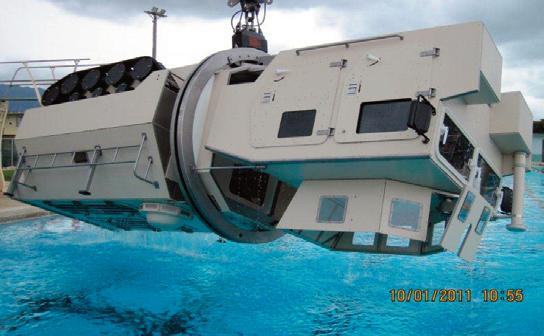

up is an interesting challenge in pitch black conditions) and coming up into rough water and perhaps stormy conditions amid the chaos caused by an overturn with injured people to evacuate will not be as easy as in barracks. The crew may well be wearing helmets and full fighting order and may have weapons with fixed bayonets and will probably not have been swimming in their boots before.
Reading the published reports of incidents where crews of military vehicles have drowned it seems that most deaths occur following a roll over rather than a straight submersion. Usually, the incident occurs at night in conditions of total darkness and the water is shallow with the underside of the chassis above water. The exceptions to this are during amphibious training where frequently the water is deeper with the initial cause of the sinking equally spread between mechanical failure/poor maintenance and rough water. There are some unusual causes, falling off a bridge or a raft or float/ferry float etc but the majority fall into these main categories.
Fatalities had sometimes suffered other injuries but few of these other injuries were fatal. Drowning was the major cause of deaths. The message is that many of these deaths were survivable and with training most are. In the days of coroners with very long screwdrivers reaching far into the guts of a system and the decision-making process it is perhaps incumbent on those responsible to start examining the problem in more detail.
A further point is one of perception. Many of the incidents involve light vehicles which in our minds we equate with passenger cars. Kicking a window in or out equalising the water pressure by other means are not options when these light military vehicles are armoured. Training is the answer.
The key point is that shallow water drownings can be significantly reduced given survival training and experience of the conditions. This has been a consistent experience of the aviation world. While initially thought that this was not the case it has frequently turned out that deaths were caused by errors of drill, i.e. not following training. The old saws hold true; “Train hard, fight easy” and “Sweat saves blood”. In other words, realistic training helps save lives, repeated training means muscle memory, instinct, kicks in and makes things happen. You might curse repeating the training and your instructors, but you will live because of them. Military training is dangerous, it is training for a very dangerous environment. There is no need to make it unnecessarily so. A number of examples of the METS® system optimised for military vehicles are available and are in service with the USMC, the Japanese Ground Self Defence Force and other armies/forces in the Far East. Recent training accidents, some exacerbated by stresses imposed on the system by Covid have resulted in an increased number of orders for
SSL METS® products. It is worth saying too that similar arrangements are required for Rubber Hulled Inflatable Boats (RHIBs) and other inflatable shallow draught fast assault craft.
Four METS® products are available covering this range of requirements. METS® Model AAV and METS® Model Submerged Vehicle Egress Trainer METS SVET. A hybrid HUET METS SVET has a HMMWV simulator at one end and a BV206/FATV at the other and a Similar Version exists for the VIKING amphibious tracked carrier the VIKING UET SVET. RHIBS are served by METS Model RHIB initially in service with the RAN it is attracting a lot of interest elsewhere.
There is a need to back up all this equipment with maintenance and training. SSL is committed to a maintenance and training policy designed to keep equipment and instructors at the forefront of their capability. All instructors on survival skills and drills using METS® are also trained to carryout routine maintenance on the equipment. This covers up to quarterly servicing. Six monthly and annual maintenance and requalification and certification of instructors and equipment is carried out by SSL specialists. Training facilities are a key aspect. SSL own and operate a number of Survival Training Theaters. These are state of the art facilities designed to simulate any conditions the trainees are likely to experience. Understandably may operators have a desire to own their own training facility. Before launching off into this sort of venture it is perhaps sensible to avail yourself of SSL’s excellent advisory service. There are many examples where this team has saved clients money by bringing worldwide experience to bear either by advising on new designs or by modifying existing client owned facilities. When to do this? Before you decide what to do because once plans are on paper, and processes are underway, it is difficult to reverse the process and come forward again. Tap into SSL’s holistic worldwide experience honed as a result of being committed to this specialist subject.
The basic message is do not be swayed by the paint. Think about what happens when it all goes wrong. Catastrophe is not a foregone conclusion.


In Afghanistan, Western militaries built high-capacity data networks that helped prosecute insurgents and provide enhanced situational awareness about a technologically inferior enemy. Tomorrow’s adversary will have advanced EW capabilities, meaning the army’s role will differ substantially. It will likely involve identifying enemy threats and gaining situational awareness across multiple domains—detecting complex signals from advanced technology such as frequency-modulated continuous wave radars and communications equipment that uses LPI/LPD signals. Gathering data through highly technical surveillance of the electromagnetic spectrum will be vital for C2 to make informed decisions.
However, the path to achieving a strategic advantage is not straightforward. EW operators face many tactical challenges, including:
• Remaining hidden
• Rapidly repositioning critical sensors
• Gaining situational awareness while operating behind frontline operations
One solution to these challenges is to equip land-based tactical, mobile systems with passive RF sensors that can geolocate signals of interest in real-time using advanced geolocation techniques and record I/Q data for post-processing.
Operating effectively in a contested and congested electromagnetic environment requires stealth. Radar might be a versatile tool to help detect adversaries in the battlespace, but being active, it can be reverse-targeted and destroyed. Conversely, passive RF sensors can sit silently on the battle昀eld, soaking up adversary emissions while remaining unseen. They can also monitor the spectrum in real-time or record it over hours or even days.
In the 昀rst case, intercepting a signal of interest in real-time could, for example, help identify an RF-emitting telemetry module from an enemy UAV approaching a friendly position. Early warning of this threat allows decisions on whether to take kinetic or non-kinetic defensive measures to be taken
at the speed of relevance. In the second case, operators can analyse terabytes of recorded I/Q data to search for signals of interest or patterns of life, for example, allowing them to identify adversary communication network structures. Data from both activities can give a signi昀cant strategic advantage on a technologically advanced battleground.
How do passive RF sensors work?
Passive RF sensors (RFeye Nodes) operate using softwarede昀ned radio (SDR) technology, providing 昀exibility as software de昀nes functionality rather than hardware. SDRs run on general-purpose hardware, such as a 昀eldprogrammable gate array (FPGA), so the radio can be reprogrammed using software, and the hardware itself does not need to be modi昀ed. This makes SDRs very 昀exible as they can sweep across multiple frequency bands (wideband receivers), use different modulation methods, and support various communication protocols.
Passive sensors contain radio frequency front end (RFFE) hardware, including components like antennas, ampli昀ers, 昀lters, and mixers that convert received analogue RF signals into an intermediate frequency (IF). The analogue-to-digital converter (ADC) then turns the IF into digital signals, which undergo software-de昀ned processing techniques, such as 昀ltering and demodulation. In 昀ltering, software algorithms remove unwanted noise to improve signal quality; during demodulation, software extracts data from a received signal. Both these processing techniques help improve the quality of signals intelligence.
SDRs easily adapt to different signal environments and standards, making them useful for EW activities (mainly electronic support measures) and SIGINT operations. Their interoperability with other systems, such as laptops, tablets, different sensors, and other SDRs, makes them particularly useful for these types of operations. Moreover, SDRs can be networked (across multiple domains, if desired), allowing multiple sensors to share spectrum data and synchronize their operations.
However, one of the most practical bene昀ts is that SDRs’ functionalities can be updated through software upgrades, allowing capabilities to constantly evolve without users having to purchase new hardware.
Passive RF sensors have traditionally been placed in 昀xed positions to monitor enemy emissions, carry out SIGINT, ensure radio frequencies are correctly used, mitigate interference, and practice EMCON.
However, recent engineering developments in creating ruggedized sensors that have been optimized for size, weight, and power (SWaP) mean their use has transitioned from 昀xed deployments to tactical deployments on mobile manned and unmanned systems that can function as integrated, networked, and autonomous systems for EW and SIGINT operations.
The 昀rst type of vehicle operates as a surveillance vehicle that deploys a passive RF sensor and antennas on a mast (generally up to twenty meters high). The higher the mast, the further the radio horizon. For example, an antenna height of 2 meters permits a 5 km line-of-site with a radio horizon of 5.8 km. However, increasing the antenna height to 20 meters increases these distances to 16 km and 18.4 km, respectively.
This vehicle con昀guration allows operators to conduct spectrum monitoring tasks and record I/Q data for up to ten hours for post-processing SIGINT tasks. If three vehicles are networked together (or one vehicle is networked with a sensor deployed using a different method: a UAV or UGV, for example), operators can carry out 2D TDoA. With a 昀eet of three or more vehicles (or sensors), operators can carry out 3D TDoA of airborne targets.
V-Track A150 DF and geolocation vehicle
A second vehicle houses a deployable mast upon which is an RFeye Array (phased array antenna) connected to an RF sensor. A phased array antenna is a group of antennas speci昀cally positioned and working together to establish the direction of an incoming signal due to differences in the angle, time, power, or frequency perceived by each antenna. Antenna arrays are used to achieve more focused directional control than a single-element design could provide. Vehicles with array antennas can operate independently or as part of a networked system to carry out AoA, TDoA, and hybrid geolocation missions.
SR18C command centre vehicle
Tactical vehicles equipped with passive RF sensors allow units to deploy to remote and inaccessible places 昀exibly. These TRL-9 vehicles can be rapidly deployed to areas to monitor the spectrum and to geolocate transmitters of interest, providing near-instantaneous capability in response to emerging threats or operational requirements. Tactical vehicles can provide enhanced situational awareness without having to deploy soldiers on the front line. They are also easily moveable as the frontline shifts.
Having different con昀gurations of RF sensors in vehicles is crucial, especially in dynamic situations where the electromagnetic environment is congested, contested, and constantly changing. These vehicles can work independently or operate as a comprehensive networked SIGINT system designed to monitor, record, and capture signals of interest and conduct radio direction 昀nding and TDoA geolocation. CRFS builds three types of tactical vehicles.
The last type of vehicle acts as the command centre for a network of tactical vehicles. As personnel will operate out of this vehicle, it should be located at a safe distance from the front line. Wireless backhaul from the edge vehicles (in addition to dismounted systems such as the RFeye DFH30 that can be carried and deployed by the vehicles) to the command vehicle can be via MANET radio, Satcom, or cellular, depending on where the vehicles are deployed.
However, the command vehicle should house a spectrum recorder with 昀bre I/Q streaming for long-duration RF monitoring and signal analysis. Capturing RF activities over time (in addition to the design of the hardware) will allow SIGINT operators to identify patterns of life and increase the Probability of Detection (PD) and Probability of Intercept (PoI).
This command centre vehicle setup allows operators to conduct comprehensive signals intelligence. The capability to detect and then geolocate signals of interest in real-time enhances immediate operational ef昀ciency, and capturing high-昀delity RF data plays a vital role in understanding an adversary over time.
Geolocating RF signals refers to the process of determining the physical location or source of a speci昀c RF signal or emitter. This can be undertaken with varying degrees of accuracy based on the method employed, the technology used, and environmental conditions such as multipath propagation.
TDoA works by comparing the time difference of an RF signal across multiple receivers at the precise same moment. Since the receivers are situated in different locations, they capture the same signal at slightly different times. By precisely calculating these time differences with spectrum monitoring and geolocation software, it becomes possible to determine the exact location of the signal.
For accurate operation, TDoA requires an omnidirectional antenna and a network of at least three RFeye Nodes that continuously record RF signals. This data is then transmitted to a master control computer in real time, where the signals are evaluated.
Spectrum monitoring software (RFeye Site) overlays these time measurements to determine how much each signal needs to be adjusted, in microseconds or milliseconds, until they align or correlate. It assesses the quality of these overlays and uses this information to reduce the effects of multipath interference and avoid false correlations. The time difference measurements result in a single correlation point, which is represented as a curve on a map.
With two RF receivers, the timing relationship allows a single curve to be mapped, indicating that the signal is somewhere along this curve, though the exact location cannot be pinpointed. However, introducing a third receiver enables the software to generate a second curve. The intersection of this second curve with the 昀rst, based on the receivers’ positions and the transmitter’s location, allows the software to calculate a precise latitude-longitude solution.
This setup permits comparing timing differences between pairs of sensors, enabling the geolocation of a transmitter in 2D. If a fourth sensor is added, the software can also calculate altitude, providing a 3D TDoA solution when the geometry is appropriate.
AoA technology provides a single line of bearing from a Direction Finding (DF) Array to a transmitter. This bearing can be overlaid on a map or a polar chart to indicate the direction from which the signal is emanating. The bearing can also be oriented relative to True North or to a mobile vehicle’s direction.
AoA operates by analysing the received signal’s amplitude across six antennas within the DF Array, comparing the
amplitude levels to determine the signal’s direction. By utilizing the detected signal strength and the known orientation of each antenna, software can accurately determine the direction of the incoming signal using a multiantenna method. This versatile technique can be applied to various 昀xed and mobile deployment scenarios.
AoA utilizes a DF array to geolocate both broadband and narrowband transmitters, although it is particularly effective for narrowband signals.
In a DF array containing six directional antennas, each is calibrated to monitor a speci昀c direction. These antennas are arranged every 60 degrees in azimuth, ensuring that three antennas can always calculate the direction of any given signal. The system takes power measurements at each antenna and compares these levels to determine where the signal is strongest, thereby identifying the transmitter’s direction.
These arrays can cover low-band DF applications, ranging from 30 MHz to 300 MHz, and typically operate up to 18 GHz; however, CRFS can provide options that function up to 40 GHz for millimetre-wave applications.
AoA is particularly effective for mobile signal hunting. For example, a unit could drive a vehicle equipped with a DF array neat to the signal source and perform geolocation when in close proximity.
For even greater accuracy, using multiple DF arrays generates multiple lines of bearing. These intersecting lines can pinpoint a transmitter’s precise geolocation.
Any future con昀ict will likely be fought against an advanced enemy in electronic warfare practices. Therefore, achieving spectrum dominance will be crucial to both sides’ EW strategy. One part of achieving this objective is to equip land-based tactical, mobile systems with passive RF sensors that can geolocate signals of interest in real-time using advanced geolocation techniques for complete spectrum visibility.
CRFS is an RF technology specialist for defense, national security agencies and systems integration partners. We provide advanced capabilities for real-time spectrum monitoring, situational awareness and electronic warfare support to help our customers understand and exploit the electromagnetic environment.
www.crfs.com
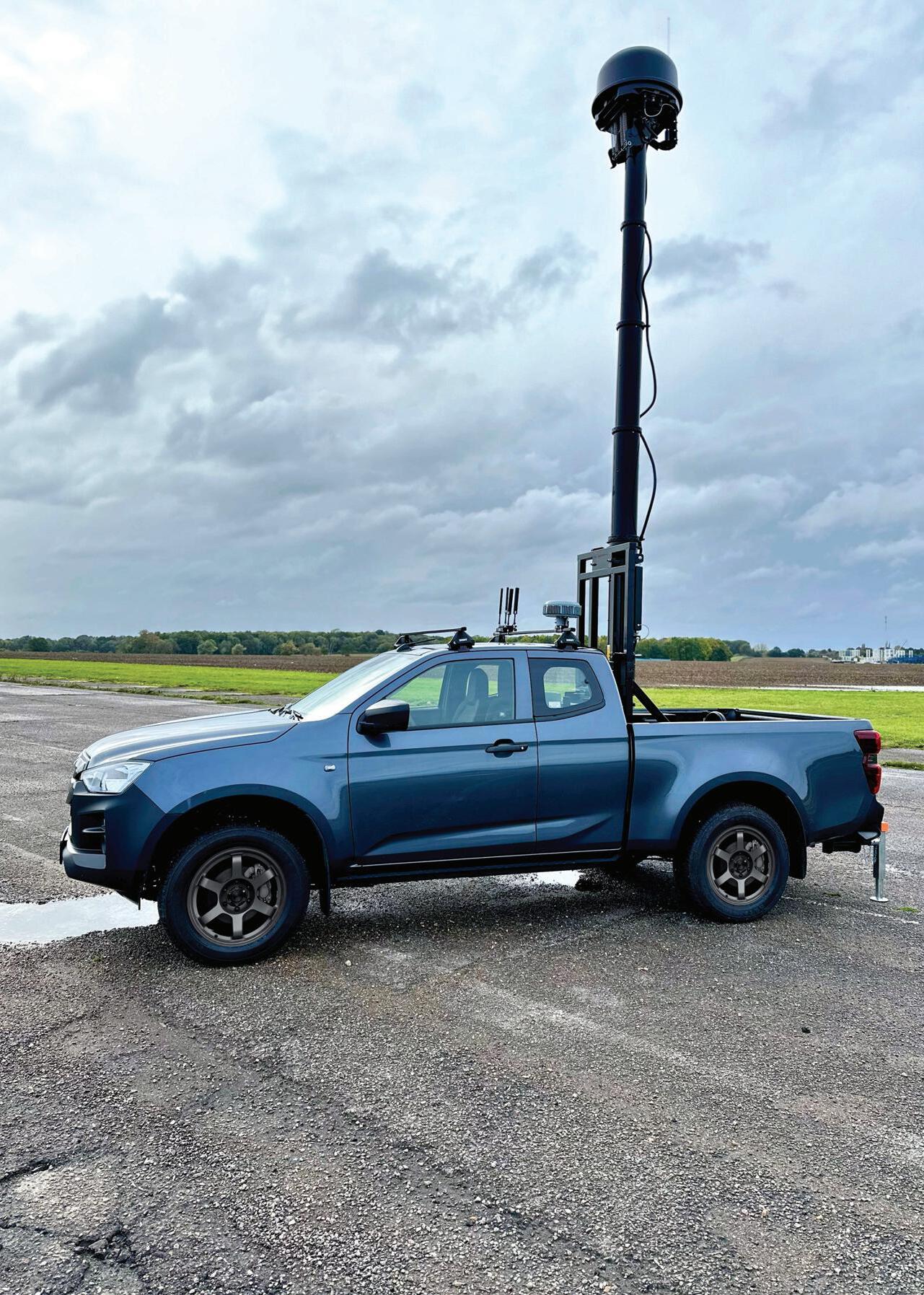
V-Track can work independently or as a networked SIGINT system designed to monitor, record, and capture signals of interest, and conduct DF and TDoA geolocation.
www.crfs.com
However, this technology, which is nearly four centuries old, goes far beyond the anti-reflective, coloured coatings applied to glasses to reduce glare and protect the material —one of its most common uses. By using coated materials, we can see stars in space, assist doctors in performing surgeries safely, and even save lives on the battlefield. The primary function of optical thin film coatings is to alter how light interacts with the
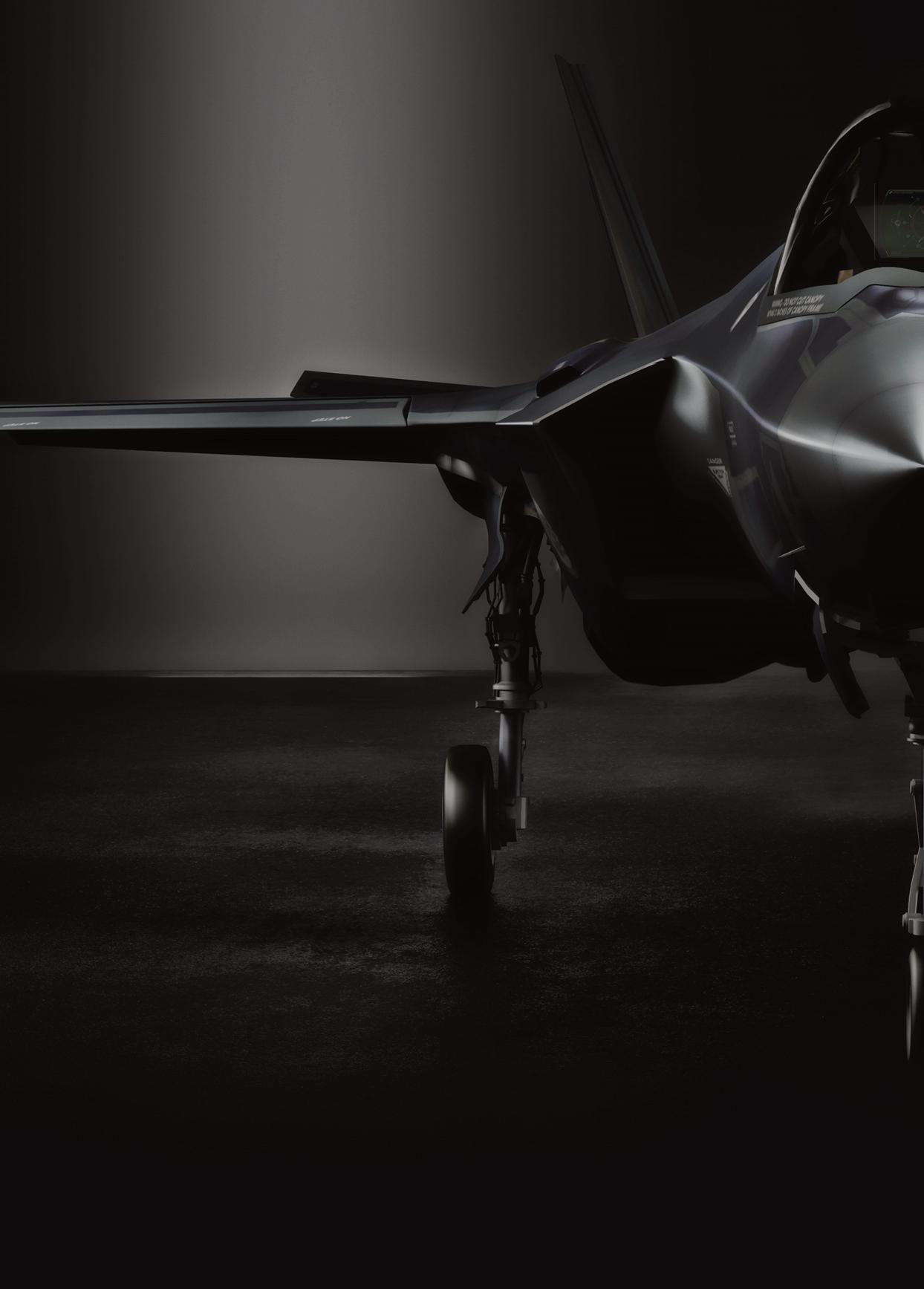
coated optical element, either by modifying transmission or by providing reflection, depending on the desired outcome.
At G&H, the experts from G&H | Artemis, our Plymouth-based facility, are the go-to team when it comes to optical coatings. With an optics heritage spanning over 200 years, their outstanding reputation is built on two main pillars. Firstly, the quality of their coated end products is recognised and appreciated globally. Having won the Queen’s Award 2022 for Enterprise, the high level of optical performance they deliver is a result of focusing on thin film coating development since the 1960s. Over time, G&H | Artemis has developed a robust manufacturing capability that frequently exceeds client expectations. Secondly, their reputation for making the impossible possible by pushing the limits of their own manufacturing equipment sets them apart. Through

experimentation and a commitment to excellence, this G&H team controls light through layers of coating better than most in the industry.
One of the key project lines at G&H | Artemis that showcases the team’s engineering expertise is the thin film coatings applied to head-up display (HUD) systems for aircraft. These HUD systems are essential for modern aviation, providing pilots with crucial flight information directly within their line of sight. The performance of these systems heavily relies on the precision of the thin film coatings used. Specifically, the green notch filter in these coatings is designed to reflect green light while transmitting other wavelengths. This selective reflection is critical because the human eye is most sensitive to green light, making it easier for pilots to read the green-illuminated symbology displayed on the HUD.
The coatings used in green notch HUD systems are engineered to provide a high degree of optical clarity and contrast, enabling clear visibility under varying lighting conditions. The thin film stack typically includes multiple layers that precisely control the reflection and transmission of specific wavelengths, ensuring that only the desired green light is reflected. This design helps to minimise glare and maximise the readability of the information displayed, which is vital for quick decision-making and situational awareness in flight.
By carefully optimising the thickness and refractive index of each layer in the coating stack, these systems achieve a sharp cutoff at the green wavelength while maintaining high transmission of other colours. This balance is crucial to avoid any colour distortion or visual discomfort for the pilot. Additionally, the coatings are designed to withstand harsh environmental conditions, including temperature fluctuations,
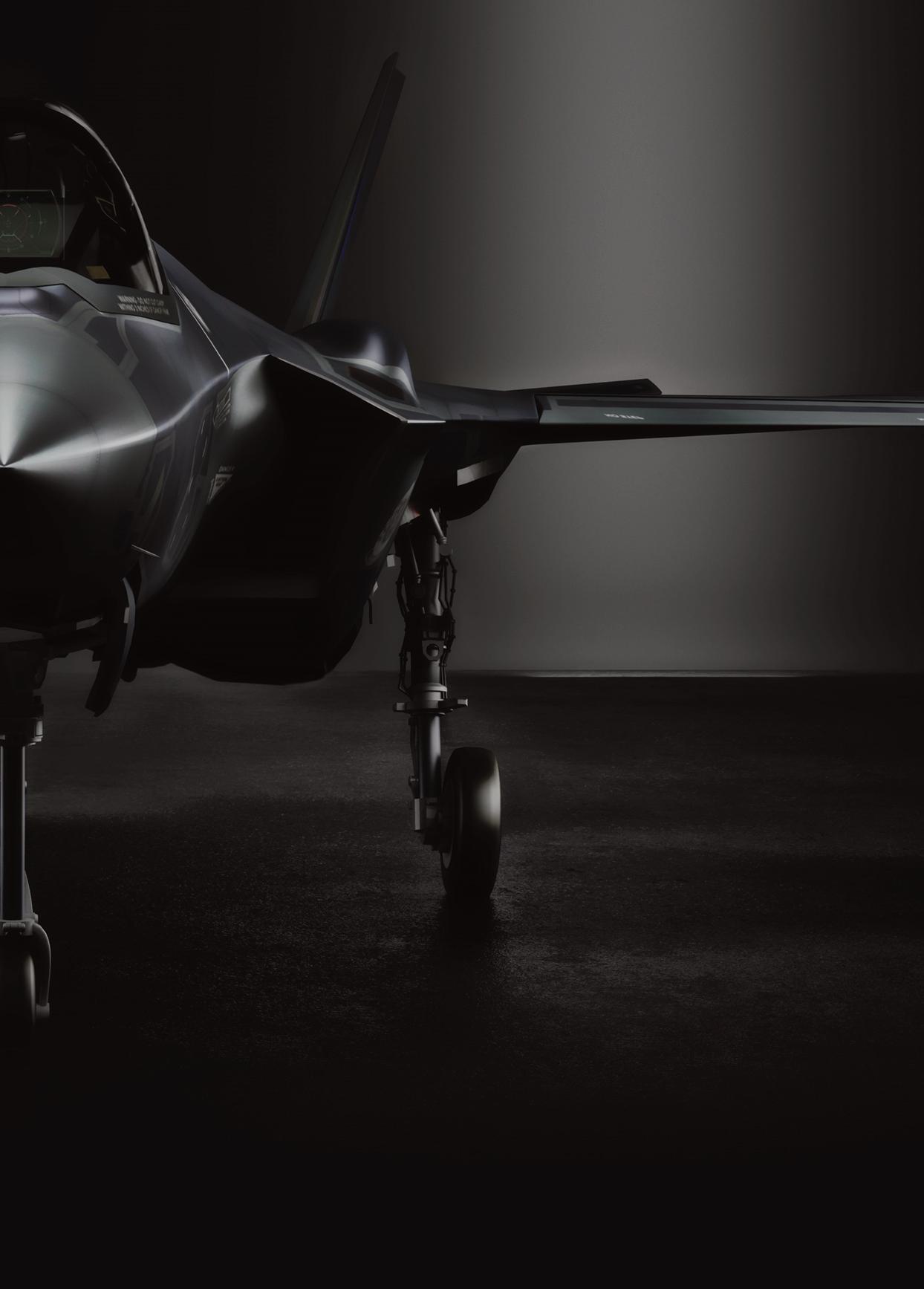
humidity, and abrasion, ensuring reliable performance over the lifetime of the aircraft. Overall, the sophisticated thin film performance of green notch HUD systems plays a vital role in enhancing pilot safety and efficiency, providing clear, real-time data without distraction.
The team at G&H | Artemis is also behind a 500-layer optical coating design used on medical safety goggles worn by doctors during eye surgery. This complex, highly effective coating solution was developed to protect doctors from direct exposure to the blue-green wavelengths emitted by the lasers used, a type of light chosen for its ability to pass through the fluid inside the eye without causing harm. The “Made in the UK” coating option allows eye care professionals around the world to use ophthalmic lasers safely, helping people see better every day. This performance has been achieved using advanced coating chamber technology.
The G&H Global Centre of Excellence for Optical Coatings in Plymouth also leads the way in other high-tech solutions, including coatings for Light Fidelity (LiFi) technology, gas detection and analysis, sighting systems, and military and maritime applications, among many other innovations.
The critical role of optical thin film coatings cannot be overstated. They form the backbone of many optical applications, enabling us to achieve a multitude of technologydriven goals. Ensuring you have the right coating for your product is crucial to the success of the final product, a lesson well understood at G&H | Artemis.
During that time, Quantum has engineered and manufactured over 1,500 systems, offering roll reduction and stability through the innovation of Zero Speed™ technology and three world patents: XT™ Extendable Fins, MAGLift™ Retractable Rotors and Dyna-Foil™ Retractable Fins.
In recent years, Quantum has developed a new FFG Stabilizer Modernization Solution that streamlines the retrofit/upgrade process for an FFG without requiring any hull penetration(s).
The FFG Modernization Solution was developed as a cost-effective alternative to support the life extension programs for military vessels fitted with Brown Brothers fixed fins. Quantum’s new system upgrade consists of the following replacements:
• Enhanced hydraulic power units
• Motor controls
• Control system
• Replacement cylinders and manifolds
• Cooling system
The upgrade is designed with intended redundancies between the hull units, whereby the system can operate on one fin, should the other fin become inoperable.
The touch screen control panel or HMI (Human Machine Interface) is visible at night and meets the USN standards for a bridge control interface. An additional HMI is provided for the EOS (Engineering Operating Space), enabling any control function to be executed, should the bridge control not be available. The main control system and roll sensor are designed to be mounted in the Switch Gear Room. All other controls are mounted in the machinery spaces.



The HMI4000 control interface HOME SCREEN allows the operator to select the stabilizer operating mode. This mode provides real-time data on the fin angle and ship speed monitoring, in addition to feedback on the readiness of the stabilizer and the HPU.
The image above shows the MANUAL MODE screen which allows the operator to use the slider controls and customize the settings as needed, while still maintaining visibility of the HOME SCREEN, when making adjustments.
To simplify the installation of the SMC4000, a cabinet is provided for mounting in the Switch Gear Room.
The operational mode of each fin can be selected independent of the other. This allows one fin to be either centered or off while the other fin can be fully active. This is a feature that was not available on the original Brown Brothers control system.

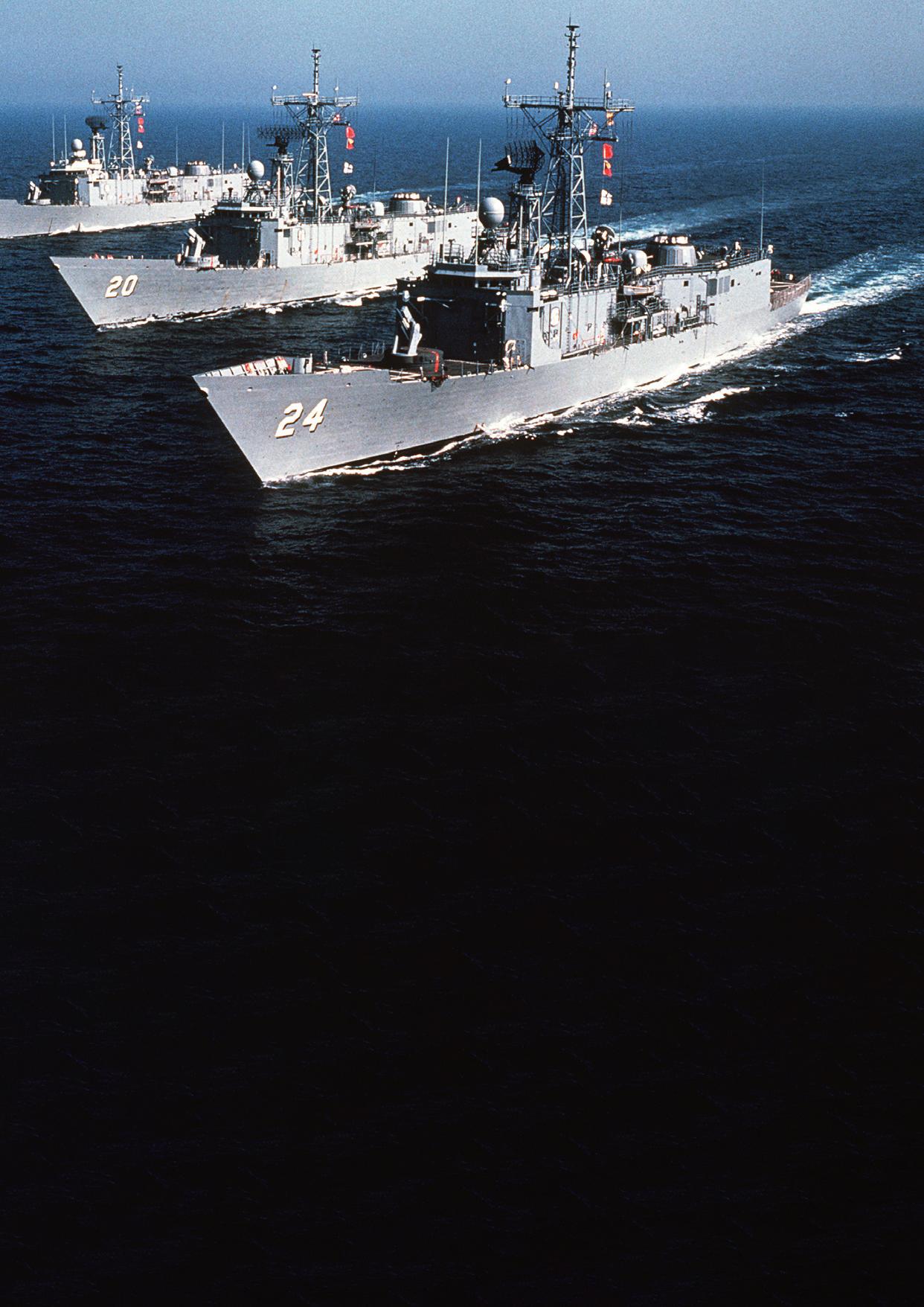
A speed log interface provides the necessary information to the control system to modulate the maximum fin angle settings at higher speeds. Conversely, it automatically centers the system when the vessel speed drops below a preset value. In the event the speed log interface fails, the system will notify the operator that the signal is lost and revert back to the center mode. At this point, only the manual mode will be available for selection, and the operator will have the ability to adjust the gain settings and maximum fin travel as required. This ensures that the operator can still use the system, but prevents the system’s auto mode from activating. Essentially it adds safety without removing functionality.
Although the fins themselves are not upgraded, the overall performance of the system is dramatically improved due to the nature of the SMC’s three term sensors. The SMC’s three term sensor is able to instantaneously measure roll rate, roll angle and roll acceleration. Unlike the Brown Brothers control, the SMC4000 has both wind heel correction and natural list compensation built in.
For ease of service and support, the control has the optional ability to be connected to the internet allowing Quantum technicians to record data, monitor system performance and make control adjustments remotely

when required. However, for security reasons, this feature is only initiated, operated and managed by onboard military personnel.
The control will monitor and record alarm data. It also logs the duration that the system runs, how many cycles each hull unit has made and the total amount of degrees each shaft has rotated. This allows the operators to predict, schedule and perform maintenance tasks with greater precision.
Each hull unit has a dedicated hydraulic power unit (HPU) carrying the designation MPU40C. The MPU40C is a direct replacement for the original power unit having very similar envelope dimensions and connection geography. To further simplify the installation, Quantum builds both a right and left hand version of the MPU40C. The cooling system is built internal to the hydraulic oil tank and can operate using the onboard raw water supply.
The HPU is self-contained and requires only the following:
• AC power to the motor
• Control and alarm connection to the SMC4000
• Two hydraulic connections to the top plate (fin unit) assembly
• Cooling water supply
Installation can be either as one piece or if space is limited, the MPU40C can be completely disassembled and reassembled on-site.
Main features of the MPU40C (HPU) are as follows:
• Oil tank integral with heat exchanger
• Variable displacement hydraulic pump
• Return, suction and pressure filtration
• Certified pressure gauges
• Alarm sensors for oil level, temperature, pressure and filter clogging
• Manual hand pump for emergency operation
• Accumulators
• Anti-vibration mounting system

The Quantum upgrade makes use of the major components from the existing Brown Brothers Fin Unit. Shaft, fin, bearing assemblies, tiller and mechanical locking mechanism will remain unchanged. The original manifold assembly will be replaced with a distribution manifold allowing for the interconnection between the cylinders and the oil supply from the power unit. The main cylinders are also replaced with a custom designed Quantum cylinder. Cylinders are ABS approved.
Fin position feedback and limit switches will be replaced with a Quantum custom fin angle sensor assembly. All of the upgraded components will make use of the existing mounting attachments. No welding will be required. Upgrades to the Fin Unit as noted above can be accomplished without docking the vessel.
All the replacement hardware is either nickel plated, anodized or painted for durability under severe conditions.
As with all Quantum power units the MPU40C has undergone Noise and Vibration Testing. Both for structure-born and air-born characteristics under various load conditions.
The Quantum Modernization upgrade has been successfully completed and delivered to a U.S. Allied Nation. The performance results exceeded expectations.
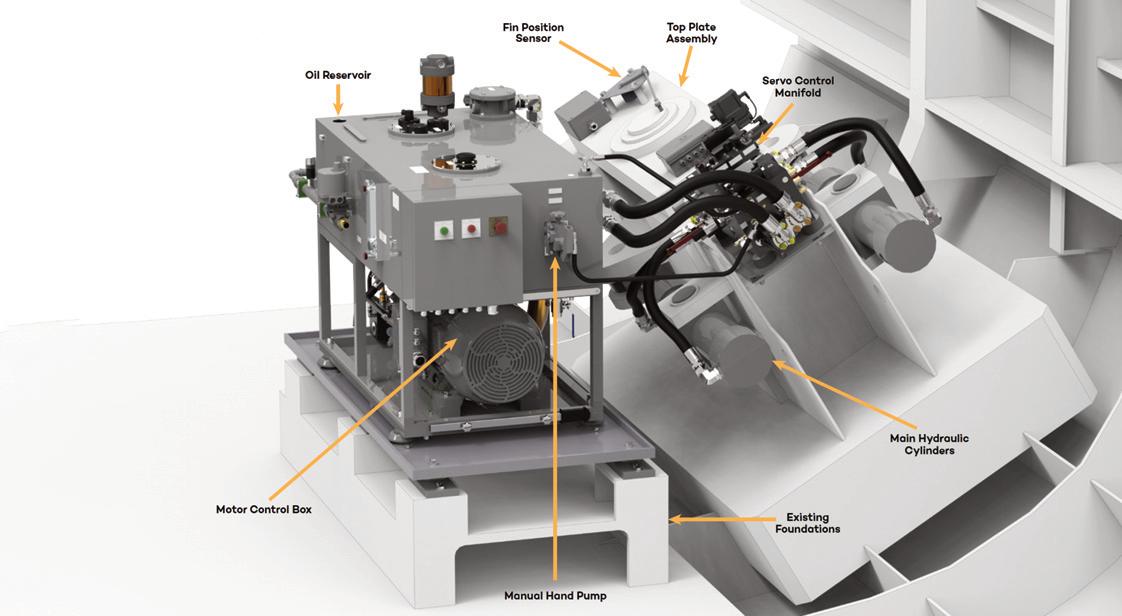












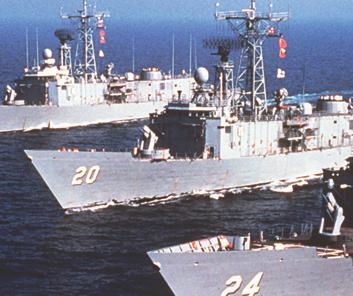





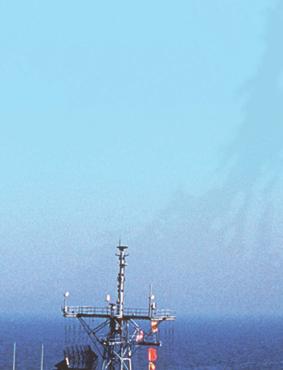




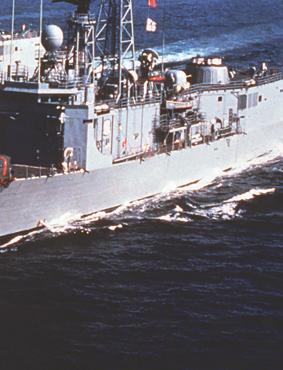



















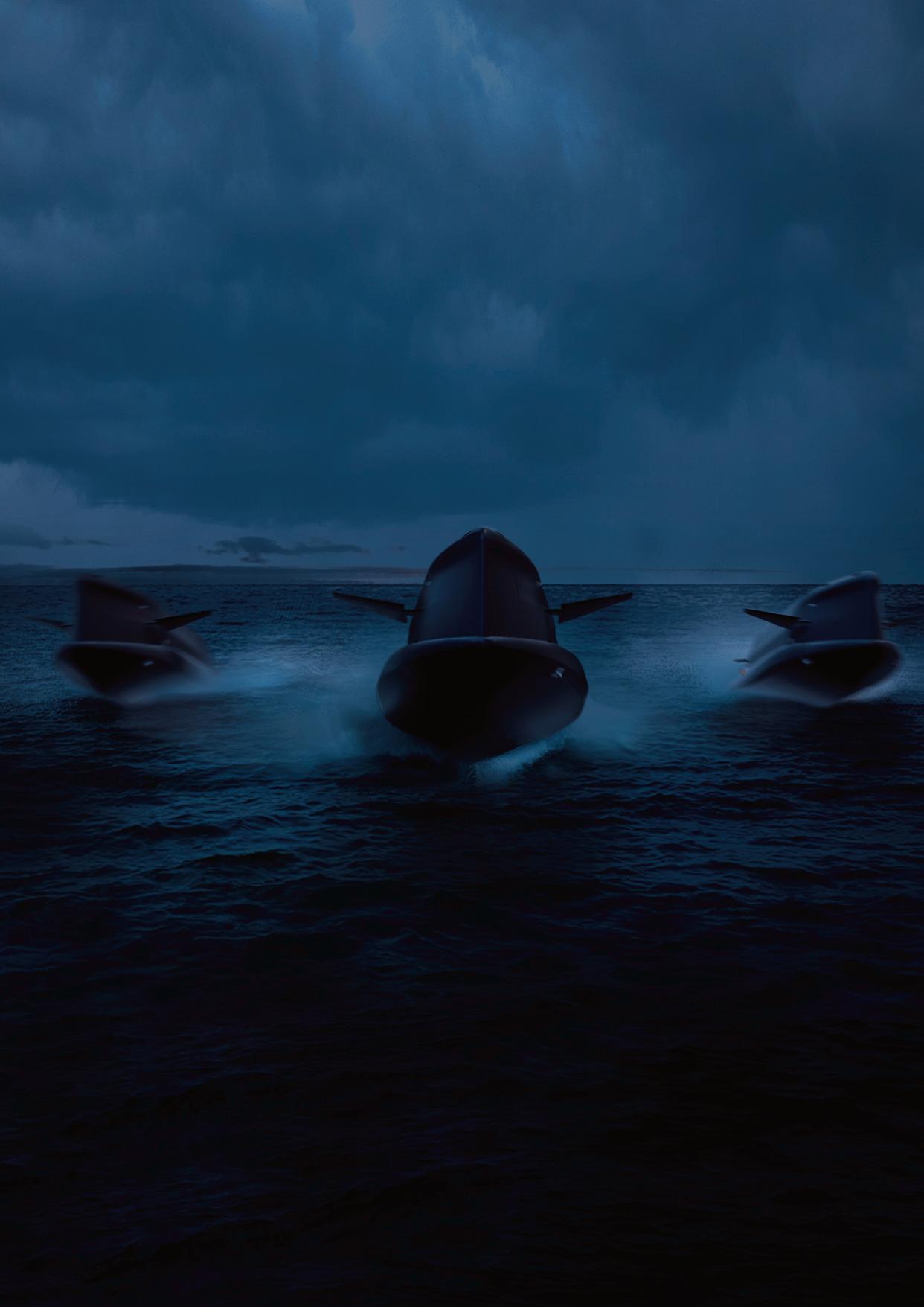
Tactical Diving Vehicles (TDVs) act as force multipliers for maritime Special Operations Forces (SOF), greatly enhancing operational capability.
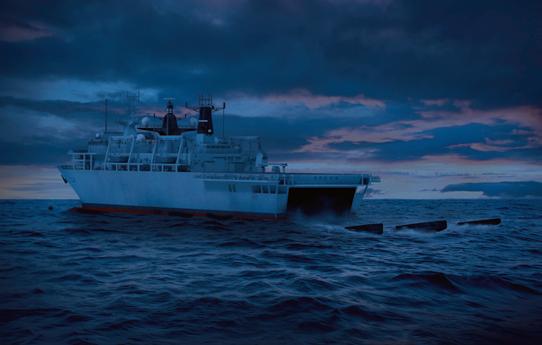
With a re-focus on the maritime amongst NATO and her allies, as the littoral operational battlespace evolves to meet an increasing range of threats, the relevance of TDVs has never been more apparent.
As we assess the tactical and strategic landscape, TDVs are increasingly seen as a vital component of current and future SOF littoral and underwater manoeuvre operations. Such vehicles bridge critical capability gaps, enhance operational capability whilst increasing mission success probability when operating in complex, high threat littoral environments.
Multi-mode TDVs capable of transiting on the surface, semi-submerged and sub-surface, in particular offer SOF commanders a flexible and adaptable platform that can be configured for a wide range of operational objectives. Central to this adaptability is the “integrate and extend” concept, where the base TDV platform can be enhanced by integrating advanced technologies that improve both mission effectiveness and diver safety, extending operational relevance and utility across various scenarios.
For example, the integration of biometric monitoring systems allows for real-time health assessments of divers, feeding data back to a central


on-board diver ‘data bus’. This can also enhance underwater mission communication and rehearsal, providing teams with an integrated picture of both environmental conditions and diver status. This enables commanders to quickly overlay, mesh, and enrich the mission reconnaissance data with situational awareness, giving the team on board accurate and up-to-date information.
This integrated approach enhances the ability for TDVs to adapt to diverse mission profiles, from Intelligence, Surveillance, Target Acquisition, and Reconnaissance (ISTAR) operations to stand-off attacks and diver delivery. For example, a concept operation could involve a three vehicle Carrier Seal platoon, where each TDV is optimised for specialist mission objectives: one vehicle focusing on ISTAR, deploying Autonomous Underwater Vehicles (AUVs) to gather intelligence; another configured for stand-off attack, equipped for precision strikes; and the third serving as a diver delivery vehicle. The integration of missioncritical data and diver safety systems across these platforms ensures that each vehicle can operate effectively within a larger, coordinated mission. This level of mission specialisation makes multi-mode TDVs an invaluable maritime SOF asset.
As the UK Royal Navy / Royal Marine Commandos and other allied amphibious forces re-assess their small craft requirements, TDVs emerge as a viable solution for both discrete and covert littoral operations. For specialist amphibious reconnaissance & raiding forces that do not have a tactical diving capability, the ability to operate in a semi-submerged mode significantly reduces the vehicle’s signature. This provides a means of discrete infiltration and exfiltration when in high threat areas not offered by conventional surface raiding craft, thus reducing the probability of mission compromise.
Besides operability with larger insertion / extraction support platforms, the long-range capability of TDVs such as the JFD Carrier Seal, offer SOF units an independent organic over-the-horizon capability. This not only increases operational flexibility at a unit level, but also enables the employment of multi-mode TDVs without exposing high-value assets such as submarines and surface ships, to unnecessary risk. Moreover, for navies that lack submarines capable of supporting TDV operations, TDVs offer a cost-effective alternative, enabling maritime SOF the ability to cross an expanding ‘water gap’ and conduct operations that would otherwise be beyond their reach. The versatility and relatively low cost of TDVs compared to larger platforms make them an attractive option for maritime security providing rapid response, coastal defence, and critical national infrastructure (CNI) protection.
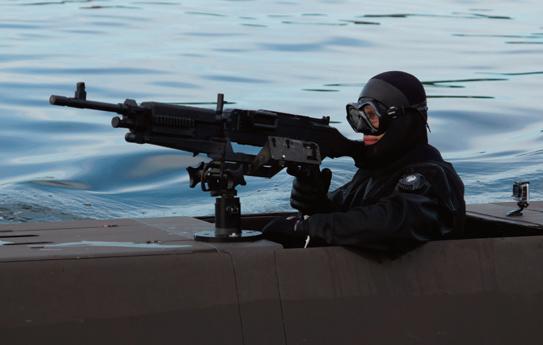
The mission configurability and specialisation concept is further reinforced when embracing emerging technologies such as manned and unmanned systems. Integrating diver monitoring technologies and advanced life support systems will further enhance operational effectiveness and safety. This includes the integration of onboard data systems that provide a unified communication and information platform for divers, enhancing both mission planning and real-time operational adjustments. As the strategic environment shifts, JFD TDVs will increasingly incorporate these innovations, ensuring that they remain at the forefront of maritime SOF underwater operations.
Strategic defence reviews highlight a growing need for adaptability and reconfigurability in military assets. In this context, multi-mode TDVs provide a solution that not only meets current operational demands but also anticipates future requirements. Their ability to operate independently in the littoral of extended distances, deliver over-thehorizon capabilities and provide robust environmental protection for Tactical Divers when submerged, sets them apart from the traditional Swimmer Delivery Vehicle (SDV) and other maritime small craft platforms.
As the underwater battlespace continues to evolve, TDVs play a crucial role in shaping the future of maritime security. By embracing emerging technologies and maintaining a focus on adaptability, these platforms remain integral to the success of maritime SOF littoral operations worldwide.

Original Equipment Manufacturers (OEMs) around the world rely on Cummins products to help their equipment exceed performance expectations, and military equipment is no exception.

Since World War 1, Cummins has been a critical partner in supporting military operations, consistently earning top marks for durability, dependability, and performance.
Cummins supplies powertrain, drivetrain, and power generation solutions to defence forces worldwide, with thousands of Cumminspowered vehicles and power generation units in active service.
By starting with commercial off-the-shelf (COTS) technology and tailoring it to meet exact specifications, customers gain advantages in pricing, reliability, real-time data access, and improved global delivery times.
Cummins offers a wide range of off-the-shelf engines, from 74 to 1000 hp, the industry’s most comprehensive portfolio of drivetrain components as well as generators for various military applications. As vehicles face new requirements for more power density and improved fuel economy, Cummins easily adapts. By leveraging solutions that have already proven themselves in both military and commercial applications, Cummins engineers can customize solutions to meet specific defence application requirements.
Cummins integrated power delivers choice, advances sustainability, enhances the customer experience, and drives innovation. The commitment is to empower customers with top-tier options that meet mission needs through a continually expanded portfolio and partnerships. Complete powertrain solutions are now available—from engine to transmission to axles—ensuring every component works seamlessly together.
Cummins' components business now inclusive of the largest portfolio of drivetrain and braking systems in the industry, thanks to the inclusion of the Meritor product lines, ensures Cummins is positioned as a true platform solutions provider for integrated powertrain systems. With Cummins' integrated power, customers can trust that their entire powertrain is supported and that their issues can be resolved.
Since the 1970s, Cummins has been a leader in developing engine technologies for the U.S. Army, building on a legacy that began with WWII products. Advanced test cells and rigorous on- and off-road testing ensure the highest quality and performance of Cummins products. When customers need to cover ground, Cummins engines provide a tactical advantage with greater range and efficiency. Whether powering armoured fighting vehicles (AFVs), armoured personnel carriers (APCs), tactical trucks, heavy artillery, missile launchers, or unmanned ground vehicles (UGVs), Cummins leverages 105 years of expertise in R&D (Research and Development) (Research and Development), engineering,

system integration, and technical guidance. The company offers solutions for diverse applications, locations, and conditions, supported by comprehensive service and support.
Cummins provides a comprehensive portfolio of technologies to ensure engine availability while meeting the latest emissions regulations. The engines are also capable of operating with a wide range of military fuels, including NATO F-34 and F-54, JET A-1, JP-8, AVTUR, F24, and Hydrotreated Vegetable Oil (HVO).
Continuous innovation ensures the delivery of optimal solutions to meet customers' needs.
Whatever the objective, Cummins provides dependable and innovative power solutions to achieve it. For example, the Advanced Combat Engine (ACE) delivers 2,424 lb-ft of torque with just 14.3 liters of displacement. ACE also features innovative Opposed Piston (OP) technology and an advanced two-stroke diesel combustion system with pistons working in opposite reciprocating action. This design results in high power-to-weight and power-to-size ratios, as well as low heat rejection, making ACE ideal for combat vehicles with limited space for engine systems. Additionally, ACE offers improvements in fuel economy, cooling efficiency, and increased vehicle range.
The compact four-cylinder ACE incorporates advanced technologies not currently found in diesel combat engines and is designed for infantry fighting vehicles and main battle tanks. Its modular design allows for configurations in three-cylinder and six-cylinder arrangements,


delivering power from 750 to 1,500 horsepower.
Engineered to operate in full desert conditions with all specified military fuels, ACE also serves as a potential facilitator for hybrid electric powertrains in next-generation combat vehicles. Scheduled for production in late 2027, ACE’s adaptability extends beyond military applications to commercial uses requiring high power in constrained spaces.
Shipbuilders and naval operations around the globe depend on Cummins for continuous improvement and innovation. Offering a broad range of power from 4.5 to 95 liters—including propulsion engines, auxiliary engines, and marine generators—Cummins provides solutions that meet customer needs and exceed military and security requirements.
Many of Cummins' marine engines are approved by major marine classification societies worldwide, such as the American Bureau of Shipping. Notable features include independent safety and alarm systems, dual-walled fuel lines, and duplex filtration.
In 2004, Cummins pioneered diesel electric propulsion using AvK® and Stamford® alternators. Today, over one thousand Cummins diesel electric generators power Platform Supply Vessels and Offshore Service Vessels globally.
All Cummins marine engines can run on JP-5, JP-8, kerosene, and biodiesel. With a history of delivering reliable, durable diesel engines to
the marine market since 1919, Cummins continues to push the boundaries of innovation.
Receive support at major ports on every continent through the Cummins distributor network — anytime day or night. With Cummins-powered vessels operating in every time zone, get unmatched access to technical experts around the clock and attain parts worldwide through three major distribution centers in Memphis, Singapore, and Belgium.
As today's defence systems become more agile and sophisticated, there is a greater reliance on associated power generation solutions. From Basic Expeditionary Airfield Resources to Advanced Medium Mobile Power Sources (AMMPS), Cummins delivers the military experience and technical capabilities needed to meet demanding performance, logistics and mobile power requirements.
From powering command centers, mobile hospitals, and infrastructure at forward operating bases to missile defence and directed weapon systems, Cummins Power Generation provides the expertise and innovation to keep your mission on track — anywhere in the world.
The Rugged Mobile Power (RMP) Unit is a version of the original AMMPS generator, designed for use by both US and non-US militaries in tactical environments and beyond. It offers significant operational benefits across all military services, including a reduced logistics footprint,

enhanced unit mobility and transportability, and lower operations and maintenance (O&M) costs. The RMP line includes generator sets ranging from 5 kW to 60 kW in both 50/60 Hz and 400 Hz.
These generators are versatile enough to support microgrid solutions without requiring external control devices. Additionally, service personnel can connect up to 6 units in parallel to create a network configuration.
The RMP products are backed by deep defence experience and technical expertise.
In August 2022, Cummins acquired Meritor, Inc. The integration of Meritor’s people, technology, and capabilities has positioned Cummins as one of the few companies offering fully integrated powertrain solutions. Now operating as Cummins Drivetrain and Braking Systems (CDBS) within the Components segment, the unit continues to provide Meritor-branded solutions across both combustion and electric power applications.
Meritor-branded solutions deliver innovative products with superior performance, efficiency, and reliability, solidifying Cummins as a leading global supplier of drivetrain, mobility, braking, and aftermarket solutions for commercial vehicles and industrial markets. Serving diverse sectors, including commercial truck, trailer, off-highway, defence, specialty, and
aftermarket, Cummins excels in designing, engineering, and manufacturing high-performance drivetrain solutions that ensure mobility and safety for tactical-wheeled vehicles worldwide.
Engineering teams prioritize customer needs, ensuring that end-user requirements drive the engineering process. Ongoing efforts to redefine the global defence portfolio around customer demands underscore the company’s unwavering commitment.
Meritor’s ProTec modular solutions for tactical vehicles deliver high performance, efficiency, and reliability. The ProTec Independent Suspension Axle Systems (ISAS), paired with durable ProTec All-Wheel Drive Beam Axles, offer the dependability required on the battlefield. The ProTec ISAS family provides a two-tiered approach to protecting military personnel while supporting mission success. The weightefficient, payload-enhancing design increases vehicle capacity for additional armour in combat environments. The strong yet lightweight differential carrier ensures durability without compromising weight savings. ISAS solutions are scalable for light-, medium-, and heavy-duty tactical wheeled vehicles.
Optimized for the military market, ProTec solutions meet stringent specifications, performance requirements, and sustainability targets. For over 110 years, Meritor-brand axles have been the choice of the U.S. Army for 2.5- and 5-ton vehicles. The ProTec All-Wheel Drive Beam Axles provide the range and performance needed in military applications.

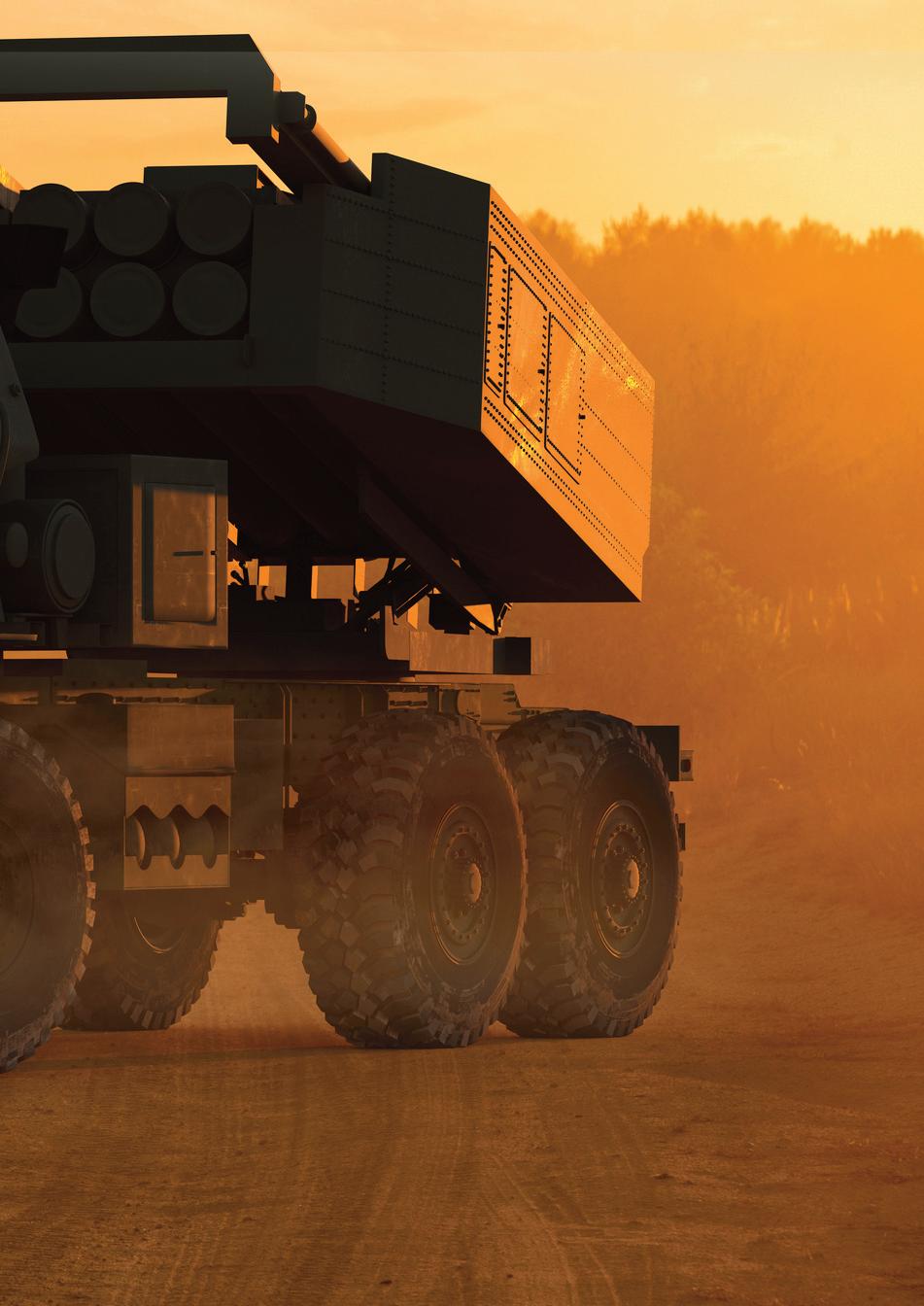
Now, Cummins offers more than just engines for defence vehicles. With a wide range of industry-leading drivetrain systems, including axles, brakes, suspensions, drivelines, and aftermarket parts, Cummins brings its commercial and industrial expertise to the military market.
Cummins Care is a solutions center dedicated to preventing issues while providing quick and accurate answers. Its mission is to elevate customer service by being available 24/7/365, offering faster and more personalized attention with rapid results.
From the moment a customer engages with Cummins Care, they gain access to experts with specialized skills, experience, and in-depth knowledge tailored to military equipment needs. Additional support is available through regional and language-specific experts and resources at care.cummins.com.
Cummins ensures that military equipment remains mission-ready by delivering a seamless support experience from supply lines to battle lines, on land and at sea.
From power range and innovation to world-leading reliability and electronic integration, Cummins is committed to ensuring military vehicles perform with distinction, ready for action 24/7. Discover how Cummins can power your next mission:
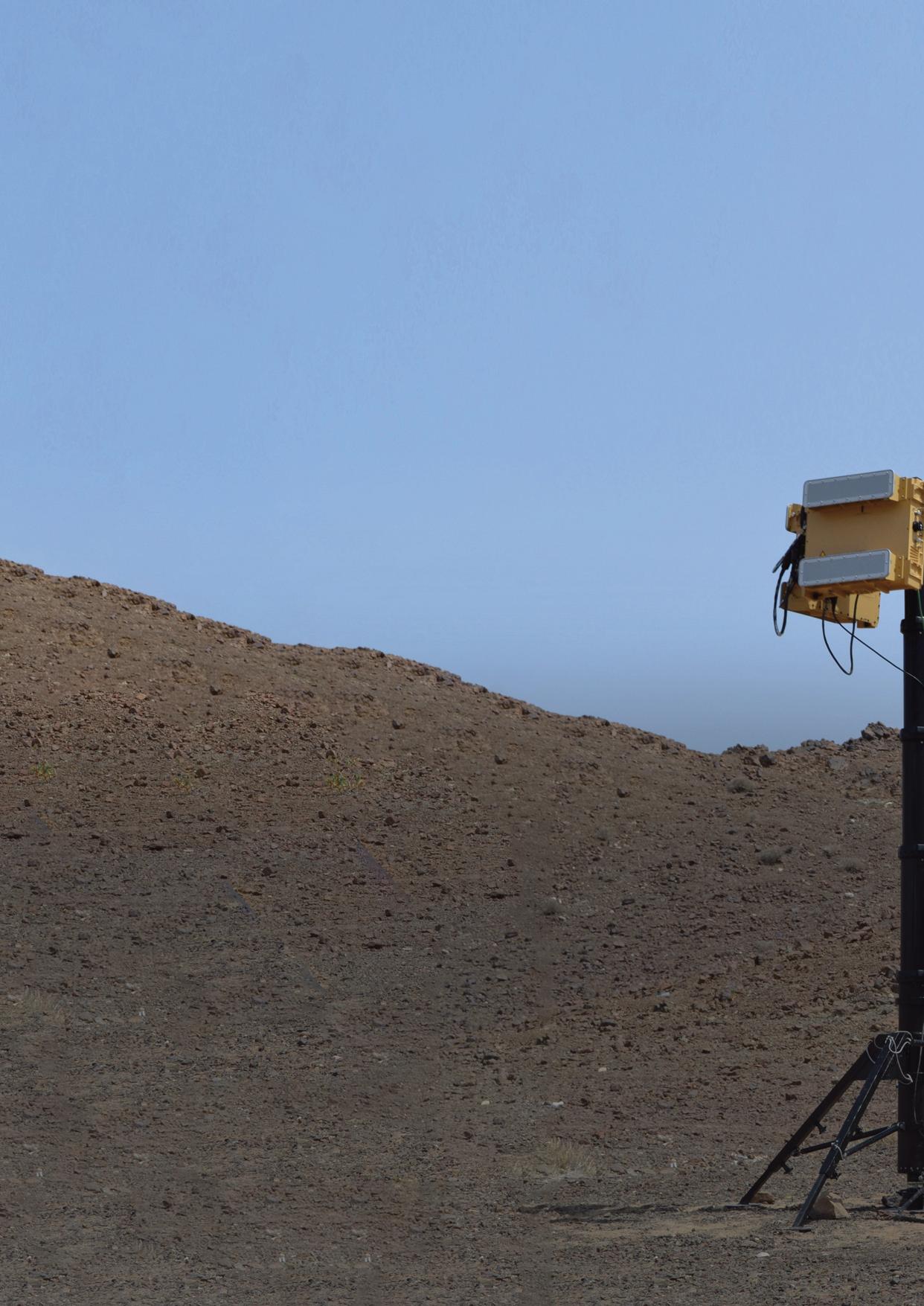

The Will-Burt Company is pleased to announce the acquisition of Clark Masts Systems, LTD. Clark is known globally for their fast-erecting, high-quality, and innovative field and vehicle deployed telescopic pneumatic mast systems.
“We are pleased to add the high-performance Clark Mast range of mobile pneumatic telescopic mast products to the Will-Burt portfolio,” stated Richard Lewin, CEO and President of The Will-Burt Company. “The Clark Mast brand is well-known

around the world for delivering high-quality products backed by exemplary service. The Will-Burt and Clark organizations have great mutual respect for one another and similar cultural beliefs that we expect will deliver increased value to our customers.”
Clark Masts, first introduced in 1954 by Alec Clark, are lightweight, quick-erecting field masts that are highly versatile with commercial and defense variations. Clark also offers a value range of larger telescopic pneumatic masts that can be vehicle or field mounted and will complement the existing Will-Burt range of pneumatic masts.
Simon Bennett, Managing Director of Clark Masts comments, “I am delighted that we were able to bring these two great companies together. We have worked as friendly competitors for years and we have a mutual admiration for one another. It pleases me to know that the Clark brand will continue as part of the Will-Burt Company portfolio of world-class elevation products.”
Clark production operations will continue to be located on the Isle of Wight, England and Simon Bennett will assume the role of
General Manager of the operation to assure a smooth and successful transition. The business financial and accounting functions will be merged with Will-Burt UK located in Alton, Hampshire, England. Customers and suppliers are welcome to contact either Will-Burt or Clark personnel in their region of the world to receive prompt attention.
A few key product highlights from Clark Masts:
The QT Range of lightweight telescopic pneumatic masts are designed to be portable and erected quickly where they are required. Available in a wide range of heights from 3m to 15m and in a range of sizes to suit varying headloads. It is a highly versatile system capable of being field mounted using a folding tripod stand or field guy set. Equally at home when mounted to a vehicle or shelter, the QT Range is designed to be versatile. Made from high strength 16 swg aluminium tube, to save weight, the QT Range is non keyed and each section is fitted with a locking collar.


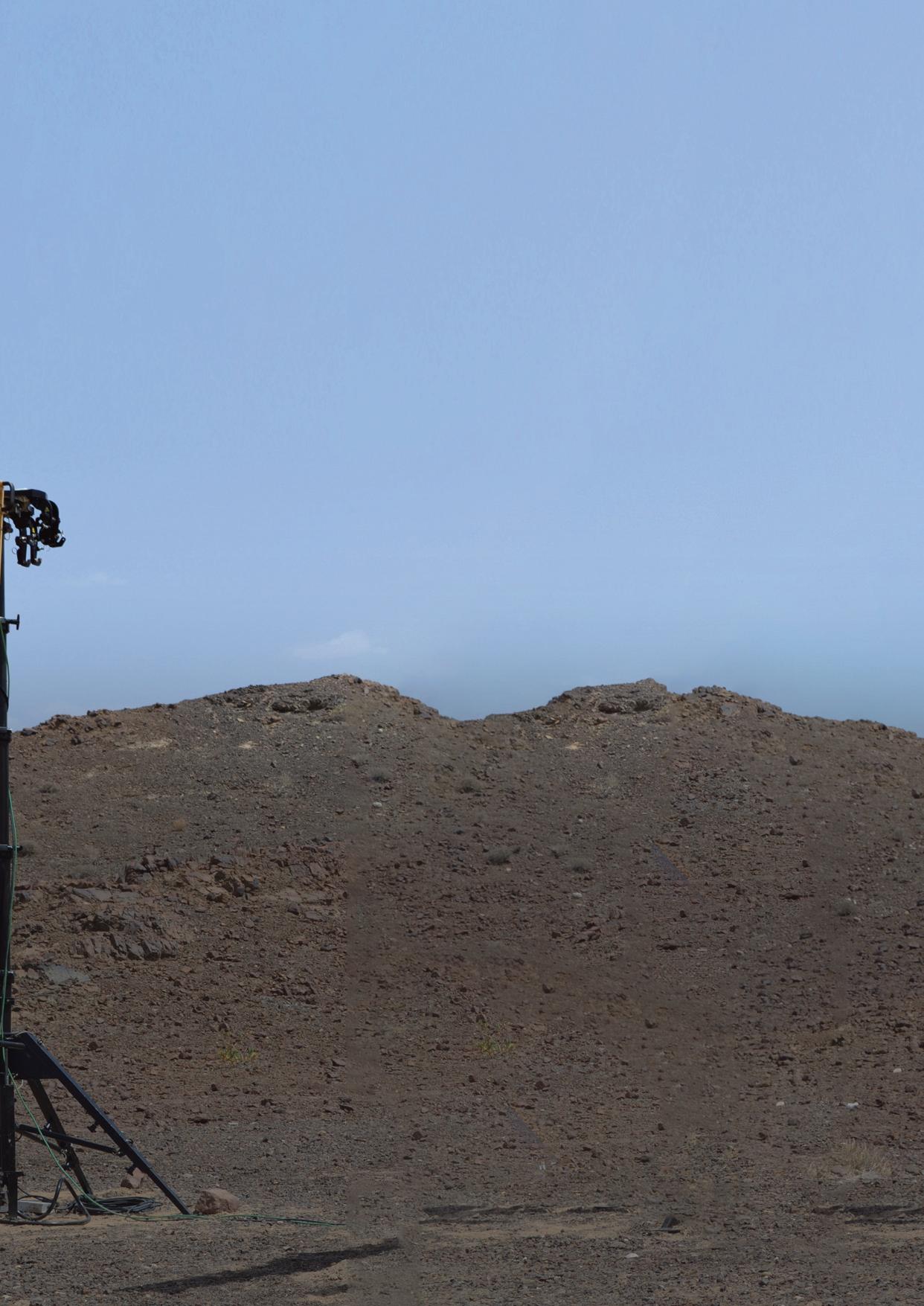
The Clark Masts Quad Pod is a rugged, lightweight torsionally stable platform for long range EO, laser and radar equipment. Adjustable legs can cope with a ground slope of up to 12 degrees and integral bubble level ensures accurate deployment. No tools are required for assembly, and it is deployed by 2 people in under 2 minutes.

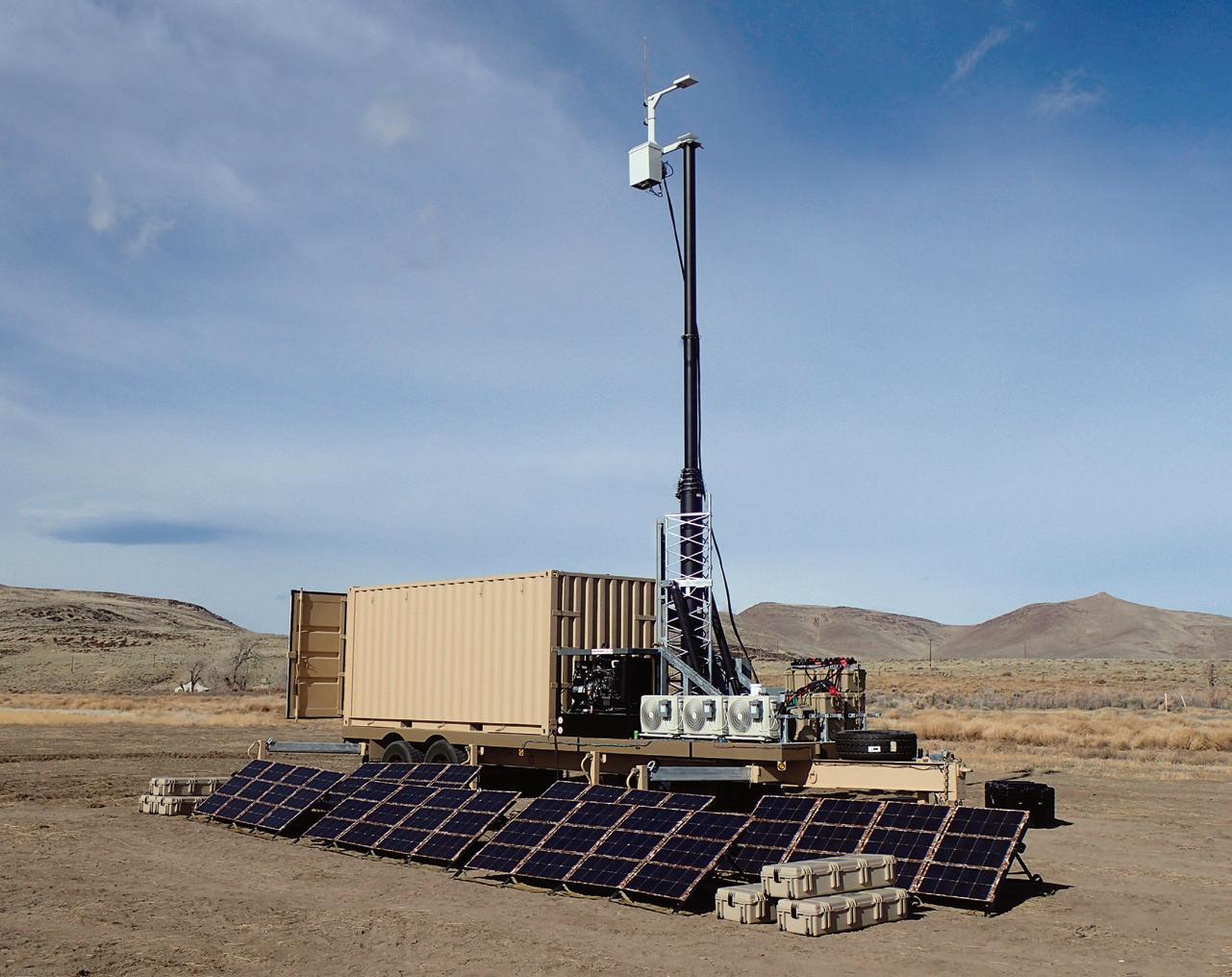
Designed and manufactured to meet the challenges of the modern battle昀eld and exceed your expectations. Our mobile telescopic masts, towers, pan and tilt positioners and integrated trailer systems ensure that sensors and antennas will achieve their maximum performance potential under the most demanding circumstances.
Visit us at the AUSA Annual Meeting, Booth 3139, to learn more about our innovative elevation products, created by leading edge global design and ISO 9001:2015 quality system certi昀ed manufacturing. Will-Burt is headquartered in the USA with locations and support around the globe and is 100% employee-owned.
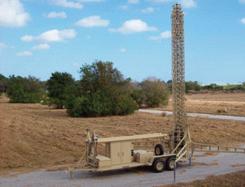
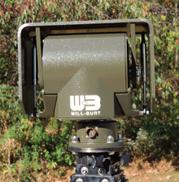
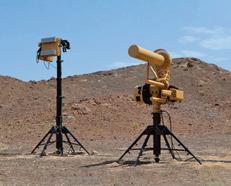




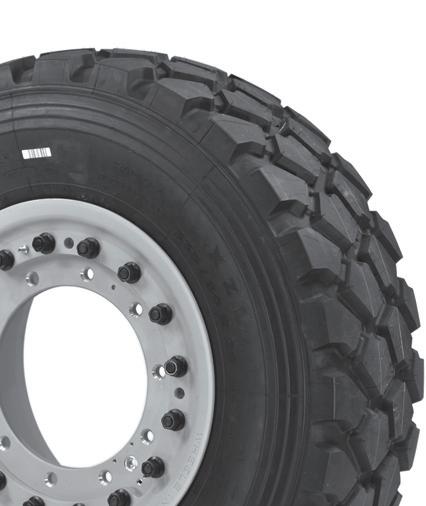

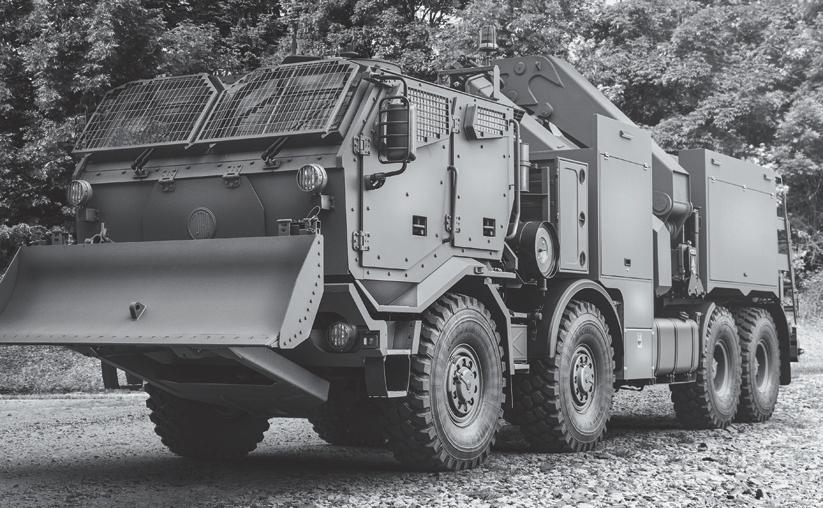




Calian has been delivering high-readiness collective training since 1996 for the Canadian Armed Forces (CAF), and for over a decade for NATO headquarters, training centres and NATO member nations.
Relying on simulation based training prepares militaries for the challenges they will face on operations by presenting military personnel and units with a realistic, immersive experience. By presenting the latest lessons-learned from contemporary battlefields and operations, simulation-based training provides an accurate reflection of the challenges military units will face. This “train-as-you-fight” experience provides high-value training with maximum realism.
Calian continues to win work with customers in Canada and in NATO across a broad range of specializations and subject matter areas. With almost 30 years of experience delivering simulation-based training, we leverage the experience and expertise of our team with class-leading technology to deliver no-fail solutions for our military customers. In pursuit of Calian’s vision to diversify the range of training solutions and offerings we provide, we have expanded into chemical, biological, radiological and nuclear (CBRN), and medical and dental training. We are also providing operational support to safeguard communications networks.
In March 2024, Calian won contracts with NATO Supreme Headquarters Allied Powers Europe (SHAPE) to provide comprehensive support to the development of Supreme Allied Commander Europe’s (SACEUR) Chemical, Biological, Radiological and Nuclear (CBRN) exercise program.
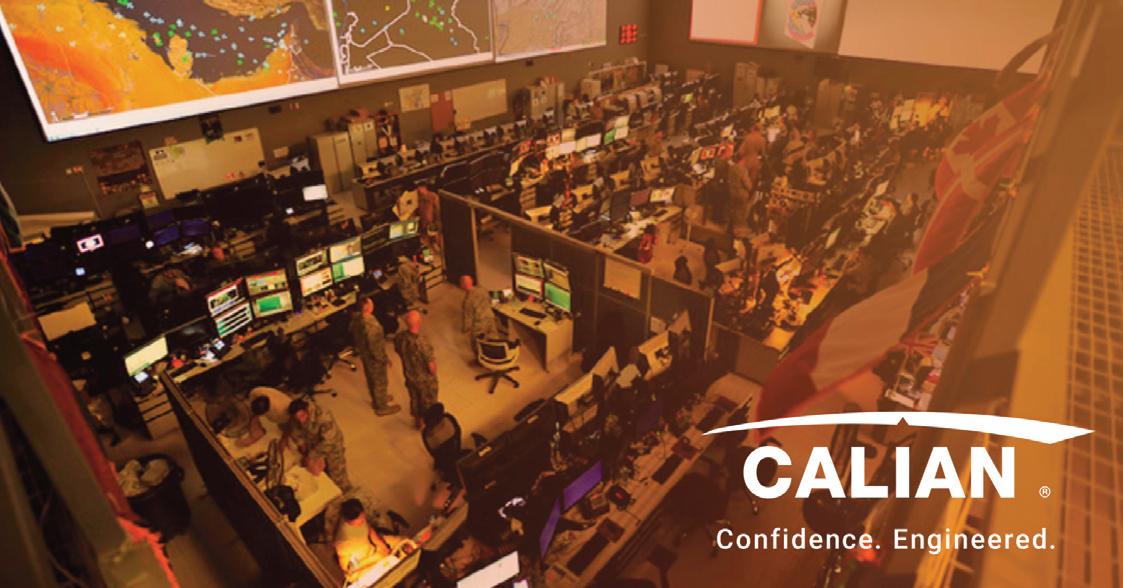

This work will include development, delivery, evaluation and training support for a holistic exercise training program to evaluate staff across a range of CBRN mission-essential tasks.
This work relies on Calian’s decades-long legacy of delivering nuclear and CBRN exercise planning and delivery through our subject matter experts. It also builds on our track record of supporting NATO training delivery through the Joint Warfare Centre (JWC) Allied Command Transformation and Allied Command Operations, representing a meaningful addition to our overall solutions.
In April, Calian won a contract worth up to $23 million to deliver heath services training to the Canadian Forces Health Services Group (CFHSG). This work will deliver administrative, courseware development and instructional delivery for medical and dental services at military bases and installations across Canada. Specific services will include environmental medicine, engineering and evaluation of human performance and protective systems, combat medical simulation, operational medicine and dental practices. This work builds on Calian’s legacy of providing training for military customers, and will enhance training throughput for medical and dental training.
In May 2024, Calian re-won a $10M contract to provide training and support services to the Canadian Defence Academy (CDA) and the Military Personnel Generation Group (MPG). Calian is delivering comprehensive academic and development support, including training support through courseware development and instructional support at Canadian Armed Force (CAF) bases and installations. These contracts provide direct support for individual training to develop basic and advanced skills throughout an individual’s military career. MPG was first won by Calian in 2010 and has provided training to thousands of CAF personnel.
Also in May, Calian won a contract for up to $90M through General Dynamics Mission Systems – Canada (GDMS-C) to enhance the Canadian Army’s capabilities through advanced land command, control, communication, computers, intelligence, surveillance and reconnaissance systems (C4ISR). This work will provide technical software services to improve the Canadian Army’s ability to protect communications and information systems for all type of operations, enhancing the resilience of C4ISR capabilities for the Army, which is increasingly operating in environments with cyber and electronic attacks.
Calian expanded its European footprint with two military training acquisitions in 2020. These acquisitions brought new capabilities and expertise, and standing engagements with NATO training centres. Calian is sustaining that momentum, and in May 2024 completed the acquisition of UK-based Mabway.
Mabway is a recognized leader in managing large-scale defence role-playing environments where human role-players interact with the military training audience in complex, challenging, real-world environments. Mabway also has deep experience and expertise in providing technical engineering education for naval and maritime customers. Working with the British Army since 2012, Mabway has multiple offices in the UK and a workforce of over 1,000 staff comprising ex-military and civilian staff working in both permanent and contract roles.
Mabway brings a strong solution set to military training customers, enhancing the complexity and realism of live training exercises through role-players. The live simulation capability complements the constructive and virtual simulation training capabilities that Calian delivers for military customers in Canada and around the world, providing more delivery options for large, complex exercises. This acquisition builds on Calian’s existing presence in the UK and Europe, enabling service delivery for a wider range of customers. This acquisition enhances Calian’s position in the defence market globally to support operational readiness.
With decades of experience delivering military training for the Canadian Armed Forces (CAF) and NATO partners, Calian recently won a new contract to deliver training in Latvia.
Calian will support exercise development and delivery for Canadian and NATO forces deployed to Latvia, including delivery of exercise scripting and exercise control (EXCON) support to design, develop, and deliver multinational division and brigade command post exercises as part of EX KNIGHT NAMEJS 2024. Calian’s delivery team will be working across five different functional areas to develop and deliver a cross-domain training experience that reflects the complexity of the Baltic operating environment. With land borders, maritime and littoral components, air corridors, and cyber and informational aspects, the Baltic operating environment provides many challenges and opportunities to exercise the multinational team. Calian’s subject matter expert delivery team is working with NATO-standard exercise development tools for this exercise.
Calian has been providing training to allies and partners in NATO and Europe for over a decade. In 2021, Calian delivered training to the Armed Forces of Ukraine as part of Canada’s commitment to Ukraine under Operation UNIFIER. UNIFIER is a Canadian mission that supports Ukraine’s military training, professionalization, and capacity building across a range of tasks and specializations. Calian’s contribution to UNIFIER focused on developing and delivering curriculum for strategic defence planning, including investment planning, budgeting, business case development, and human resource and infrastructure management. This training was delivered to sustain long-term force development and modernization for the Armed Forces of Ukraine.
Canada has sustained its military commitment to a multinational NATO presence in Latvia since 2017 as part of the Forward Presence Battle Group. Canada leads the multinational Battle Group in collaboration with other NATO nations and Latvia. Deterrence in the Baltics is important for NATO, guarding against hostile acts on the Baltic flank. The training delivered through this project will build and sustain the readiness of the NATO Battle Group in Latvia.
Technology is at the centre of everything we do for training delivery. We are constantly expanding the capability of our solutions to meet the evolving needs of NATO and its member countries. We deliver training solutions across the spectrum of conflict, from non-combatant evacuation operations (NEO) and peace support operations, to counterinsurgency, high-intensity conventional operations, nuclear deterrence exercises and wargames to support senior-level decisionmaking about capability planning, and force posture. Our subject matter experts span the full range of the combined arms and joint-force team, including manoeuvre, air defence, aviation, ISR, logistics, civilian policing and more.
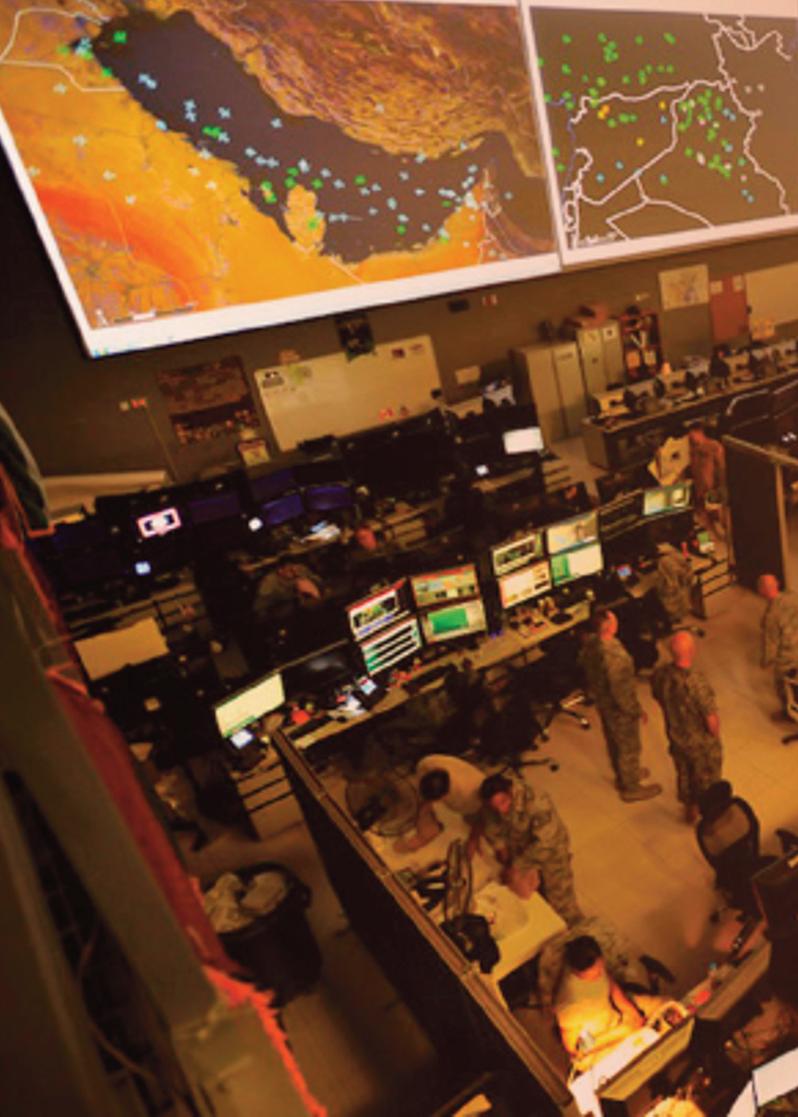
To design, develop and delivery military training exercises, Calian relies on MaestroEDE. Developed by Calian, MaestroEDE provides a single synthetic environment for exercise designers, planners and developers to turn exercise concepts and objectives into turn-key training exercises. MaestroEDE streamlines planning, connects objectives to actions and outcomes, and centralizes all exercise traffic in a single platform with a user-friendly interface. MaestroEDE drives exercise development and delivery, providing traceability throughout the process to allows exercise controllers to deliver a meaningful and valuable training experience. Recently, Calian developed an AI-Chatbot functionality within MaestroEDE to automate the development of exercise content for any exercise. The AI-Chatbot develops draft content to meet the objectives of the exercise, which human operators then verify to ensure it meets the training needs and can be used in an exercise. This AI-enabled process allows months of planning to be reduced to a few weeks. Accelerating content generation is a game-changer for developing large, complex military training exercises and brings a level of agility and flexibility for development that human operators alone cannot match.
For joint and multi-national exercises, Calian delivers an interoperability solution that allows any exercise participant to be integrated into a common synthetic environment. Many NATO members have proprietary simulation and operational systems, making interoperability a challenge; and even more challenging as the number of participants increases. The Calian Virtual Command and Control Interface (VCCI) enables interoperability and the delivery of a single synthetic environment for training. VCCI was purpose built, and is continuously updated to meet the changing needs of NATO and NATO members. VCCI is already fully interoperable with many simulation systems used in NATO, and is used to connect operational communications and ISR systems into large headquarters.
Communications interoperability presents challenges for joint and multi-national operations. With different field radios that are not always interoperable, interoperability across NATO can be an obstacle to effectively training together and working together on operations. The Audio Distribution Service (ADS) provides system-agnostic connectivity of field radios, allowing for the integration of disparate radio systems into a common communication network. This means leaders can see the entire radio network and contact any callsign in the network, no matter what frequency they are operating on or radio system they are using. With voice-to-text capability, ADS turns voice radio calls into text on a chat screen. With translation capability, language barriers can be minimized by turning any radio call into text. This reduces the overall volume in a busy multi-national headquarters, providing text for operators in the headquarters to read. This facilitates clear communication and passage of information, enabling faster overall decision-making.
For individual level training, Calian delivers augmented reality (AR) and virtual reality (VR) solutions. AR and VR training solutions provide an immersive, realistic training experience that puts trainees in a virtual, 360-degree environment where they interact with the environment, tools and equipment to learn a specific job role. AR and VR provides a costeffective alternative to relying on live training alone, with a massive reduction in the risk of injury. Using voice recognition technology, trainees learn the specific syntax and voice procedure for communicating while doing the job. This approach allows trainees to learn faster than the alternatives, reducing the time-to-competency over traditional live training only. AR and VR training accelerates the pace of training, and increases the impact of training, delivering qualified people to military units faster by than using existing methods.
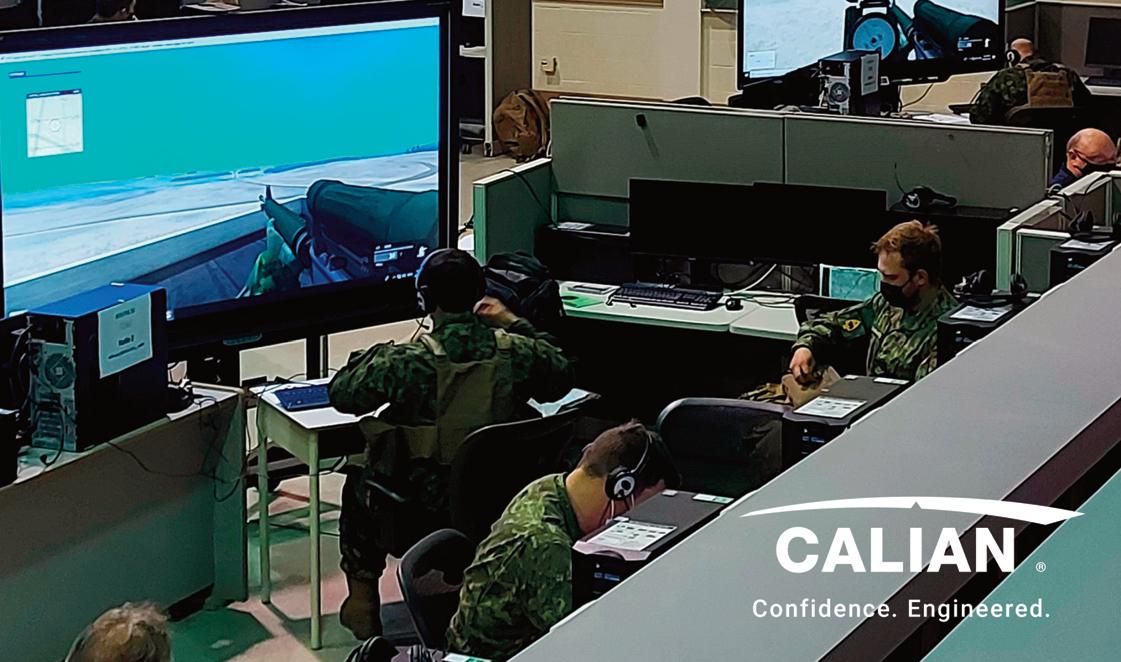
Designers and manufacturers of lightweight Level C CBRN protective clothing
OPEC CBRNe is an international brand based in the UK.
Drawing on a proud 50-year legacy, we design and manufacture a range of CBRN garments to accommodate di昀ering end user threats.
Our clients range from military to 昀rst responders.
Your protection is our priority.


As a global leader in IFF solutions, Adventure Tactical is thrilled to announce a new partnership with Galvion, a leading innovator in integrated head systems and intelligent power and data management solutions.
This collaboration aims to bolster both brands’ offerings and expand the array of accessories available for Galvion’s tactical helmet systems. This announcement coincides with the MSPO event in Kielce, Poland, from September 3-6, 2024, where Adventure Tactical will showcase these new partnerships and their extensive product range at the Canada Pavilion.
Adventure Tactical and Galvion are dedicated to advancing military and tactical capabilities. Both companies focus on modularity, interoperability, and flexibility in their designs, ensuring seamless integration with other products. By fostering collaborations, they aim to provide superior integrations, enhance soldier systems, and drive industry innovation.
Galvion:
The BATLCHK™ program features a comprehensive range of capability-enhancing products and accessories designed to integrate with Galvion’s Tactical Head Solutions and Power & Data Management systems. Whether through joint product development, system
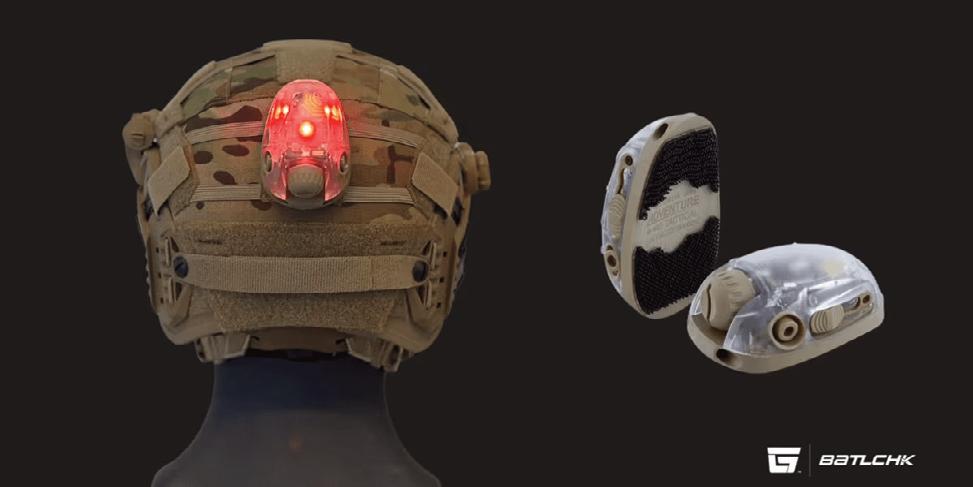
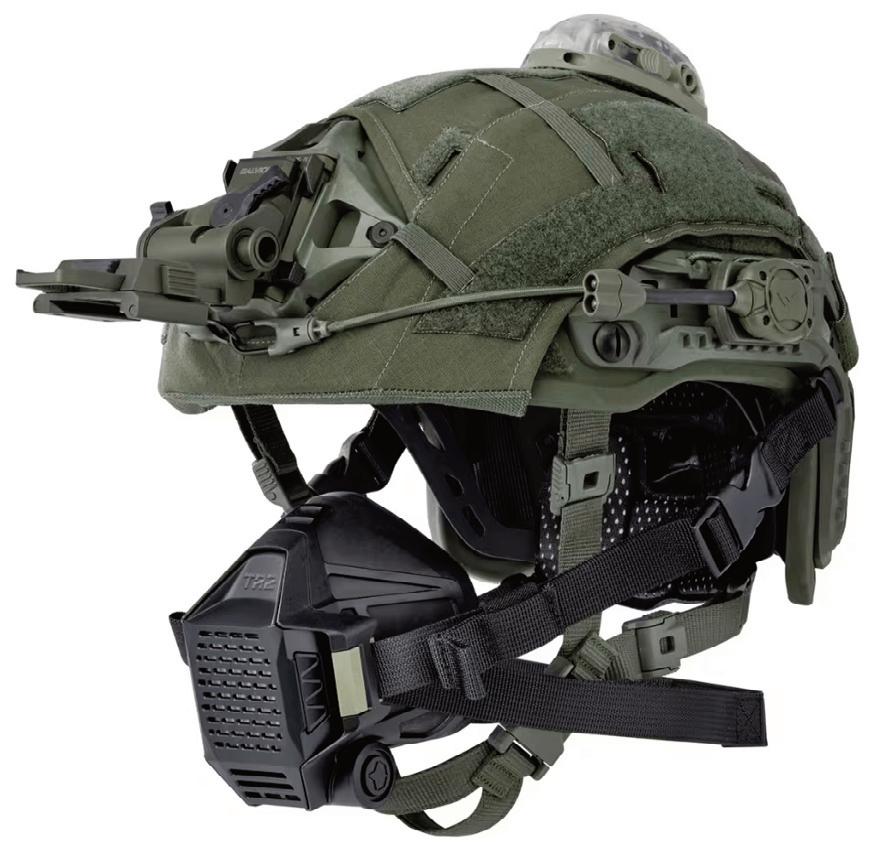

products and accessories, the goal remains to boost warfighter agility and survivability.
BATLCHK™ Includes:
Adventure Tactical – Trilobyte™ Helmet Light Ventus Respiratory Technologies™ – TR2™ Respirator 4D Tactical™ – Night Vision SOF Cap
Todd Stritzinger, CEO of Galvion, stated: "Partnering with companies like Adventure Tactical, Ventus Respiratory Technologies, and 4D Tactical allows us to broaden our accessory offerings and deliver a more comprehensive range of integrated products. We are excited to present these innovations and provide select items through the NSPA framework contract."

portfolio that includes Personnel Recovery and Identification Systems, Vehicle Identification and Safety Systems, Expeditionary Landing and Drop Zones, as well as renewable energy and man-portable power systems. Their mission is to enhance safety and operational effectiveness through innovation. With ISO 9001:2015 certification, Adventure Tactical upholds high standards of quality and performance across all its offerings.
For more information about Adventure Tactical's new partnerships and upcoming product offerings, please visit our website.
www.adventuretactical.com
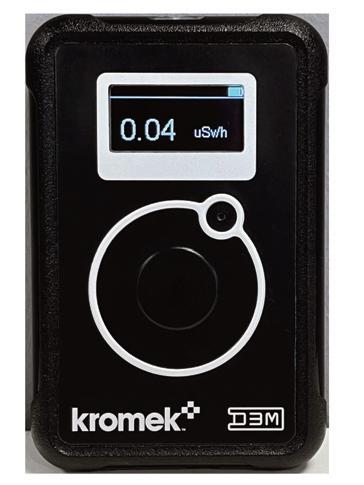

When illicit radioactive material crosses a border, or airborne radiation releases arrive from nuclear incidents or attacks overseas, we must be prepared. Although unlikely, the potential outcomes of such events are substantial as outlined in the UK 2023 Risk Register. They could include long-term health effects, environmental contamination and disruption to food production, import and export and other domestic/international transport systems and possibly a panicking population.
Reliance on reactive responses and no access to immediately available data exacerbated the short and long-term consequences on human and environmental health in past radiological and nuclear incidents such as Chernobyl 1986 and Fukushima 2011. These effects

extended beyond the country of origin in the case of Chernobyl, with lasting impact.
Developing and implementing strategies to bolster Radiological & Nuclear (R&N) detection and incident management capabilities proactively strengthens borders and emergency response, minimises the longevity and significance of the effects of an R&N incident when and if it occurs, and maximises the safety of people and infrastructure. High-performance radiation technology can provide the dose, count and spectroscopic data needed for essential immediate response and radiation monitoring capabilities.
Kromek has the solution.
Equipping border personnel with the high-performance personal radiation detectors (PRDs), such as Kromek’s D3M and D3S, facilitates immediate action to keep the public and border team safe.
Lightweight and wearable, these PRDs are an unnoticeable, simple addition to everyday safety equipment, yet provide the essential capabilities of constant monitoring and instant alarms whenever a gamma or neutron-emitting radioactive source is detected.
The D3S ID supplies users with the extra capability of real-time isotope ID, informing context-specific action on the ground discreetly




to enable this extra capability of real-time isotope ID as well.
Unlike other PRDs on the market, the D3M can also store key spectral data, for later extraction and analysis by CBRN specialist teams to accurately inform next steps e.g. remediation procedures.
The D5 RIID, the smallest and lightest RIID, packs everything into one ruggedised device. Illicit material can be seized with speed and precision using the D5 RIID’s ability to rapidly identify and locate radiological sources. Its medium resolution and high sensitivity enable a definitive confirmation of radioisotopes present in weak, mixed, shielded and heavily masked sources, ensuring no illicit radioactive material goes amiss or is moved illegally. NORM suppression and the ability to set dose rate thresholds supplies users with operational flexibility.
The Remote Mode of the D5 RIID allows the detector to be mounted on any UGV, ensuring operator safety by distancing the user from harmful radioactive sources and high-risk environments where an R&N incident or release may have occurred. Agnostic data is delivered in real-time to the remote operator via a wired or wirelessly connected device, whilst ANSI N42.42 data files can be sent to remote technical authorities for secondary adjudications.
Not only can the D5 RIID be mounted on UGVs, but along with the D3M and D3S, it can also be fixed on vehicles ranging from patrol vehicles to armoured personnel carriers, tanks and boats. Having the detectors on these vehicular platforms allows large areas to be checked for R&N threats, and rapid emergency responses initiated, with those inside also equipped and ready to act once the alarm has been sounded. Simple to set up and use almost immediately with automatic calibration, no minutes are wasted in time-dependent situations with Kromek’s D range of radiation detectors.
The ability to integrate each detector into existing alarm networks and communications systems enhances situational awareness and the rapid passage of information, providing remote decision-makers with a comprehensive view of the entire situation to better coordinate next steps.
Always ready, always prepared, static detectors can be set up in key locations for constant monitoring of R&N threats.
PSI’s modular, networkable static PERM detector can quickly be assembled into gantry installations or stanchion configurations to monitor target areas with high vehicle or foot traffic. Its novel detection algorithm and large volume NaI scintillator with high sensitivity maximises the detector and identification of radioisotopes in low SNR conditions and in sources concealed within vehicles on the move.
For emergency release monitoring across large areas, Kromek’s Static Nodes go beyond simple radiation dose measurements and hourly readings, maximising the extent of information available about the affected area with high quality spectroscopic data for more effective emergency response and decontamination strategies. The Static Node
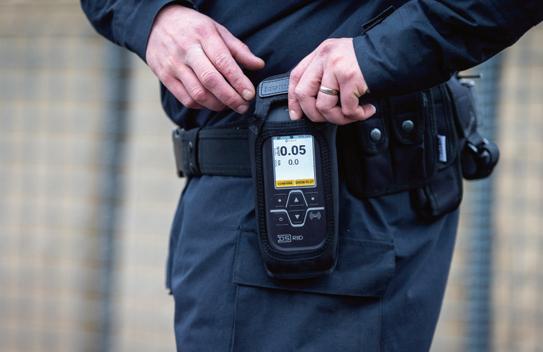
R continuously supplies extensive spectral data such as the exact radioisotopes present to remote decision-makers via robust satellite communications, with flexible battery options reducing the risk of interruptions.
Only taking 15 minutes to set up and being rapidly relocatable, these ruggedised, self-contained detectors can be stationed anywhere, no matter how remote or war-torn the location. Border posts and critical infrastructure e.g. industry plants, electricity-generating plants, around cities, communication nodes or key transport facilities can all be under constant surveillance.
The in-built automated health monitoring and calibration sends an alert to the network if the detector is out of calibration, further saving time in unnecessary maintenance checks.
Reliably supplying radiological data in the harshest conditions
Further expanding the versatility of the proven Static Node system design is the high dose sensor, far exceeding current competitor capabilities by offering reliable dose detection of up to 100 Sv/h. Quality spectral measurements can be consistently taken, even in the most high-dose environments.
As geopolitcal unrest and conflict including terrorist activity continues, the unlikely risks in the UK 2023 Risk Register are getting closer to the likely. By implementing diverse R&N detection, identification and monitoring systems across our borders, we are prepared to counter these risks, and ensure strategies in place are adaptable to the incident at hand with extensive spectral data available in the field, and accessible to remote decision-makers and/or response authority.
Be prepared to protect your nation..


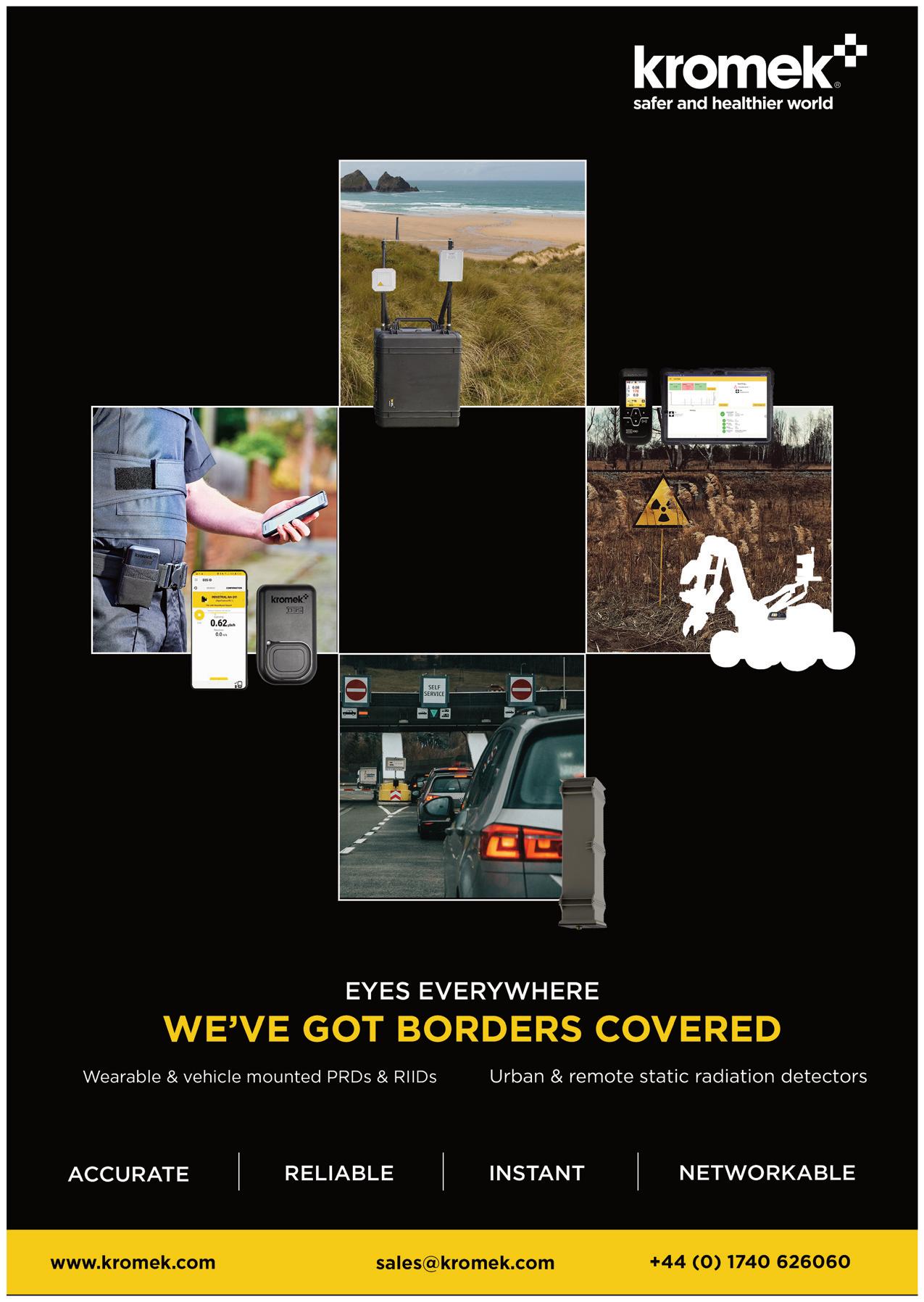

Leonardo DRS’ air surveillance AESA radars are the system of choice for current & emerging tactical Integrated Air & Missile Defense weapon systems, whether they are focused on guns, missiles, directed energy, or other threat defeat technologies. Our radar systems are also ideal gap-昀llers, complementing medium and long-range air surveillance systems for maximal protection on the battle昀eld.

